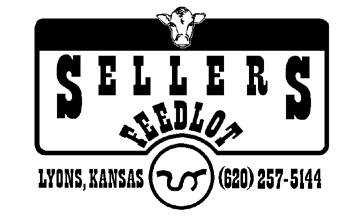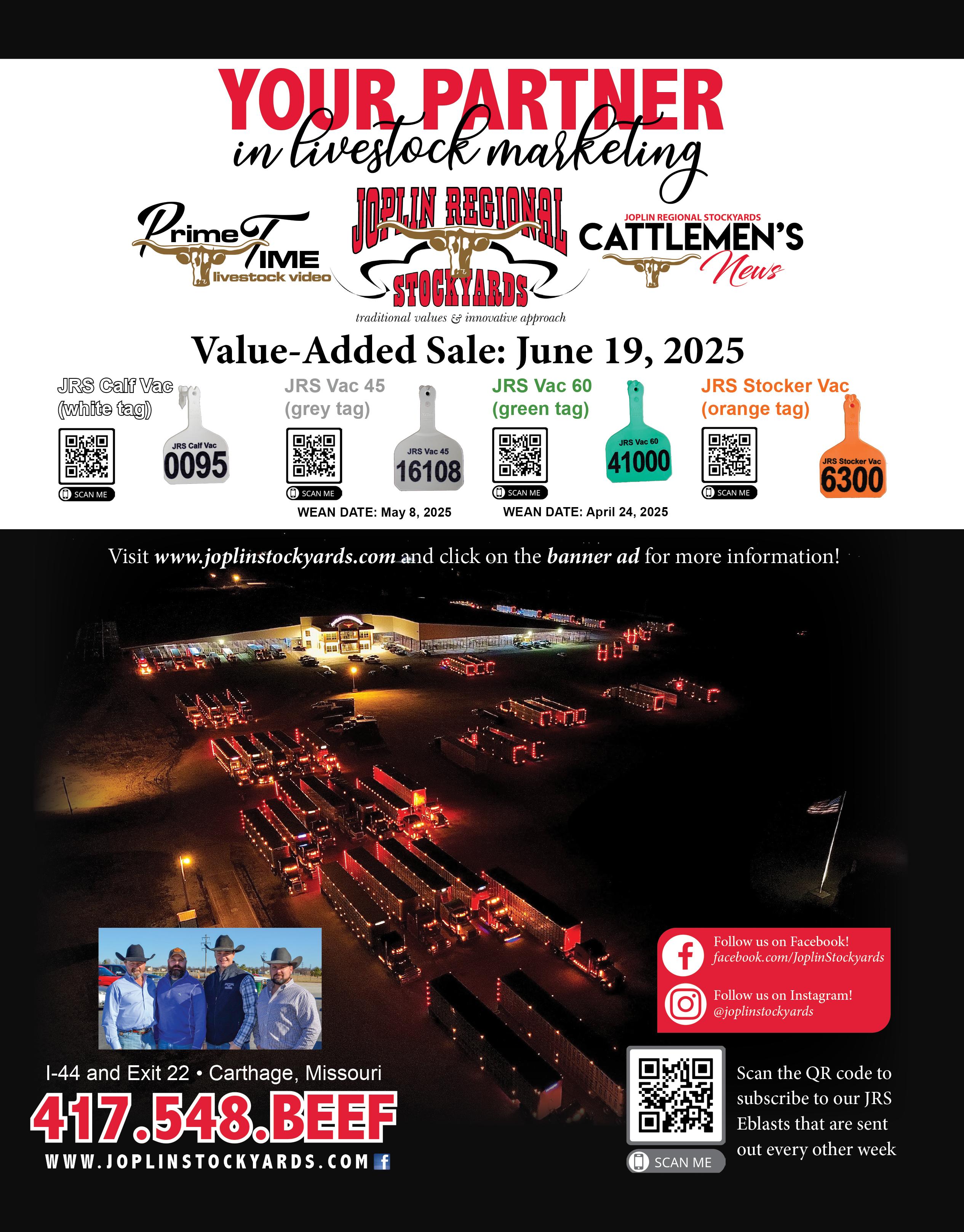





DEPARTMENTS









Volume 54 - Issue 4 (USPS
Magazine Publishing Office 2306 Bluff Creek Drive, #100, Columbia, MO 65201 Phone: 573-499-9162 • Fax: 573-499-9167
Andy Atzenweiler: Editor/Production/Ad Sales 816-210-7713 • E-mail: mobeef@sbcglobal.net
Missouri Cattlemen’s Association MCA Website: www.mocattle.com
Mike Deering, Executive Vice President - Ext 230
Mike@mocattle.com
Aly Francis, Manager of Strategic Solutions – Ext 235 Aly@mocattle.com
Miranda Howard, Manager of Membership – Ext. 231 Miranda@mocattle.com
Lisa Stockhorst, Administrative Assistant – Ext 234 Lisa@mocattle.com
Missouri’s CattleWomen
http://mocattle.com/missouricattlewomen.aspx
Missouri’s Cattlemen Foundation www.mocattlemenfoundation.org
Jeff Reed, President 903-279-8360 • P.O. Box 35, Williamsville, MO 63967
Anita Vanderwert, President-Elect 573-808-3000 • 4902 Conchero Ct., Columbia, MO 65203
Charlie Besher, Vice President 573-866-2846 • RR 5, Box 2402, Patton, MO 63662
Marvin Dieckman, Treasurer 660-596-4163 • 28998 Hwy JJ, Cole Camp, MO 65325
Deb Thummel, Secretary 660-541-2606 • 12601 Hwy. 46, Sheridan, MO 64486
Region 1: Ethan McNeill, 325 McMurry St. Paris, MO 65275 636-544-9943
Region 2: Blake McDonald, 250 Clonts Rd. Sullivan, MO 63080 • 573-205-7914
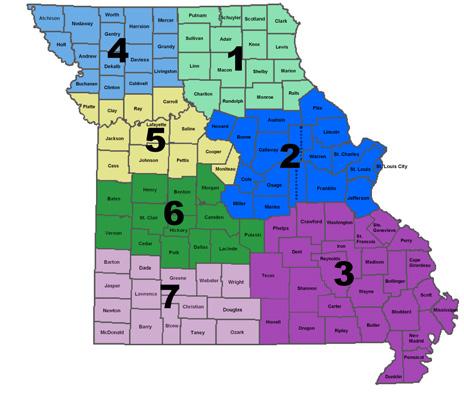
Region 3: Jack Davis, 21855 Siebert Rd. Ste. Genevieve, MO 63670 • 573-330-2928
Region 4: Dale Buhman, 3751 SW Taylor Rd. Clarksdale, MO 64430 • 816-244-9249
Region 5: Alex Haun, 1031 SW 600 Rd Holden, MO 64040 • 816-345-0005
Region 6: Warren Love, 8381 NE Hwy ZZ Osceola, MO 64776 • 417-830-1950
Region 7: Josh Worthington, 401 N. Dade 231 Dadeville, MO 65635 • 417-844-2601
Region 2 - Doug Mertens 573-489-5261 doug@mocattle.com
Region 3 - Kenneth Ball 417-818-6400 kenneth@mocattle.com
Region 4 - Sarah Kenyon 417-300-2976 sarah@mocattle.com

It is almost time for the “can’t miss” weekend of the summer. The weekend will include both the 42nd Annual MCA All-Breeds Junior Show and the 3rd Annual MJCA Replacement Heifer Show & Sale. The expo will feature long-held traditions such as the MJCA Photo Contest, MJCA board interviews and elections, and the MJCA annual meeting while also bringing in new opportunities for junior members to feature their hard work at the state level. To learn more about both events, please turn to PAGES 31-35 or visit mocattle.com under junior programs.
The Cattlemen’s Steak Fry will be held on Saturday, June 14. Join us for a great steak dinner, raffles, live and silent auctions, and great conversation. You’ll find the details in this month’s magazine and on our website. This event is open to the public and we welcome any and all people who wish to celebrate Missouri’s beef industry. Funds raised will benefit the MCA Political Action Committee to help elect leaders who understand and value agriculture to guide our state’s policy, now and in the future. For more information and registration instructions, see PAGE 36.
The 2024 Top Hand awards have been announced. Five levels of awards will be offered to members that have recruited 3, 5, 10, 20 and 50 new members to the association. Each of these levels is accompanied by a certificate that is good towards items in the MCA General Store, 2026 Missouri Cattle Industry Convention & Trade Show registration, or toward the purchase of steak fry silent/live auction items, and/or convention silent/live auction items. To learn more about the 2025 Top Hand program, see PAGE 77.
We are partnering with Show-Me-Select again this year for an exclusive new member promotion drawing. All new Missouri Cattlemen’s Association member will be entered to win in a drawing for a $2,000 credit to a ShowMe-Select Replacement Heifer sale. To be considered a new member, you must not have been an MCA member within the last 12 months. Credit must be redeemed in the same calendar year at any of the spring or fall sales. Learn more on PAGE 86.
We are excited to be working with Merck Animal Health on the Cartridges for Cash program to raise funds for our association’s junior programs. We want to challenge our affiliates to a competition. The group that collects and turns in the most cartridges will win a $1,000 scholarship to award to a junior member of their choice. Each county should collect the Ralgro wheel and Revalor cartridges used by their members and bring them to either one of the Board of Director’s meeting held each quarter or to the annual convention in January. We will keep a tally of the cartridges collected from each county throughout the year and the winner will be announced at the 2025 Missouri Cattle Industry Convention & Trade Show after all cartridges are counted.
Anna Hilkerbaumer, Union, MO
Michael Burton, St. Louis, MO
Vicki Roy, St. Louis Lambert International Airport, St. Louis, MO
Nicole Haake, Wright City, MO
Linda Fitzgerald, Bayles Farm, Bonne Terre, MO
Megan Hahs, Friedheim, MO
Brain Gray, Jackson, MO
Greg Gholson, Jackson, MO
JT Broshuis, Leopold, MO
Cody McGrew, McGrew Cattle Company, Doniphan, MO
Ruth Plazewski, Plazewski Farms, Lowndes, MO
Thomas Mershon, Odessa, MO
Kenneth Pfeiler, Pfeiler Family Farm LLC, Raymond, MO
Ralph & Kari Meyers, Warrensburg, MO
Charley Spillman, Bethany, MO
Kyle Johnson, Hill High Farms, Clarksdale, MO
Cory Schrick, Easton, MO
Mylee Schrick, Easton, MO
Matt Shurvington, Maryville, MO
Arlee Sobotka, Ravenwood, MO
Aubree Sobotka, Ravenwood, MO
Marcy Sobotka, Ravenwood, MO
Jenny Patterson, St. Joseph, MO
Landon Ward, Browning, MO
Brad & Katie Miller, Laclede, MO
Kailynn Miller, Lacelede, MO

Derek Search, Linneus, MO
Chris Wright, Joplin, MO
Jeremiah Brewer, White Farm Goodman, Anderson, MO
Perry Morgan, Anderson, MO
Jeremy Tucker, Tucker Cattle Co. LLC, Asbury, MO
John Watkins, Stark City, MO
John Henkle, Henkle’s Ace Hardware, Webb City, MO
Bruce & Kathy Lent, Prairie Home, MO
Dustin Moore, Auxvasse, MO
James Coleman, Boonville, MO
Jayln Barb, Edwards, MO
Mark Rieckhoff, Houstonia, MO
Neil Eckhoff, Lincoln, MO
Preston & Bailey Wittman, Otterville, MO
Alexa Hall, Dixon, MO
Kristiana Rushing, Salem, MO
Hutson Funeral Home, Steelville, MO
Lindsie Schmidt, Steelville, MO
Castle Spieker, Aurora, MO
Richard Asbill, Hidden Rock, Cassville, MO
Kanton Fisher, Half Way, MO
Stacy Monter, Cabool, MO
Jason Williams, Williams Farm Operations, LLC, Marshfield, MO
Zachary Laney, Laney Dairy, Pleasant Hope, MO
Jennifer Poor, Pomona, MO
See the MCA Membership Form on page 83.

Optimistically Positive. These are the words I used before meeting with the Environmental Protection Agency Administrator Lee Zeldin.
I recently had the opportunity to attend a small roundtable discussion with the Administrator of the Environmental Protection Agency. Lee Zeldin seems like a breath of fresh air. He even jokes about creating t-shirts that say, “I love the EPA.” I will hold off on purchasing my shirt. The agency has a long-standing tradition of promulgating overreaching rules and regulations that mirror a land grab.
Our discussions centered around the Water of the United States, Bio-Fuels, crop/pasture protection chemicals and their approval process, and waste water from slaughter facilities. The overarching theme delivered was producers care deeply for the environment as our livelihoods depend on it.
Heads of various commodity groups in Missouri, along with Director of Agriculture Chris Chinn, continuously spoke of uncertainty with new rulings and explained producers plan for not only seasons but years in advance.
Water of the U.S., dating back to the 1971 Clean Water Act, is hopefully nearing the end. With the Sackett decision, Administrator Zeldin made clear the EPA will follow the directive issued by the U.S. Supreme Court. Specifically, the “continuous surface connection” is extremely clear and will be adhered to by the EPA, ending the massive land grab.
Crop protection was a large topic. Zeldin explained to our group the backlog of expiring herbicides, along with new herbicides is daunting. I spoke specifically about a product we have been excited about for years, what was once ProClova, now named NovaGraze from Corteva. It took approximately seven years for this product to receive EPA approval with known and proven chemicals. The hoops overreaching bureaucrats pushed Corteva’s team to jump through for an absurd amount of time is inexcusable and was acknowledged in our meeting. New herbicides were discussed as well, and Administrator Zeldin spoke of restructuring the process
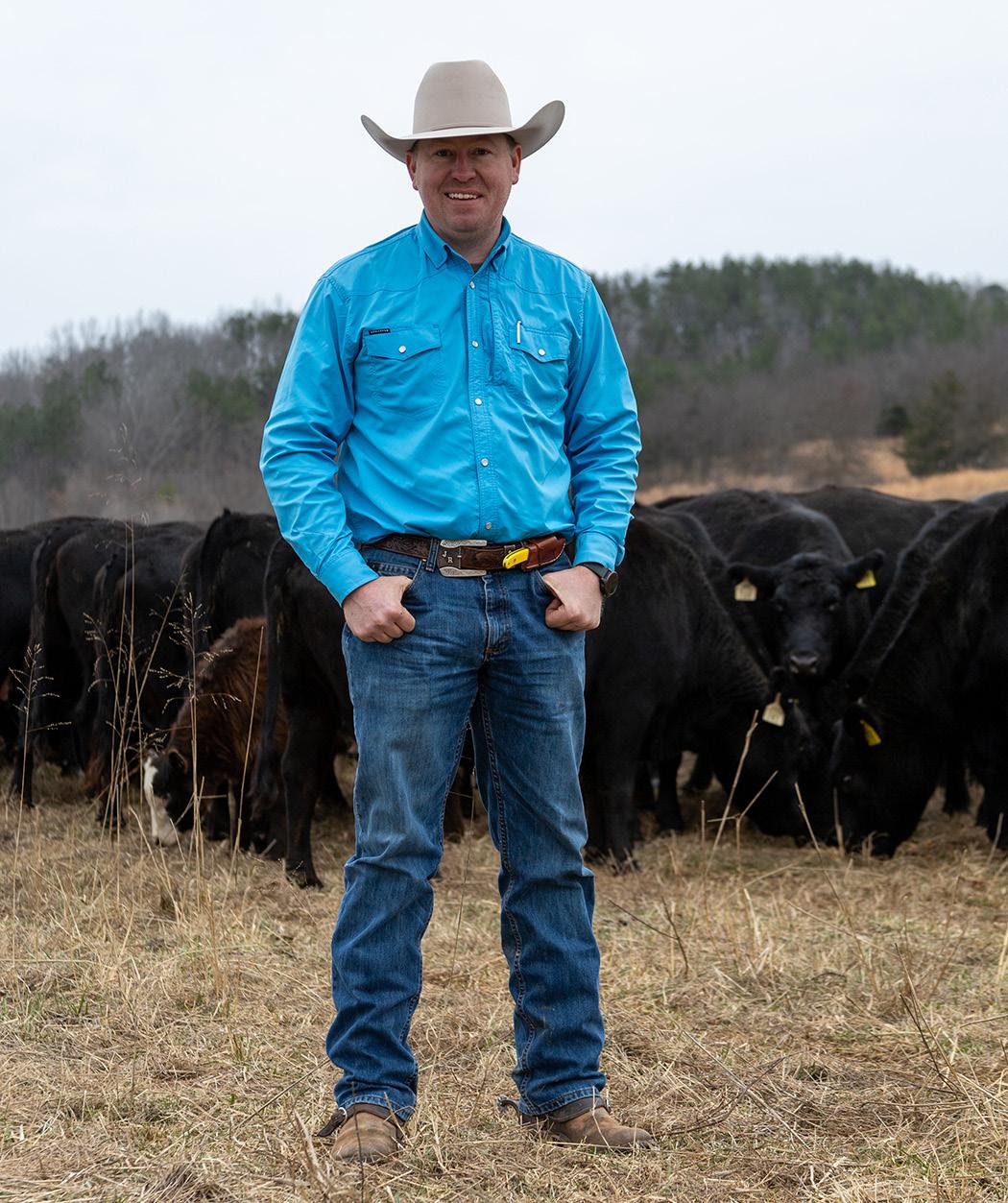
these herbicides go through. While he additionally stated, the herbicides must be safe, they will speed the process of approval or rejection along.
While there was continuous discussion regarding a variety of issues, Zeldin made clear the EPA’s mission is to protect the environment, but they will not overstep their authority with their rules and regulations. He simply stated the environment is first and foremost, but bureaucratic overreach was finished at EPA.
Due to time constraints, one item which will affect all our producers that was not discussed was diesel engine emissions. Administrator Zeldin has stated in press conferences these emission standards will be rolled back as well. I know this is good news when the reliability of tractors, pickups and semi-trucks has been crippled due to the current EPA standards. The words regen, diesel particulate filter and diesel exhaust fluid will hopefully evolve into words of the past.
At the end of the day actions speak louder than words and the EPA has a long way to go in creating trust with our producers who have been continuously targeted by overreaching bureaucrats. Administrator Zeldin used the word “durable” quite a bit when referring to rules and regulations of the organization. No matter the power that been in the White House, the EPA will be restricted in the future from overreaching policies.
Our association awards environmental stewardship through Missouri Farmers Care. We understand being good stewards is essential for the future of our industry and for the generations to come. I am hopeful of the long-lasting change which can be brought forward with this breath of fresh air from a long-viewed enemy of cattle producers.
As always stay safe and make sure you have a few good stories to tell.
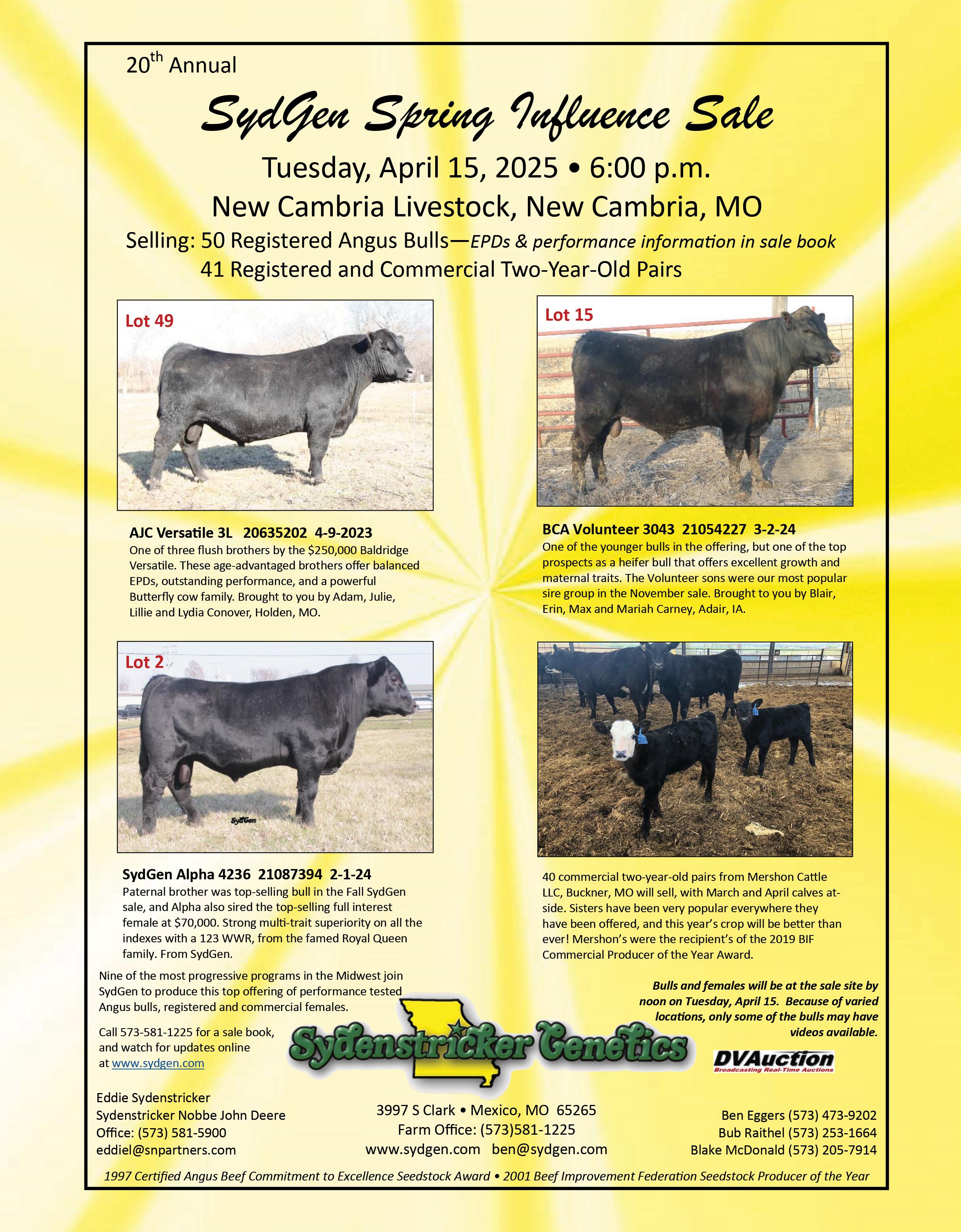

What is teamwork? The Merriam Webster dictionary defines teamwork as “work done by a group acting together so that each member does a part that contributes to the efficiency of the whole.” Communication within the group is key to teamwork. Without communication, your group fails.
A team can be two people working towards a common goal or it can be a group of people in committee or task force working towards a common goal. By being involved with MCW and MCA, you become part of a team of several different people and their personalities. Each person has to figure out how to put their egos aside
President: Jennifer Poor
417-372-0227 • poorfarmscattle@gmail.com • Pomona
President Elect: Darla Haines
573-473-6013 • darlahaines2003@yahoo.com • Mexico
Vice President: Mandy Weigand 660-909-6781 • weigandranch@hotmail.com • Warrensburg
Secretary: Terry Bettels
660-424-3444 • cbettels55@gmail.com • Butler
Treasurer: Mary Kay Lyle
816-387-1930 • marykaylyle@gmail.com • Savannah
Past President: Marsh Corbin
660-232-1836 • oldtrailsregion@gmail.com • Dover

and learn to listen to each other. Sometimes that is easy, but most times it is not; however, we have to remember why we volunteered in the first place. We love the beef industry and agriculture. Both of which should be priority number one! Without agriculture our society would collapse. It’s that simple.
Going to Cowboys at the Capitol is a prime example of teamwork. Each week MCA, MCW, MJCA, and/ or Collegiate members assemble in Jefferson City to meet with our state’s representatives and senators. Our informative, and dare I say fearless legislative guides, Nancy Giddens and Shannon Cooper, brief us on the pressing topics. We split up into our groups and visit with our assigned legislatures. This year, we have three issues that are policy priorities: landowner rights, water rights, and solar energy.
As farmers and ranchers, we deserve the right to protect our land, protect what grazes on it, and what grows from it. We should not be forced to allow companies to take from our land or take our land in the name of eminent domain and use it for profit at our expense! Missouri has a Public Service Commission who is responsible for hearing complaints and determining eminent domain. Currently, we have one rural representative on the commission and no farmer/ rancher representation. We need to change this! During Cowboys at the Capitol visits, it is our time to unite as a team to discuss these concerns with our representatives and senators.

Master the grill with this simple but flavorful Skirt Steak recipe. Served alongside an equally delicious corn salad.
Ingredients:
1-1/2 pounds beef Skirt Steak, cut into 4 to 6-inch pieces
1/4 cup red onion, diced
1-15 ounce canned corn, rinsed & drained
1 cup cherry tomatoes, cut in-half
1/3 cup Italian dressing
2 Tablespoon fresh basil, chopped
2 teaspoon granulated garlic
1 teaspoon freshly ground black pepper
1 teaspoon kosher salt
Marinade
2 Tablespoon vegetable oil
2 Tablespoon fresh lime juice
3 Tablespoon water
2 teaspoon garlic, minced
2 teaspoon sweet paprika
1-1/2 teaspoon dried thyme leaves
1 teaspoon garlic powder
1 teaspoon onion powder
1/2 teaspoon kosher salt
1/2 teaspoon black pepper
Combine Marinade ingredients in small bowl. Place beef Skirt Steaks & marinade in food-safe plastic bag; turn steaks to coat. Close bag securely and marinate in refrigerator 6 hours or as long as overnight, turning occasionally.
Combine tomatoes, corn, red onion, basil, garlic, Italian dressing, salt and pepper in a medium bowl; cover and refrigerate until ready to serve.
Cook’s Tip: Whole grilled corn on the cobb can be used in place of canned. Place 4 corn cobs on grid over medium, ash-covered coals. Grill, 10 to 14 minutes (over medium heat on preheated gas grill, 8 to 10 minutes) turning on all sides. Remove corn and let cool. Carefully cut corn kernels from cob and let cool.
Remove steaks from marinade; discard marinade. Place steaks on grid over medium, ash-covered coals. Grill, covered, seven to 12 minutes over medium heat on preheated gas grill, eight to 12 minutes for medium rare 145°F to medium 160°F doneness, turning occasionally. Carve steaks diagonally across the grain into thin slices; season with salt, as desired.

If you are a spring calver like we are, you are most likely on the tail end (no pun intended) of calving and are probably thinking about your spring herd work (note to self, I need to schedule our herd work with our vet.) Springtime is a fun and chaotic time. You are probably thinking about which cows to put with which bull, which cows or heifers to AI, which cows to cull, which cows to give one more last chance opportunity to “make the cut.” This is the time to work with your partner, if there is one or in my case my spouse, on the best decisions for your operation. There have been times I have threatened to quit if that nasty heifer doesn’t leave the farm and Jason has talked me off the edge and vice versa. It comes down to communication and compromise between the two of us. That’s what it takes to make a good team.
I guess my take away in this crazy, all over the place article is in order to be part of a great team, each member needs to effectively communicate with others. Without good communication, the common goal is lost.

Cowboys at the Capitol on Wednesdays See Schedule on Page 79
In the Old West, conflicts over water rights, often involving farmers and ranchers, led to range wars and other disputes, including the California Water Wars and the Johnson County (Wyoming) War, over control of land, livestock grazing, and water resources. The plot of the John Wayne classic, El Dorado, was a rancher’s bloodied battle to protect his water. Some of the most famous water fights date back to the 1800s, but you don’t have to go back that far to see conflict over water rights. Just look back to 2013 when Texas sued New Mexico over water rights from the Rio Grande. Here we are more than a decade later and the definitive outcome of that dispute is still in limbo.
We have watched these water fights play out in the West, often naive to the fact that we are next. Missouri is a fairly water rich state, and it is only a matter of time before western states will be looking at our water as a solution to their problems. We can wait for that to happen and then react, or we can be proactive and develop guardrails now to protect our water rights. Our association prefers the latter and that’s why we are supporting legislation driven by Rep. Cameron Parker (R-150), Sens. Jamie Burger (R-27) and Jason Bean (R25).
The bill prohibits exporting water resources outside our state unless the person holds a water exportation permit issued by the Department of Natural Resources. The DNR director must review each permit application to ensure the required conditions have been met prior to accepting a water exportation application for public comment and review by the Missouri Water Resources

Commission. In order to get a permit, there would have to be enough water present, and the proposal could not interfere with existing or proposed uses in our state. The applicant has to demonstrate need and make clear the intent.
The bill passed the Missouri House of Representatives with a bipartisan 114-35 vote. The bill got hung up in the senate. Some believe this bill weakens our water rights and basically creates a pathway for anyone to take our water. I am sorry, but this argument doesn’t hold water. I can usually understand where the opposition is coming from, but I do not get this at all. Right now, Missouri is wide open and fully exposed when it comes to water rights. We do not want states that are struggling for water capacities to pipe into our aquifers and pump water in any given direction whenever they feel the need.
This is a forward-looking bill to protect all Missourians – not just farmers and ranchers. While the problem may not be here today, it is absolutely lurking around in our future. It is only a matter of time. We have an opportunity to get ahead of it instead of being blindsided. Please reach out to your elected leaders and encourage them to support HB 1295 and Senate Bills 29 and 82.
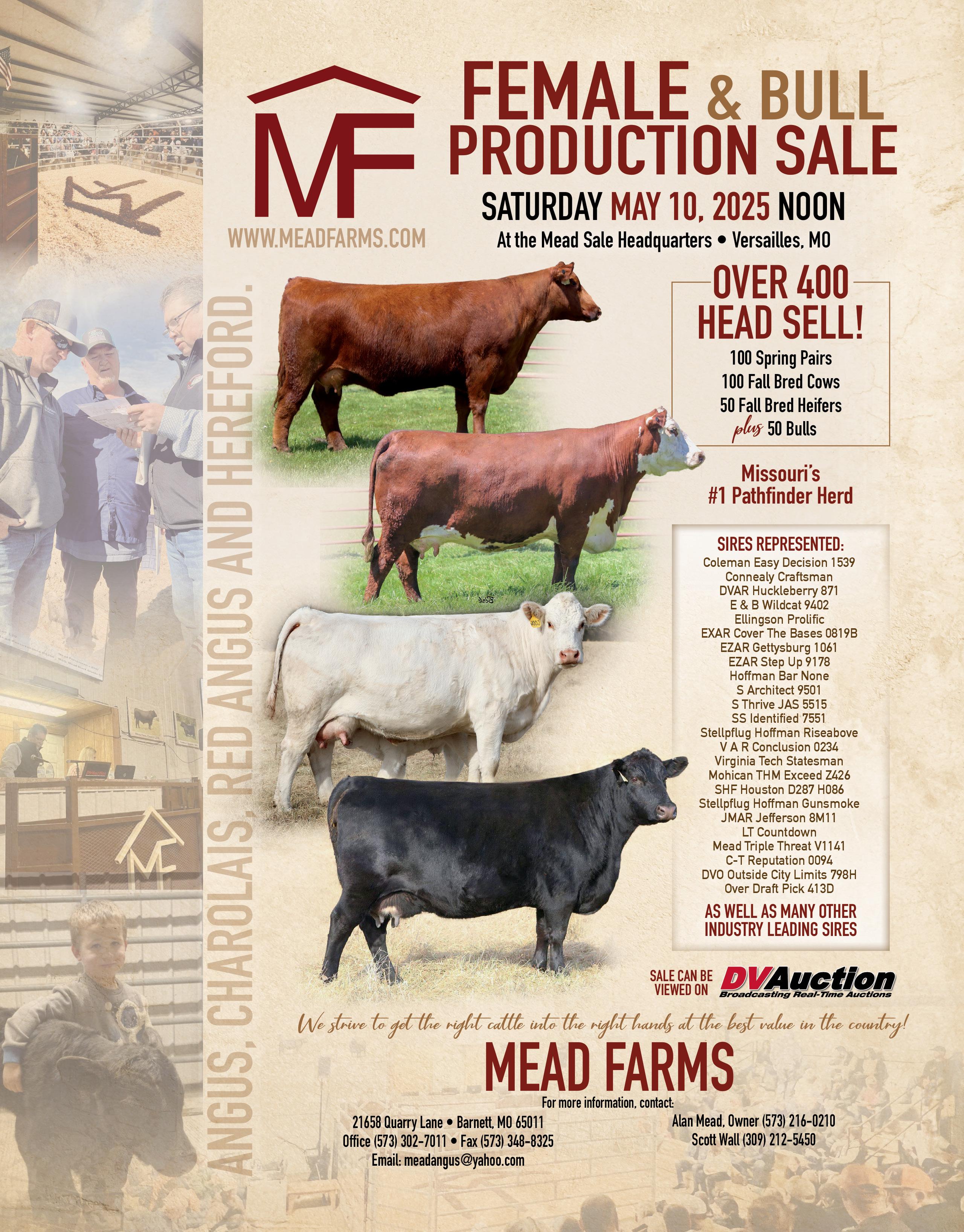
by Ethan McNeill, Region One Vice-President
As we move further into spring, I hope you have a blessed year full of healthy calves, green grass and barns full of hay. While these things are fun to think about as grass starts to green up and cows start to ignore the hay ring in pursuit of new shoots of grass, all of these things require hard work.
I say all this to point out we choose this livelihood because we appreciate the opportunity God has placed before us and we are not afraid of doing this hard work, even when it’s -20 and your waterer has frozen solid for the second time that day.
However, in my (short) tenure as a Region One Vice President, I find it interesting that one opportunity we do tend to stray from is Missouri Cattlemen’s Association Cowboys at the Capitol which is held every Wednesday during the legislative session. I understand we are all busy people, and our work schedules can make it hard to attend events such as this. However, I would bet that you have at least one Wednesday between the first week of January and the first week of May to make a trip to your state capitol building. While an annual membership helps to ensure we have a consistent presence in Jefferson City with our two lobbyists, I promise your representatives want to hear from the people that put them there.
Besides pushing for the association’s legislative priorities during the visit, you are also able to do something else amazing— advocate for agriculture. Only 2% of the American population are farmers and ranchers, and the majority of the 98% couldn’t tell you which side of the cow the calf comes from or that chocolate milk doesn’t come from brown cows. While attending events like this or working in the Missouri Beef House at the Missouri State Fair, you get the chance to be the face someone thinks of when they think of a rancher.
Region 1 VP - Ethan McNeill
Region 2 VP - Blake McDonald
Region 3 VP - Jack Davis
Region 4 VP - Dale Buhman
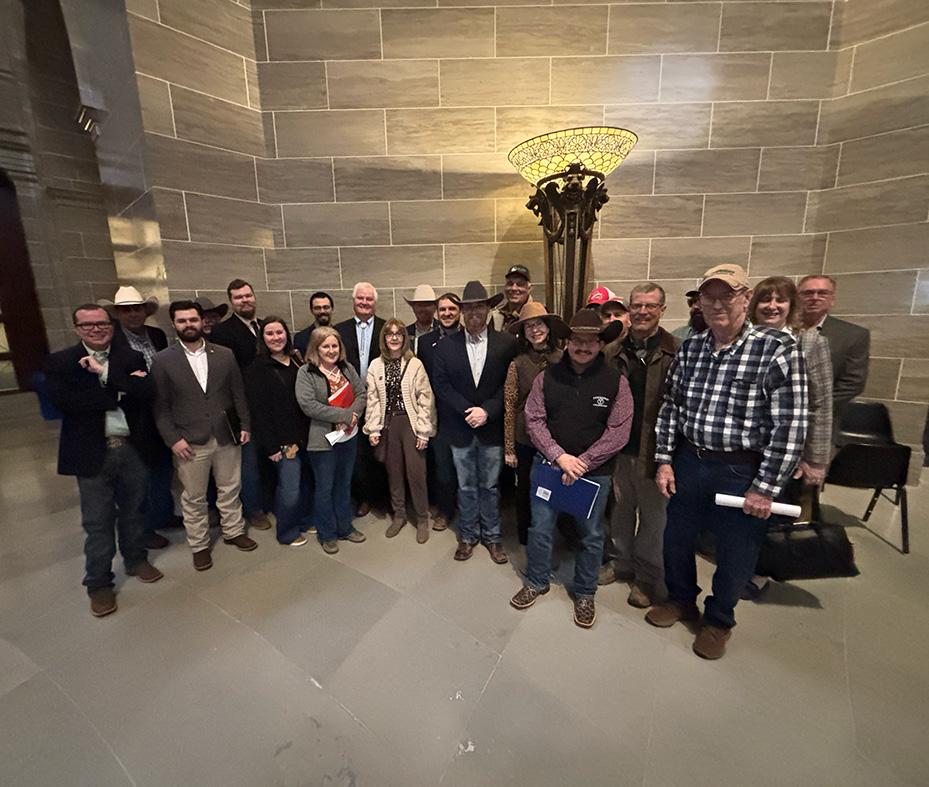
If you get on Facebook and start looking through videos of farmers, ranchers or even “homesteaders” you see thousands of comments from people who are genuinely interested in where their food comes from. You also see even more comments that have a false idea of what we actually do and how we treat our land and animals. Every day we have the chance to educate the public about our livelihood, why not speak with and educate the people that are making the laws and regulations helping/harming your livelihood?
I know life is hectic enough without adding more to your plate, but I sincerely believe that if you attend one Cowboys at the Capitol you will be back for more. I hope to see you there! See page 79 for Cowboys at the Capitol schedule.
Region 5 VP - Alex Haun
Region 6 VP - Warren Love
Region 7 VP - Josh Worthington
At-Large Rep. - Jarrod Simpson
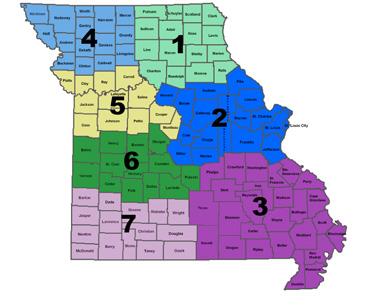
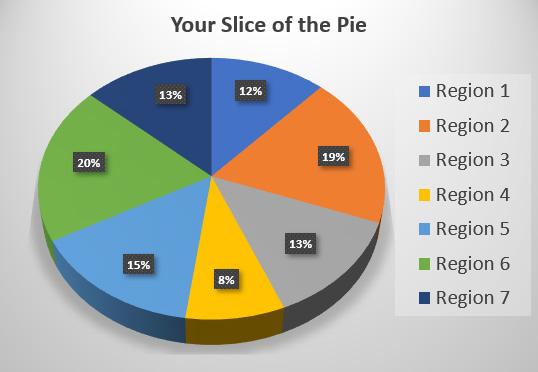

Grazing season is here, and we are fortunate as cattle producers to have a lawnmower furnished to us in the form of a cow. Cattle take the forage given to them and use it to make beef. The question is, are we maximizing the forages we have in our pastures? Are our pastures being managed to produce the quantity and quality of forage they are capable of? Also, are we allowing the plants time to rest to allow regrowth and replenishing of the root system?
Growing up we had one pasture and one hayfield. Our cows spent most of their time in one portion of the pasture due to being close to the water tank, especially during the heat of the summer. They would venture out further during certain times of the year when the creek had water in it, but for the most part they stayed close to that water tank. The consequence of this grazing pattern was one portion of the pasture was over grazed, and many other acres went untouched. The effect of this grazing pattern was evident over time, the stand weakened, more weeds appeared, and due to the lack of ground cover, water runoff from rainfall events were also apparent.
Cattle by their nature want the best forage and given the choice they will choose the tender regrowth over more mature plants. This grazing pattern impacts the plants because they must continually dip into the reserves stored in the root system to regrow and the continuous grazing doesn’t allow for the root reserves to be replenished. This is just like a bank account; you must keep putting money in or eventually the bank account is empty. In a pasture, as the root reserves are drawn

down, regrowth is slowed, and the available forage is reduced, and we can begin to see plants, that some call weeds, begin to take over.
Moving your cattle is the best way to allow your forage time to regrow and roots to be replenished. You may be thinking, I only have one pasture, so how can I accomplish this? There are options, temporary fencing is a possibility. Poly wire and step in post can allow you to divide a pasture up without taking too much time to accomplish. A water source can be a limiting factor and will need to be considered as you start this process. This is something that all the Regional Grazing Coordinators can help you plan. If you already have permanent fencing dividing your pastures, think about how you can move your cattle through those smaller areas again to provide rest and regrowth to the grass. There are ways you can estimate the amount of forage in your fields which determines how often you will need to move your cattle.
There are benefits for your pastures. Having cover on your pastures will help reduce erosion and allow more water to soak in the soil instead of running off into the creek. I have watched rainfall simulation demonstrations at several meetings recently. It is eye opening to watch this demonstration and see the differences in the amount of cover on the soil whether water runs off or soaks into the soil. Our goal should be to have as much rainfall as possible soak into the soil. If you haven’t watched this demonstration, it’s worthwhile to either catch it at a field day or you can find YouTube videos of it online.
Allowing your pastures time to regrow and replenish roots will help keep the pasture healthy and productive for a long time.
For help with management of native grass, or for help identifying plants or weeds (feel free to text pictures) contact Missouri Cattleman’s Association Grazing Coordinators:
Region 2 • NE MO
Doug Mertens
Doug@mocattle.com
573-489-5261
Region 3 • SE MO
Kenneth Ball
Kenneth@mocattle.com
417-818-6400
Region 4 • SW MO
Sarah Kenyon, Ph.D.
Sarah@mocattle.com
417-300-2976
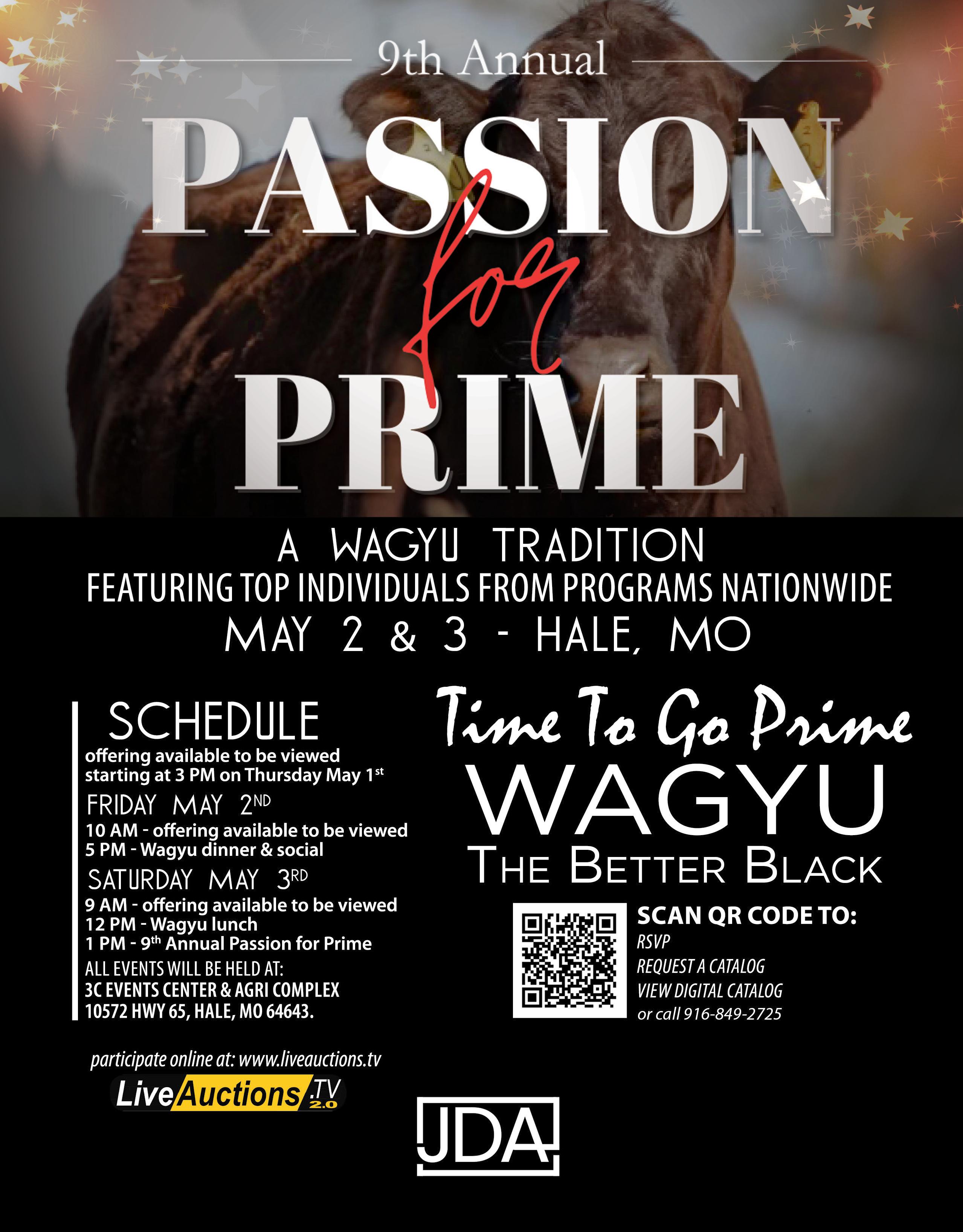
By Pat and Patty Wood, MCA Beef House Managers
Abigayle Lett, Odessa FFA Chapter, delivered her speech “Celebrating Tradition and Community: The Legacy of the Beef House” at the Fall 2024 Missouri Cattlemen’s Public Speaking Contest in the Missouri Central District division. Thanks Abigayle for sharing “Summer’s Best Story”!
With one mission in mind, The Missouri Cattlemen’s Association established the Missouri Cattlemen’s Beef House in 1982. The mission was to promote the Missouri beef cattle industry at the Missouri State Fair. After almost 40 years of a successful and thriving Beef House, it was only fitting that this year the Missouri State Fair theme was “Summer’s Best Story.” The Missouri Cattlemen’s Association couldn’t think of a better way to celebrate than by continuing the longstanding tradition of serving fair goers and sharing the most memorable stories of the Beef House. Providing a platform to highlight the quality of Missouri beef and fostering connections between consumers and local producers. The Beef House also promotes the interest of local Cattlemen and strengthens the overall beef industry in our state. Volunteers from across Missouri cultivate a sense of community and shared purpose. Celebrating over 40 years of tradition and creating a lasting legacy in Missouri beef.
As an employee during the Missouri State Fair, I watched as hundreds of volunteers from across the state including Missouri Cattlemen, Missouri CattleWomen, Missouri Junior Cattlemen, and FFA Chapters came together to help at the Beef House. These volunteers help to make sure every meal is made to perfection! Each volunteer brought unique skills and stories, making every shift an unforgettable and life-changing experience. All that is done at the Beef House is done to promote the beef industry and Missouri Cattlemen.
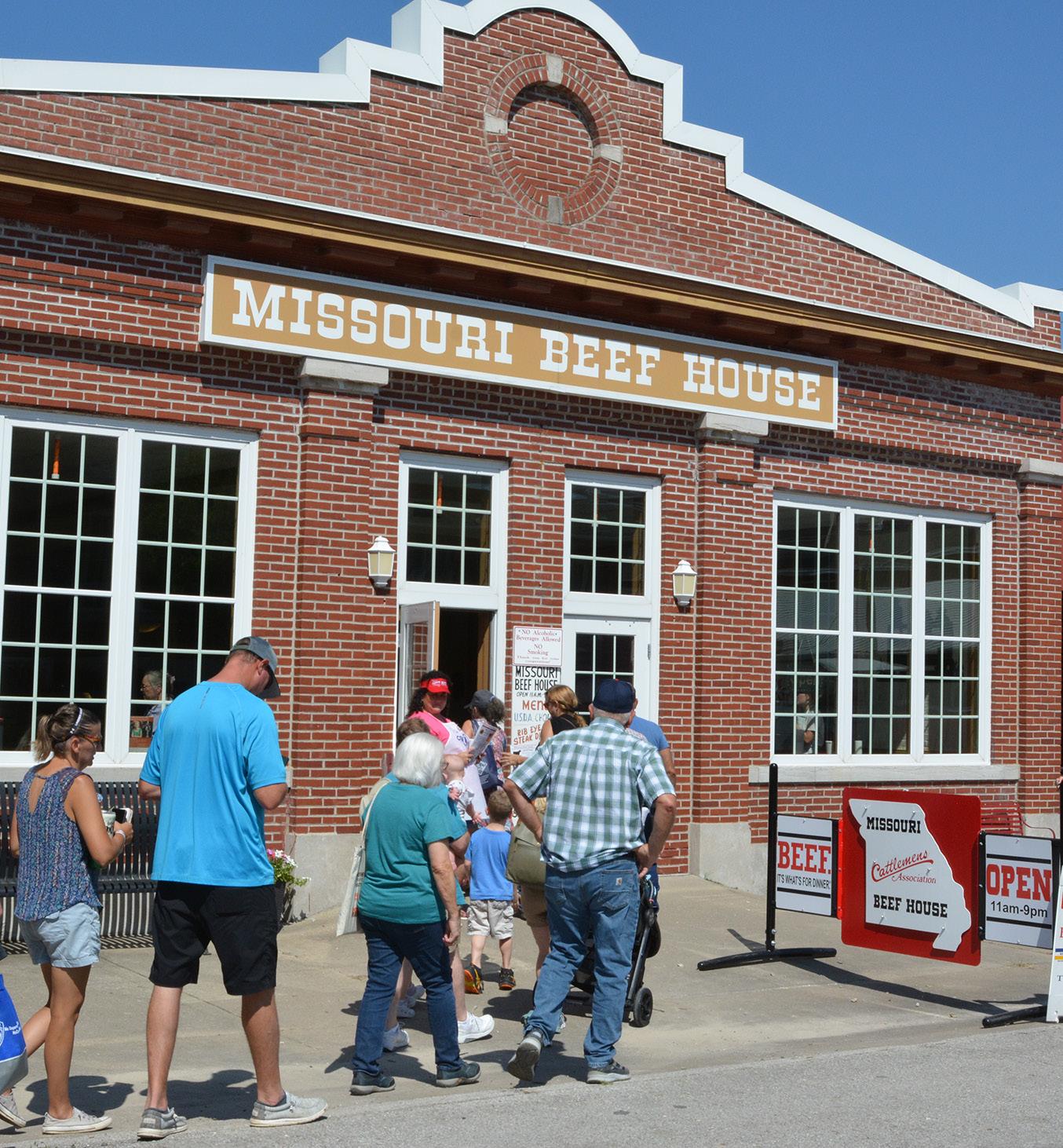
This year during the Missouri State Fair the Beef House served 9,064 ribeyes, 6,000 hamburgers, more than 1,500 BBQ Beef Entrees, and in excess of 1,000 beef hot dogs along with hundreds of steak salads and beef sticks (Missouri Cattlemen’s Association, 2024). Without these amazing volunteers, none of that would have been possible.
Tradition is a vital link between generations, weaving together the stories, values and customs that shape our communities. It provides a sense of continuity and belonging, allowing individuals to connect with their heritage and share meaningful experiences. In places like the Beef House, tradition is celebrated through the shared enjoyment of food and creating lasting memories. These time-honored practices not only enrich our lives but also help preserve the essence of our culture. Embracing tradition creates a sense of pride and reinforces the bonds that unite us in our history and our future.
The Missouri beef industry is supported by several other network associations that aim to enhance the beef industry and support local cattle farmers; the Missouri Cattlemen’s Association advocates for favorable policies and offers educational resources. While the Missouri Beef Industry Council focuses on marketing beef products and funding research on sustainability to meet consumer trends. Additionally, the Missouri Junior Cattlemen’s Association fosters leadership among young producers through scholarships and competitions.

Lastly, The Missouri CattleWomen contribute by promoting beef nutrition, engaging in community outreach, and empowering women in agriculture. Together, these organizations play an important role in ensuring the continued success and growth of the beef industry in Missouri (Missouri Beef, 2024).
According to the Missouri Cattlemen’s Magazine, the idea for the Beef House was developed by three passionate cattle producers. They envisioned a space that would not only serve delicious beef, but also educate fairgoers about the industry. Nearly a decade after establishing the Beef House they began searching for a permanent location. To this day the Beef House remains in that location in the heart of the Missouri State Fair Grounds (Missouri Beef, 2024).
In 1994, the Beef House was expanded with the addition of the Beef House Depot. The depot serves delicious beef meals to fairgoers walking by who do not have enough time to dine in. Major renovations took place in 2003, with the Missouri State Fair funding updates to the building’s front and the Cattlemen financing kitchen improvements. The following year saw the addition of a concrete patio and breezeway, along with a unique promotion: if customers couldn’t find a place to sit, their meal was free (Anonymous, 2024).
In 2005, a more permanent structure was built to enhance outdoor seating. The staff has always prioritized customer feedback. This led to the renaming of the Beef House Depot to being renamed to the “Beef House Express” in 2013, creating a stronger connection to the main restaurant. This ongoing evolution highlights the Beef House’s dedication to quality service and community involvement, as explained in the Missouri Cattlemen’s Magazine (Anonymous, 2024).
This summer, I was able to spend my first summer at the Beef House. My time at the Beef House was amazing.
Working with the volunteers was one of the best parts. The Beef House staff treats everyone like family and I’m so happy I got to be a part of that. Each day was an opportunity to learn, grow and contribute to something greater than myself. While at the Beef House, you can tell that it is structured around its volunteers making sure they are comfortable. The main focus is making sure that the customers enjoy a delicious beef meal in a friendly environment. After caring for the customers, the workers need to make sure the volunteers enjoy working at the Beef House and making sure that they have a chance to enjoy a free meal.
At its core, the mission of the Beef House is to promote the Missouri beef cattle industry by serving premium beef to fairgoers. This mission shapes everything we do, ensuring that visitors enjoy high-quality meals while learning about the importance of local beef production.
The Beef House plays a crucial role in the promotion of beef. It stands as a testament to the enduring spirit of community, the traditions in our industry, and the passion of beef producers across our state. For over 40 years, this establishment has been cherished as a place where producers can foster connections with consumers. Consumers look forward to visiting the Beef House each year to enjoy the camaraderie and delicious food. Through educational events, community engagement, and shared stories, the Beef House has enhanced awareness and appreciation for local agriculture. The dedication of our volunteers highlights the collaborative efforts needed to keep this mission alive. We strive to ensure that every visitor leaves with a sense of belonging and appreciation for local beef. As we celebrate the legacy of the Beef House, we must continue to support its mission, work to preserve its traditions, and promote the benefits of education that come from the “Summer’s Best Story”, our Missouri Beef House.
by Abigayle Lett
Missouri Cattlemen’s Association
Public Speaking Contest
Missouri Central District FFA
Odessa FFA Chapter
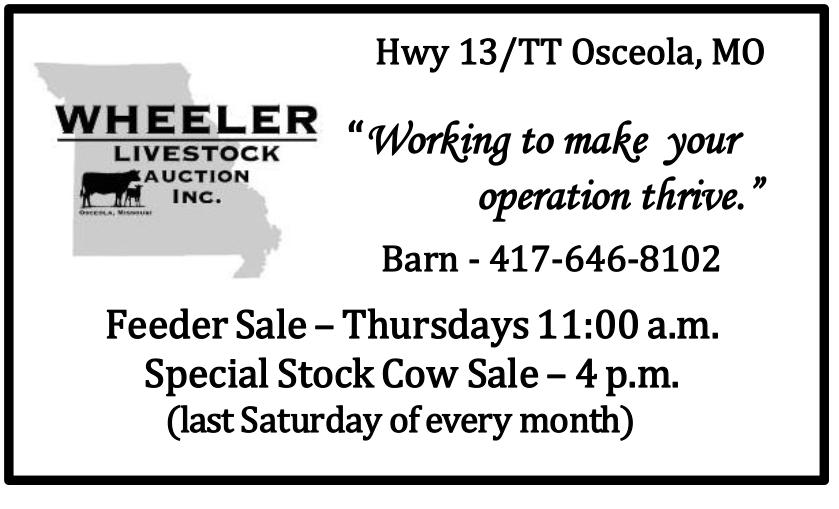
Mark your calendars for the 2025 Stockmanship & Stewardship event in Springfield, Missouri, from September 5 – 6, 2025. This event promises to be an enriching experience for cattle producers of all sizes and expertise levels, offering a blend of practical workshops, updates on the latest trends, live demonstrations, and a Beef Quality Assurance certification opportunity.
The event kicks off with a comprehensive half-day, onfarm enhanced biosecurity walkthrough and workshop. Biosecurity is a critical aspect of cattle management that cannot be overlooked, regardless of the size of your operation. Understanding how daily biosecurity works to enhance biosecurity, which is needed in case of foreign animal diseases like foot and mouth, is critical for anyone in the cattle industry. This session will focus on FMD as an example and provide attendees with insights into maintaining a secure and healthy environment for their cattle. Participants will learn about how a potential FMD outbreak in the U.S. will affect the livestock industries and how to prepare beforehand, including seeing a farm in quarantine. Implementing a
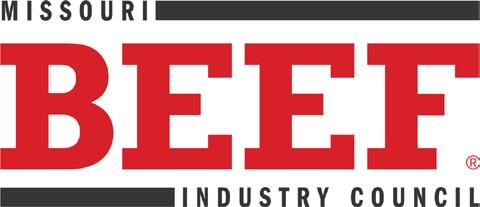
A strong and viable beef industry in Missouri.
Drive the demand for beef.
Promote and strengthen beef’s value proposition. Protect and grow consumer trust in beef and beef production.
Protect and enhance the business climate for beef. Drive growth in beef exports.
robust biosecurity plan helps prevent the introduction and spread of diseases, protecting the health of your herd and ensuring the sustainability of your business. Attendees will learn why an enhanced biosecurity plan is important to business continuity and disease prevention. This involves taking additional measures such as regular health monitoring, controlled access, and stringent

sanitation practices. A biosecurity plan is essential for disease prevention, cost savings, and maintaining market access.
One of the highlights of the event is the live cattle handling demonstrations. These demonstrations will showcase industry standards in animal welfare and safety, covering techniques for low-stress handling that can improve cattle health and productivity. Witnessing these practices firsthand will provide valuable insights into how proper handling can make a significant difference in your operation and employee safety.
Additionally, attendees will have the opportunity to become BQA certified. BQA certification is a mark of excellence that demonstrates your commitment to producing safe, high-quality beef. The certification process will cover essential topics such as animal health, nutrition and handling practices, providing you with the knowledge and skills to enhance your cattle management.
Don’t miss out on this chance to enhance your skills, network with professionals and your fellow producer, and take your cattle operation to the next level.
Registration opens April 21 for the 2025 Stockmanship & Stewardship event in Springfield. Register at stockmanshipandstewardship.
org - We look forward to seeing you there!
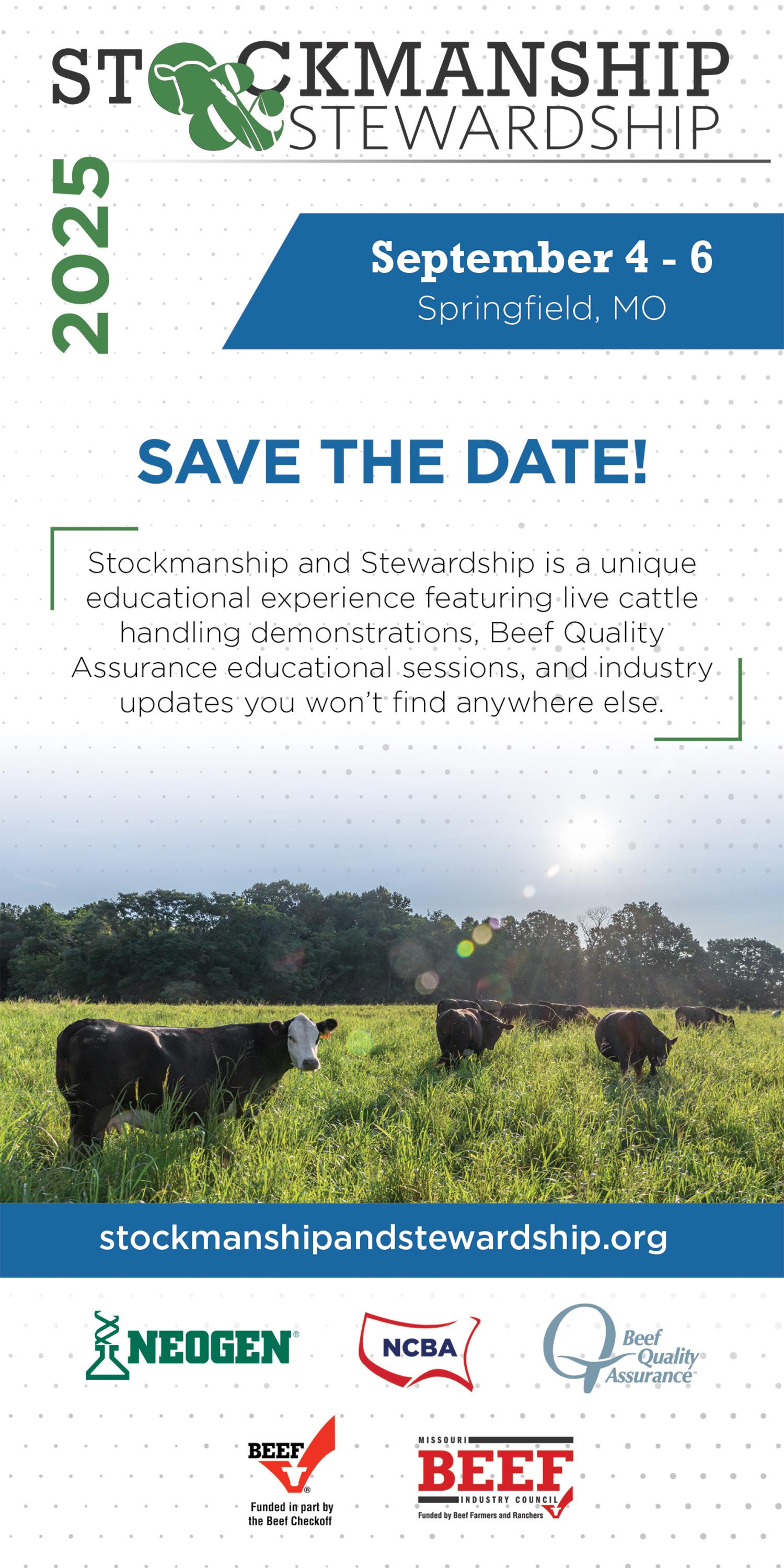
Executive & Board of Directors Meeting Dates
February 15 – Executive Committee
March 29 – Board of Directors Meeting
June 21 – Executive Committee-Conference Call
July 12 – Board of Directors Meeting
October 4 – Executive Committee
November 15 – Board of Directors Meeting
January 2026 – Executive Committee
January 21-23, 2026 – Board of Directors Meeting & MCA Annual Convention
Special Events
March 29 – Board of Directors Meeting (MCA Headquarters)
May – Profitability Challenge Open House (South Farm)
June 12-15 – Missouri Cattlemen’s Youth Expo (State Fairgrounds – Sedalia)
June 14 – Past Presidents Steak Fry & PAC Auction (Agriculture Building – Sedalia)
August 7-17 – Missouri State Fair (State Fairgrounds – Sedalia)
August 22-24 – MJCA Youth Industry Tour
September– Session 2 of MCLC (Agribusiness Tour)
September 11 – MCF Golf Tournament (Tanglewood Golf Course, Fulton)
September 18 – MCF Farm Safety College (University of Missouri – Columbia, MO)
September 19 – MSU Farm Safety College (Darr Ag Center, Springfield, MO)
January 21-23, 2026 – MCA Annual Convention
Tentative Events
Profitability Challenge Awards Ceremony (September or October)
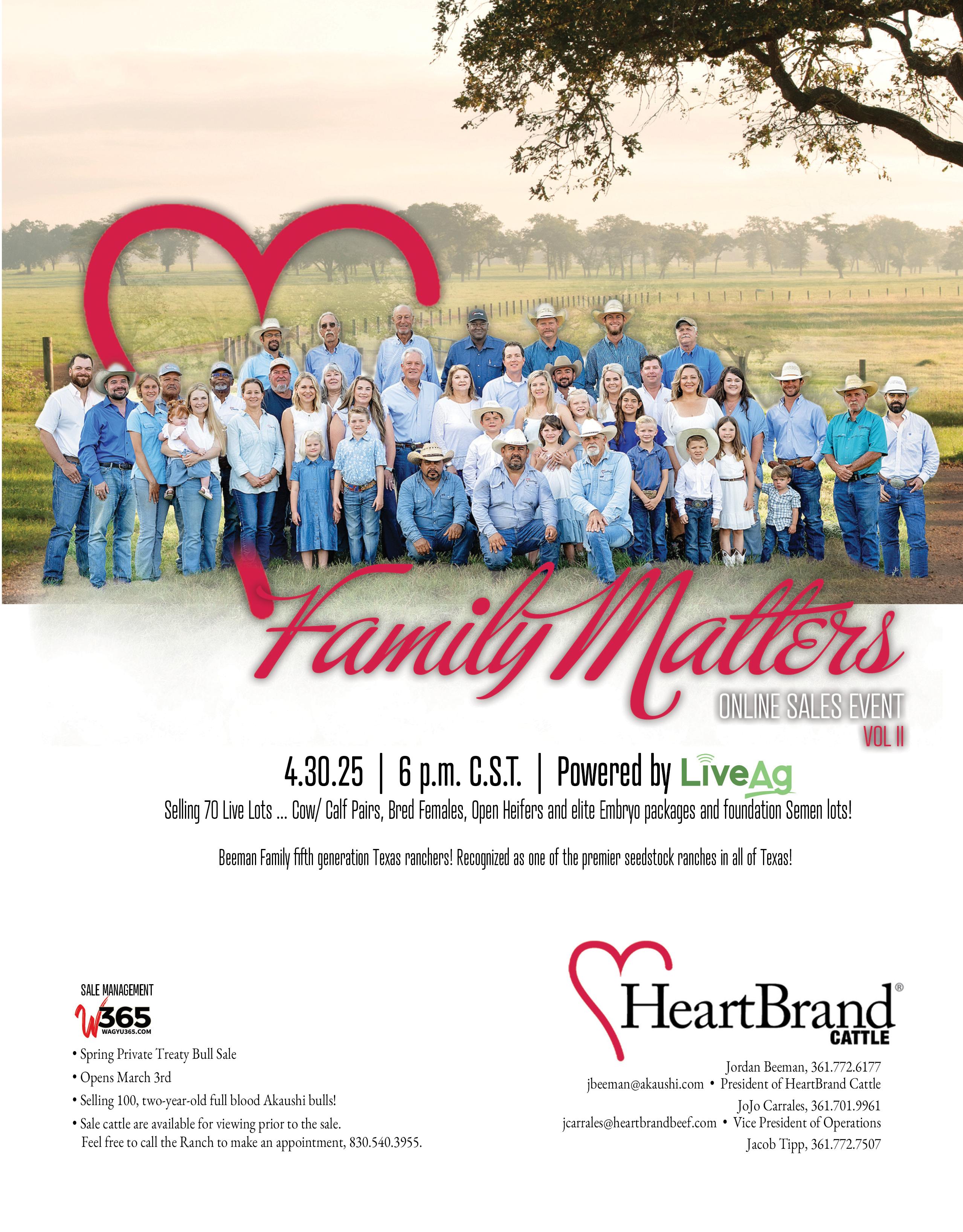
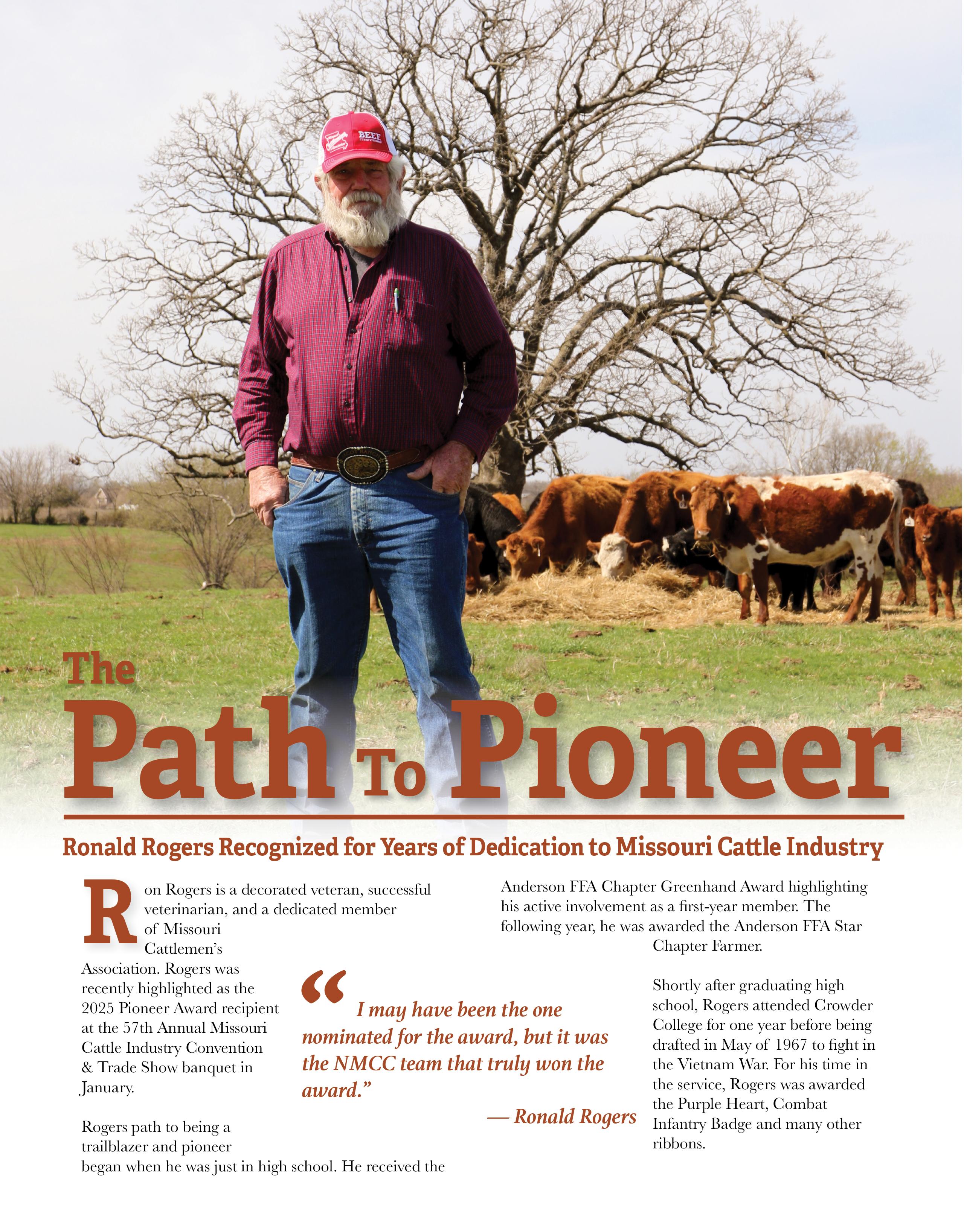
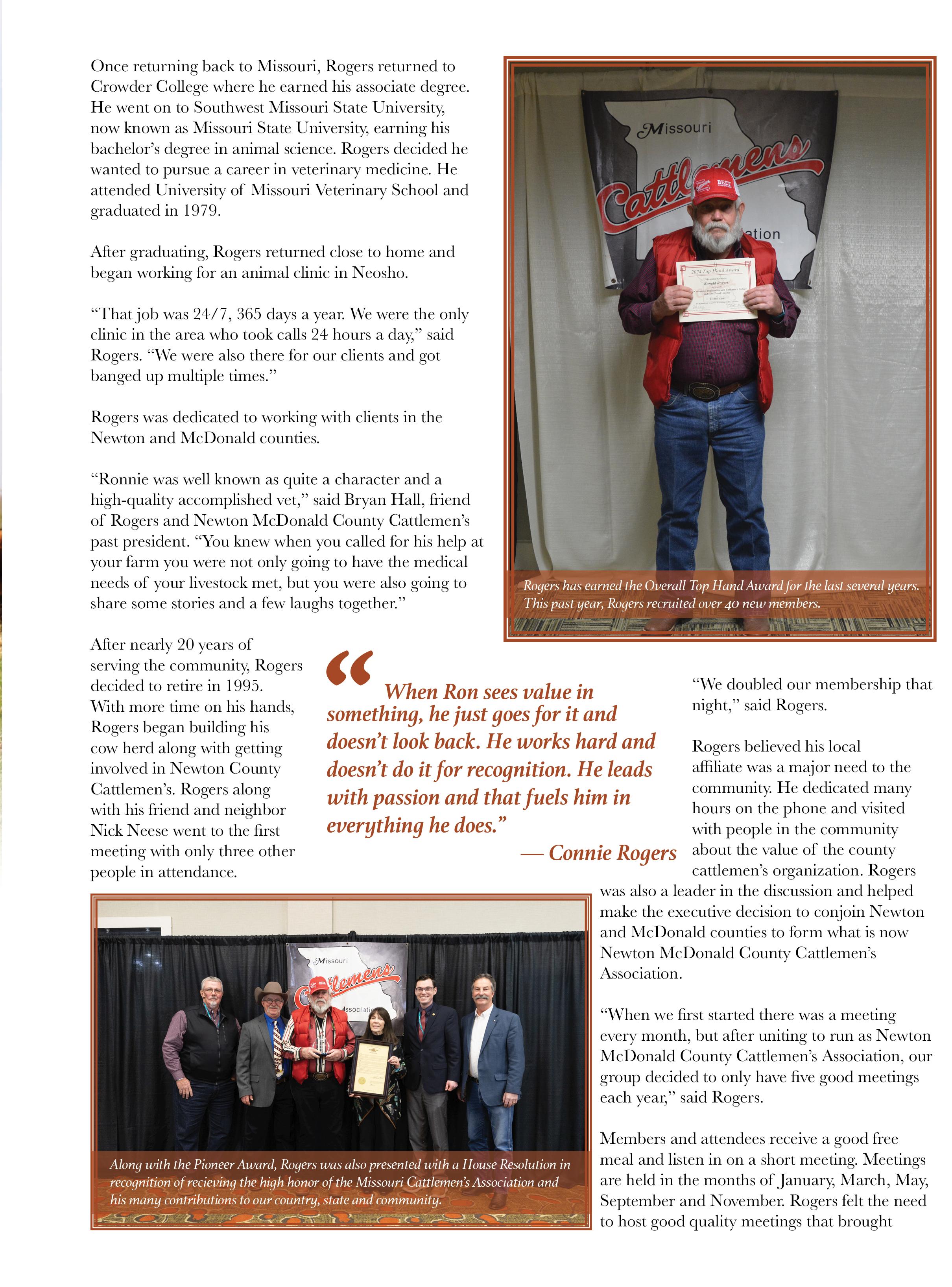
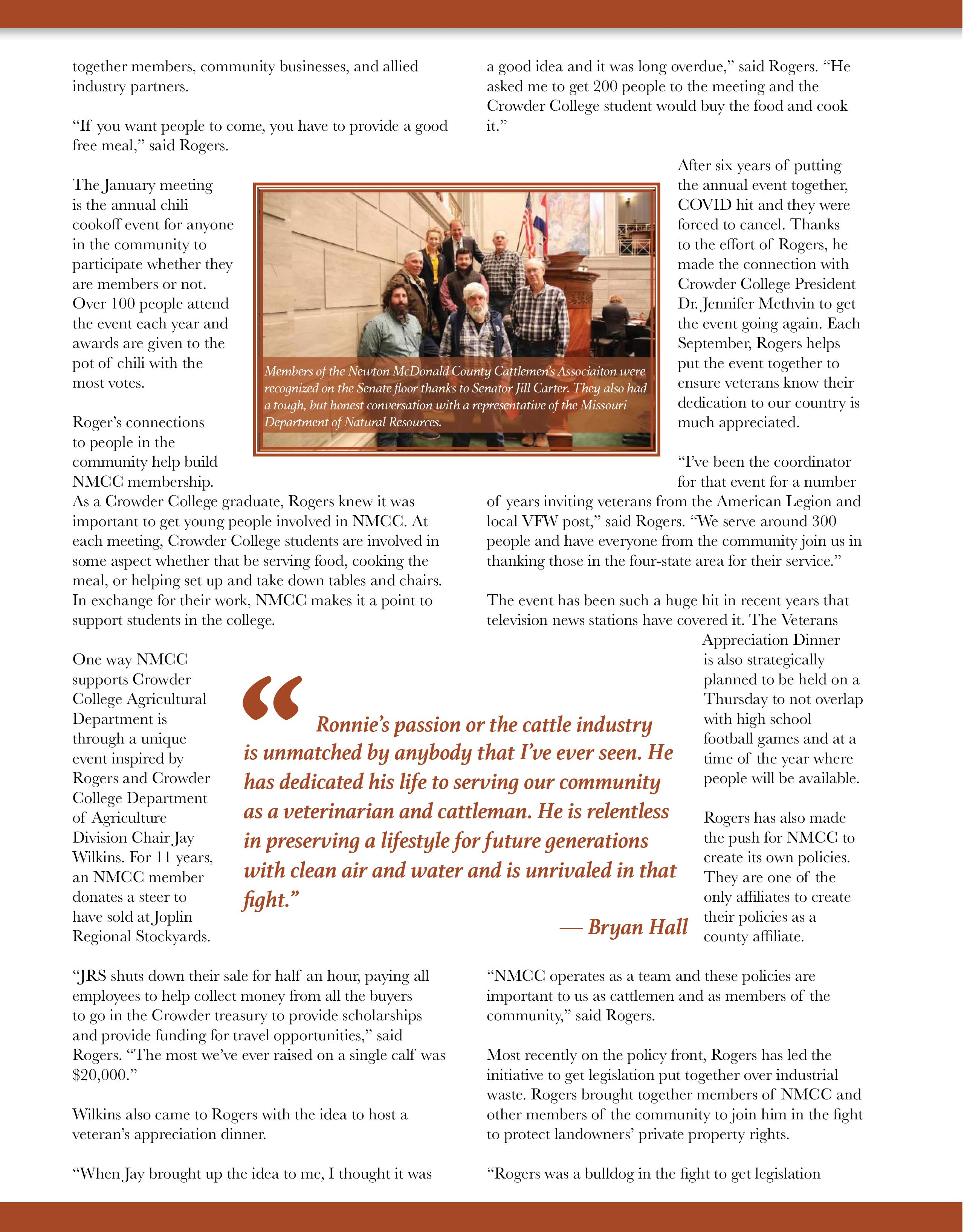
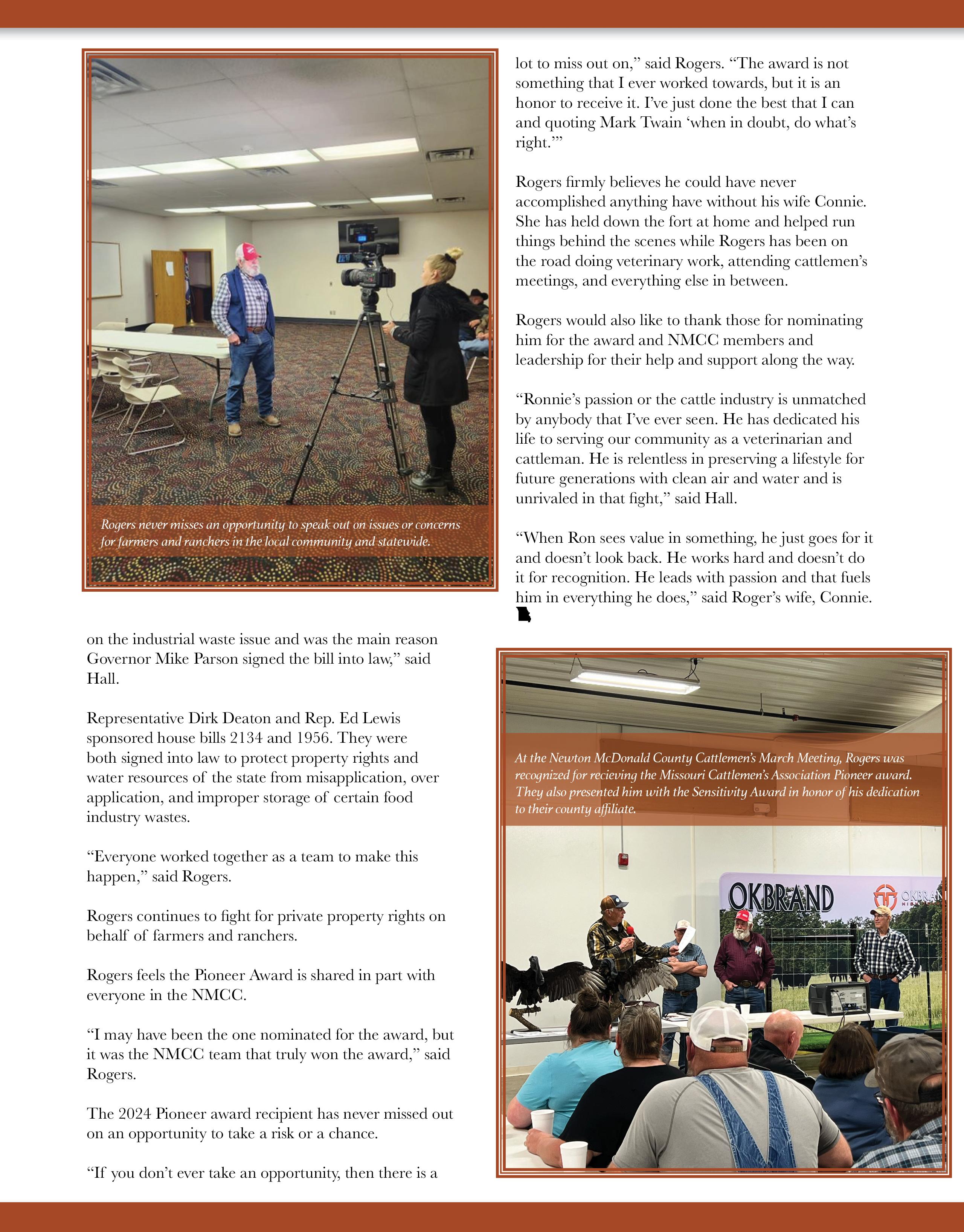
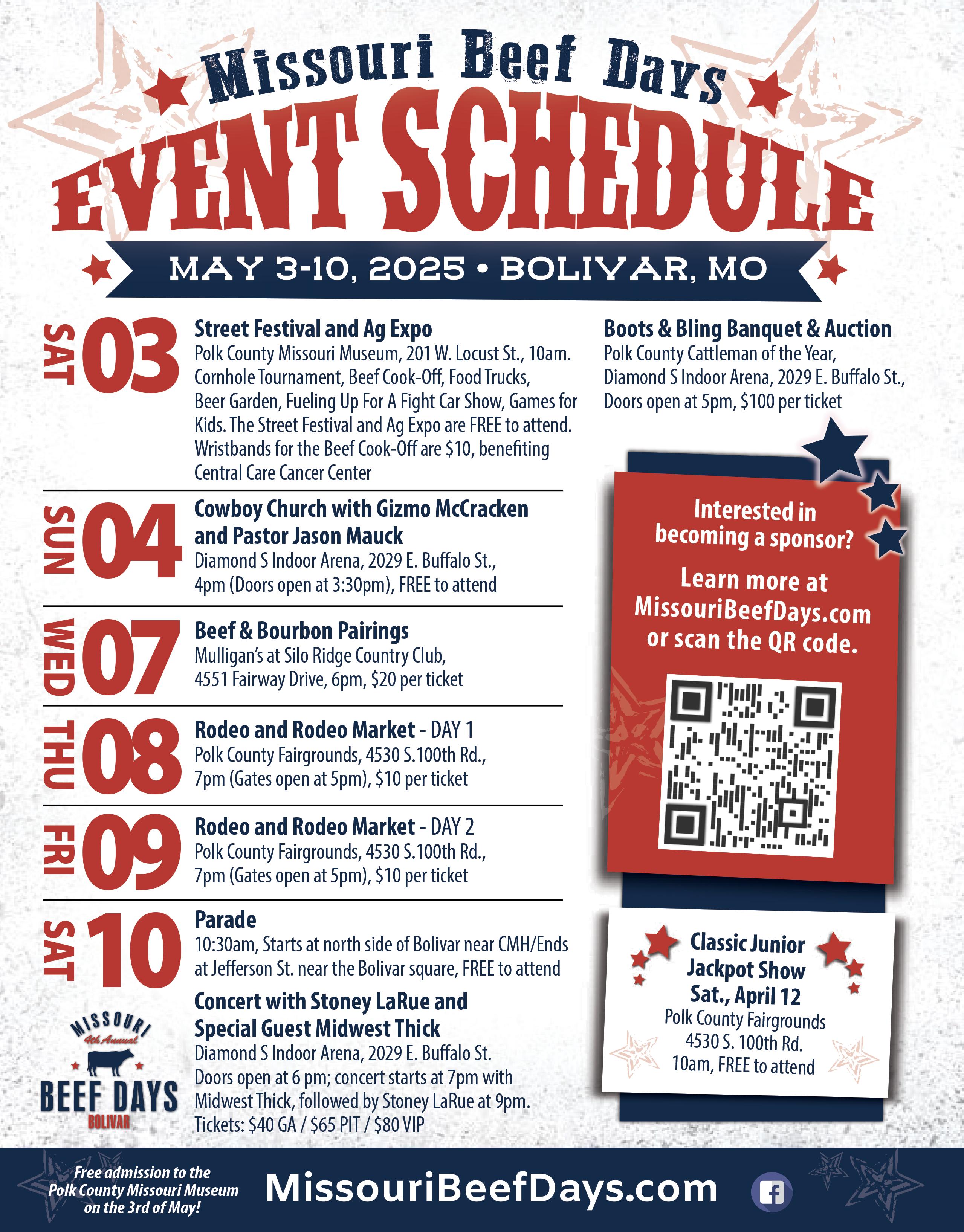
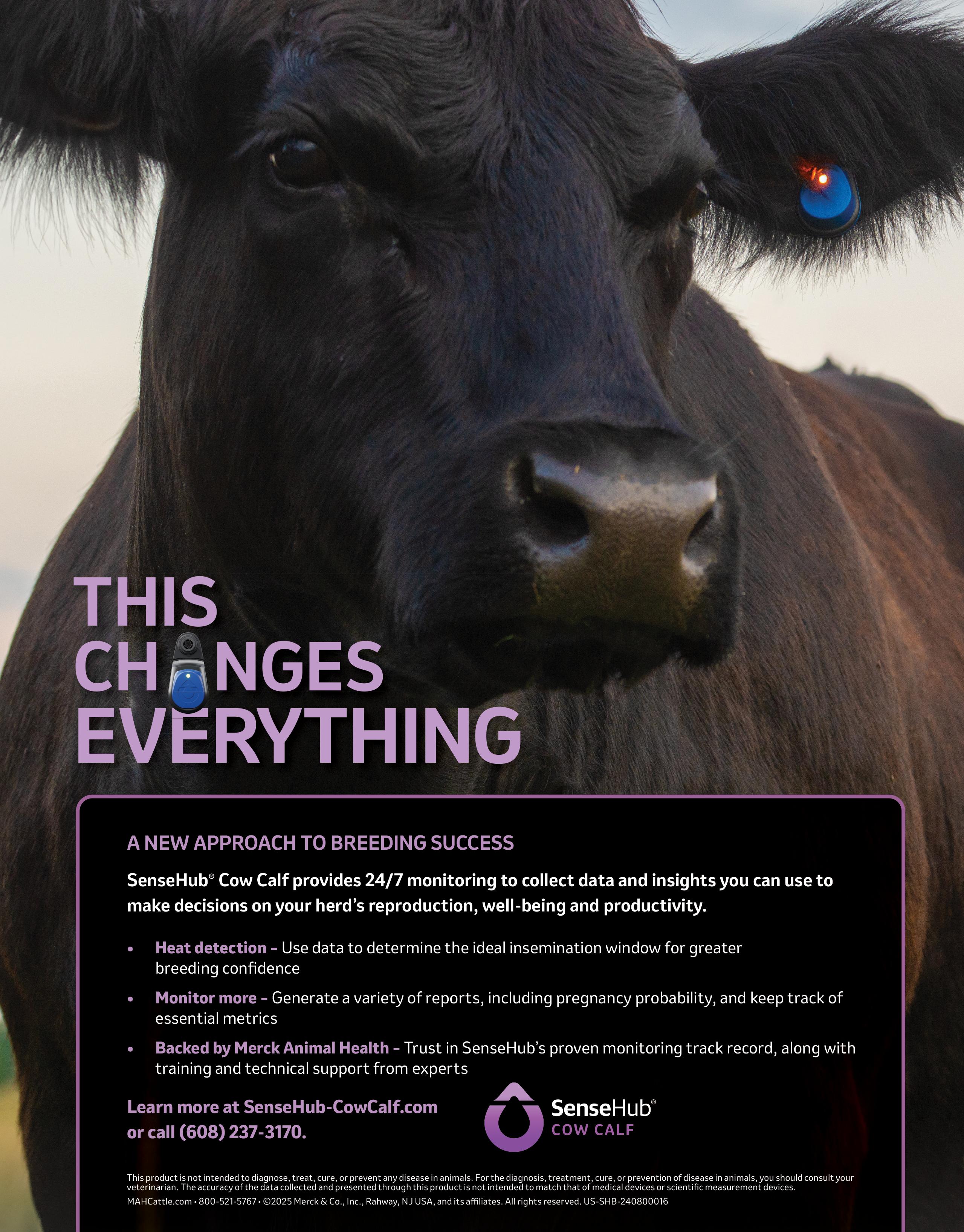
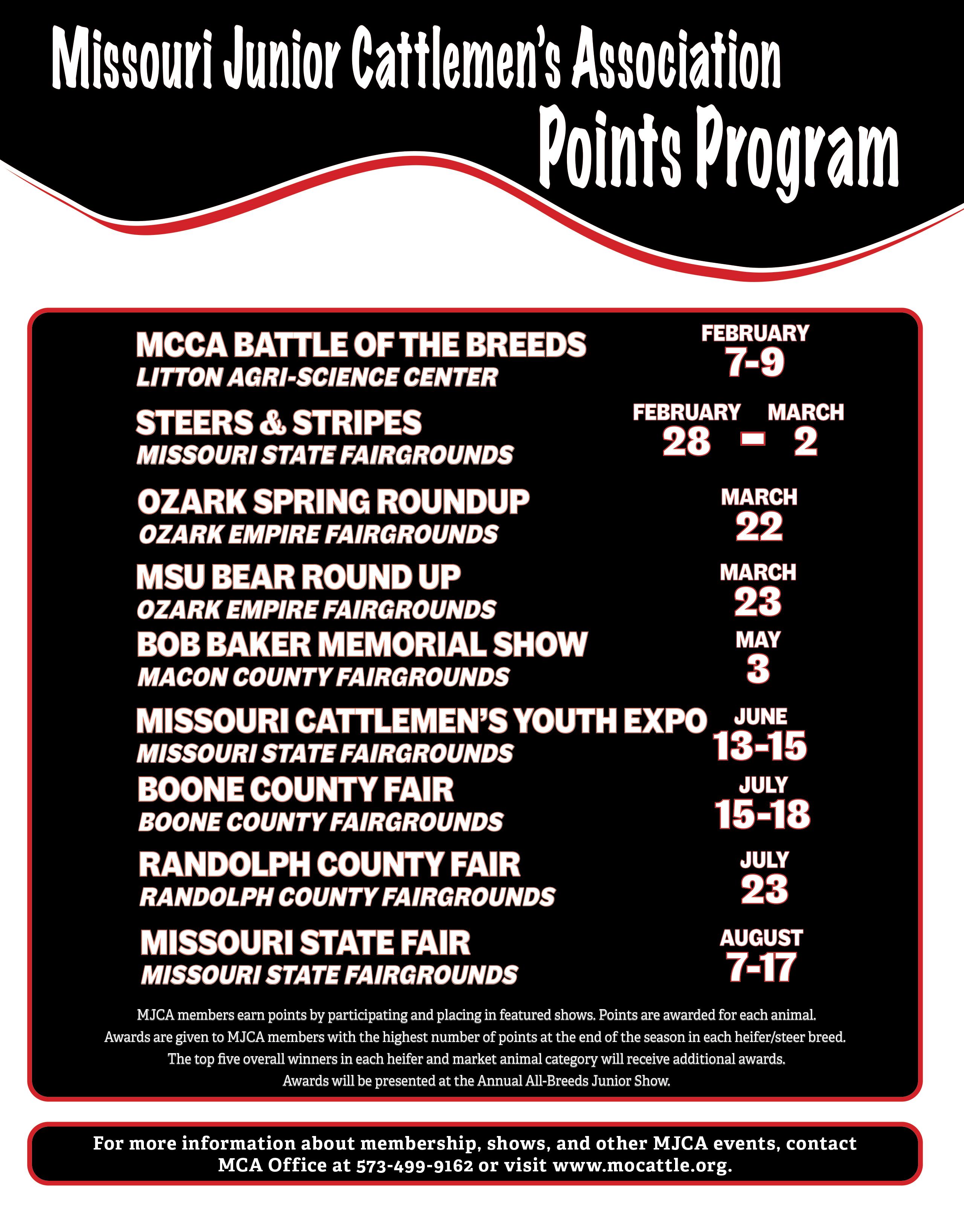
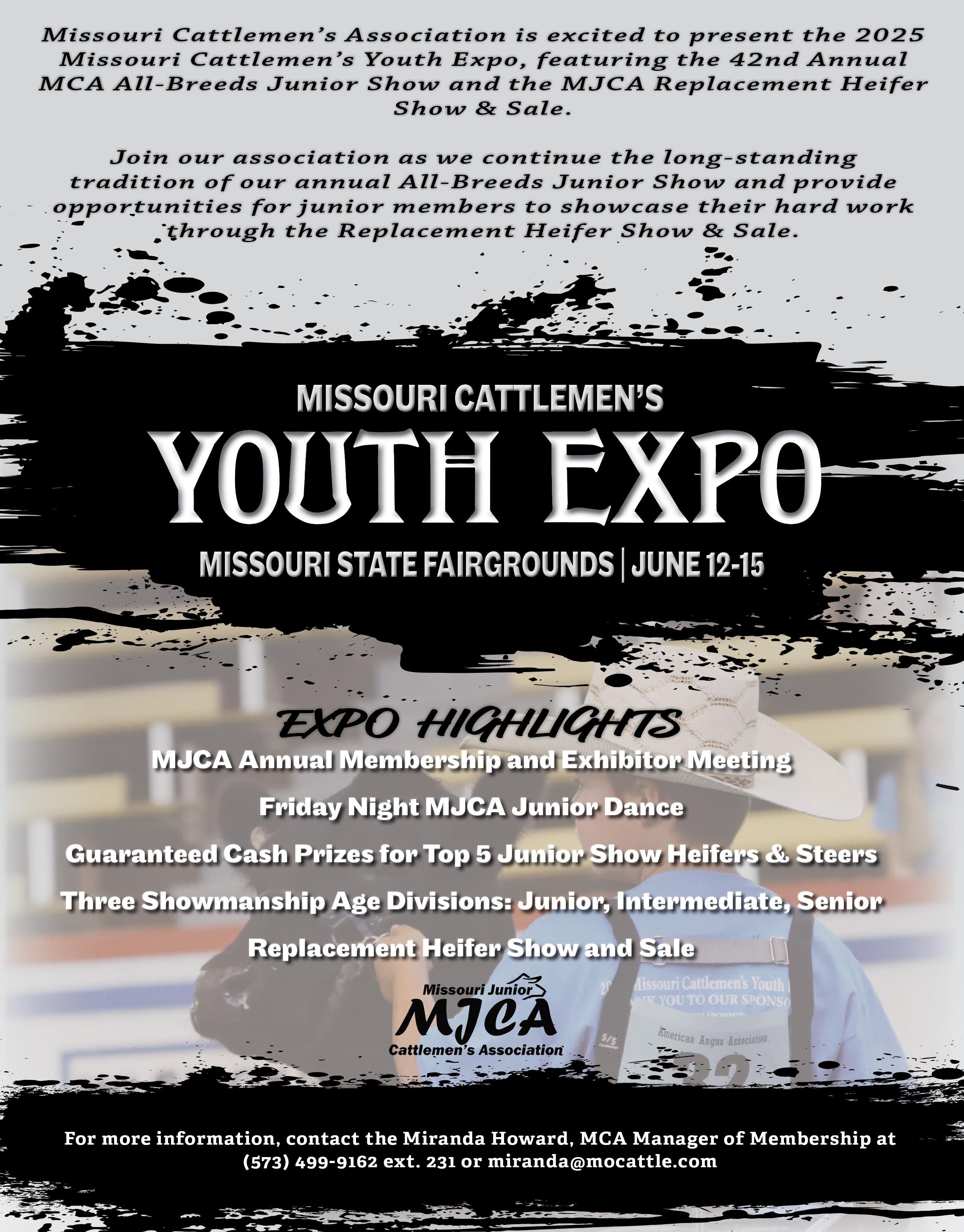
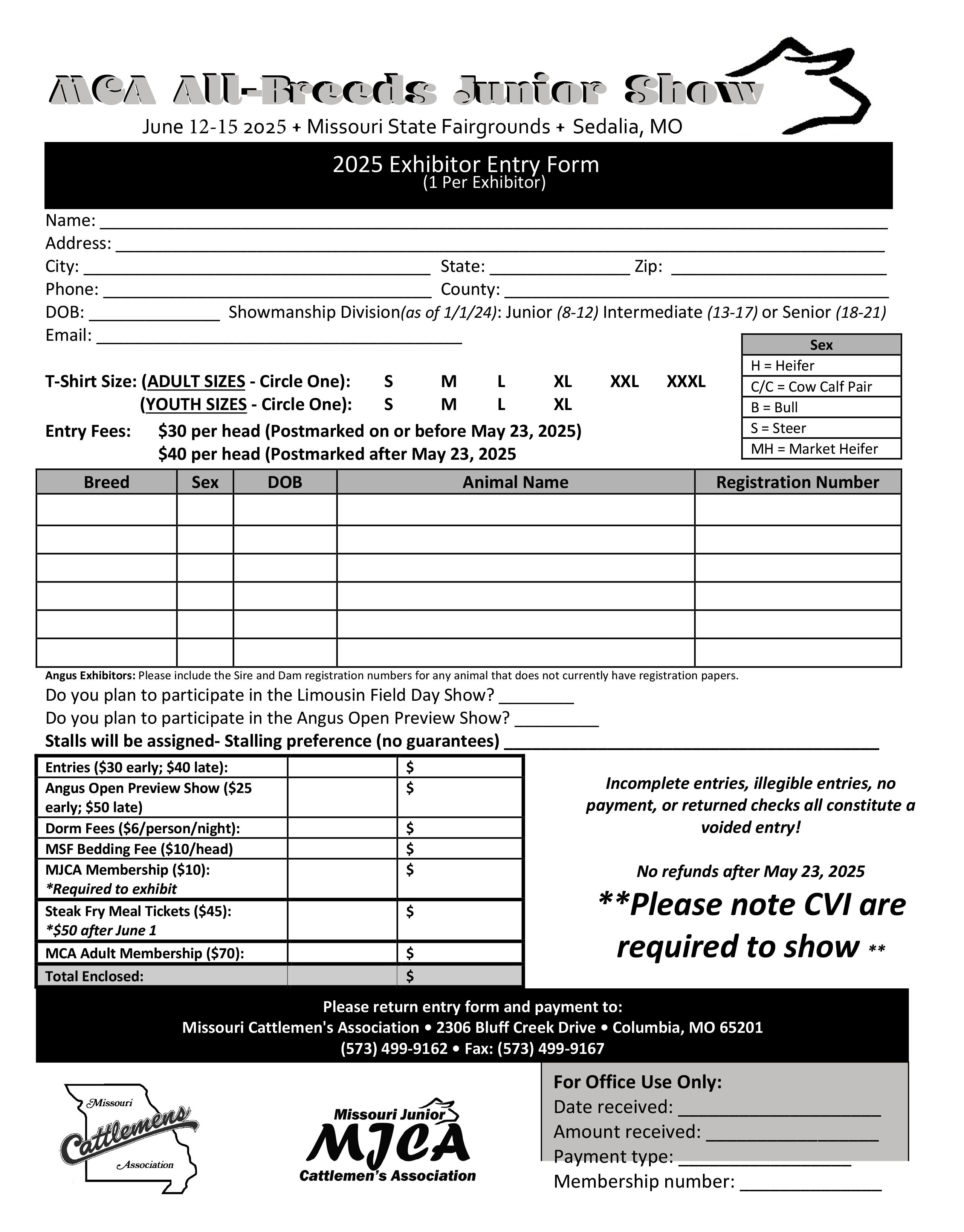



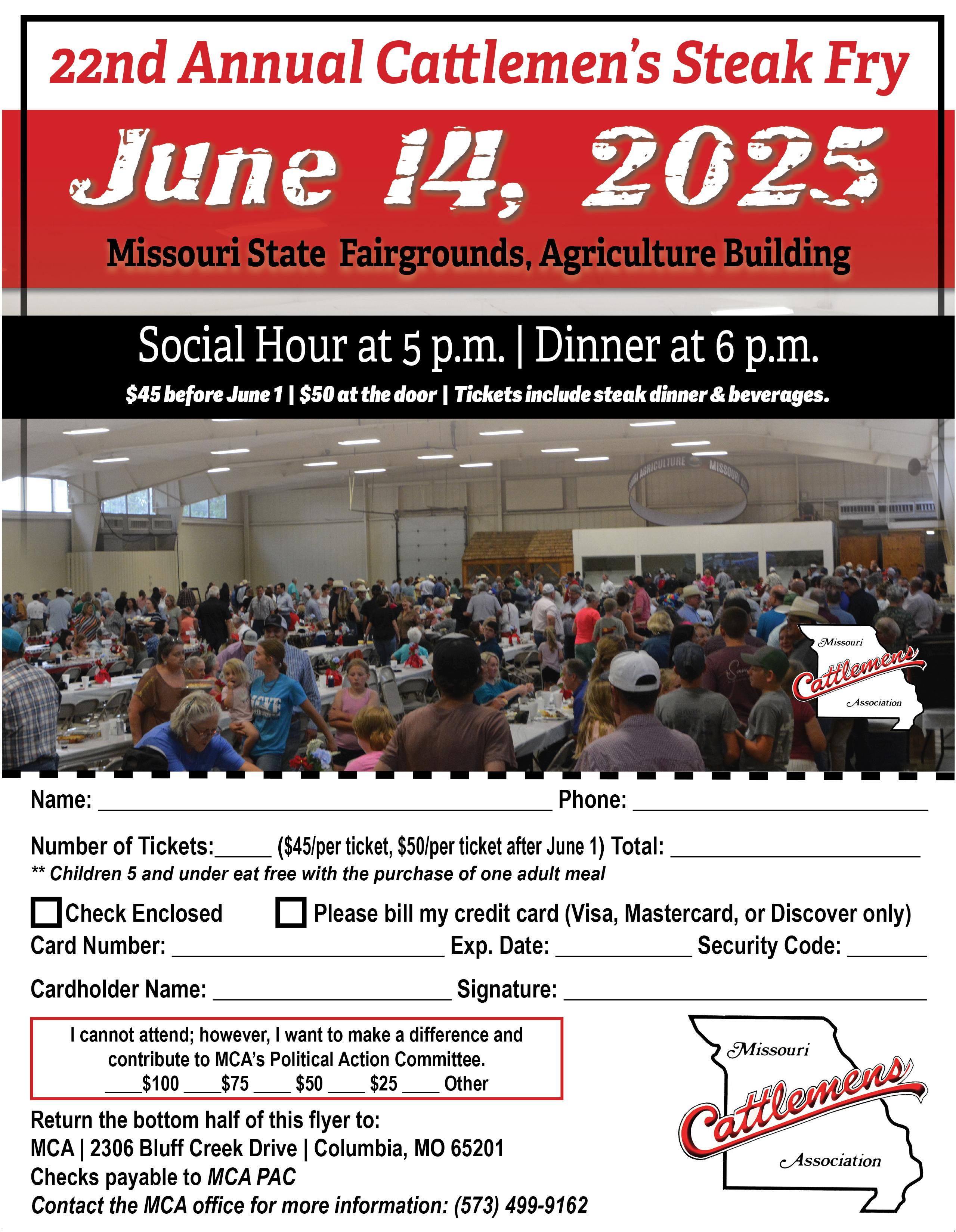



Something new is coming to Field Day in Sedalia, Missouri this year at the Missouri Youth Expo. Dust off those boots and shine up those show sticks. The time has come to have some fun and get creative.
We will be hosting our first Over the Hill Showmanship competition at the conclusion of the junior showmanship. Anyone over the age of 22 is welcome to join in on the fun. You can be as “normal” or as “creative” as you wish when it comes to this competition. All we ask, is that you have fun with this and bring some laughs to the crowd.
To enter pay $25 the day of the show, June 14. The winner takes home 1/2 teh proceeds and the other 1/2 will support the juniors in all their summer events.

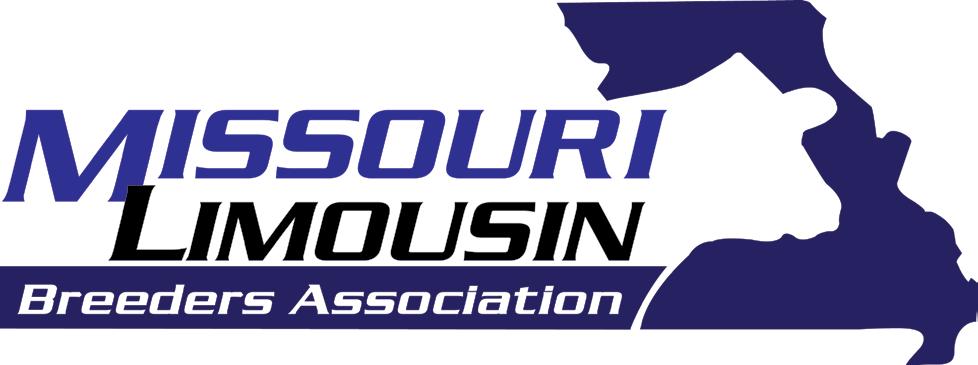
Nathan Hunt, President Frohna
Ty Heavin, Vice President Springfield Josh Glendenning, Secretary Lebanon
Caleb Minor, Treasurer Strafford
TJ Callahan, Ex-Efficio Centerview
Jack D. Glendenning, BOD Member Lebanon
Danny Brockhaus, BOD Member Holden
Logan Haden, BOD Member Seymour
Mark Middleton, BOD Member Bourbon
Trevor Miller, BOD Member Perryville
Melanie Brockhaus Holden
Hannah Boyce Marshfield
April 26 - MLBA Annual Banquet will follow the American Pie Sale, Lebanon, Missouri
May 23-24 - Heartland Regionals, Allison, IA
June 14 - The MLBA Field day at the Missouri State Fairgrounds, Sedalia, Missouri
June 20-26 - Limousin Junior Nationals, Perry, Georgia
July 25-26 - Ozark Empire Fair show days for Limousin will be July 25 for juniors and the 26 for the open show
August 15-16 - Missouri State Fair Limousin shows will be August 15 for juniors and the August 16 for the open show
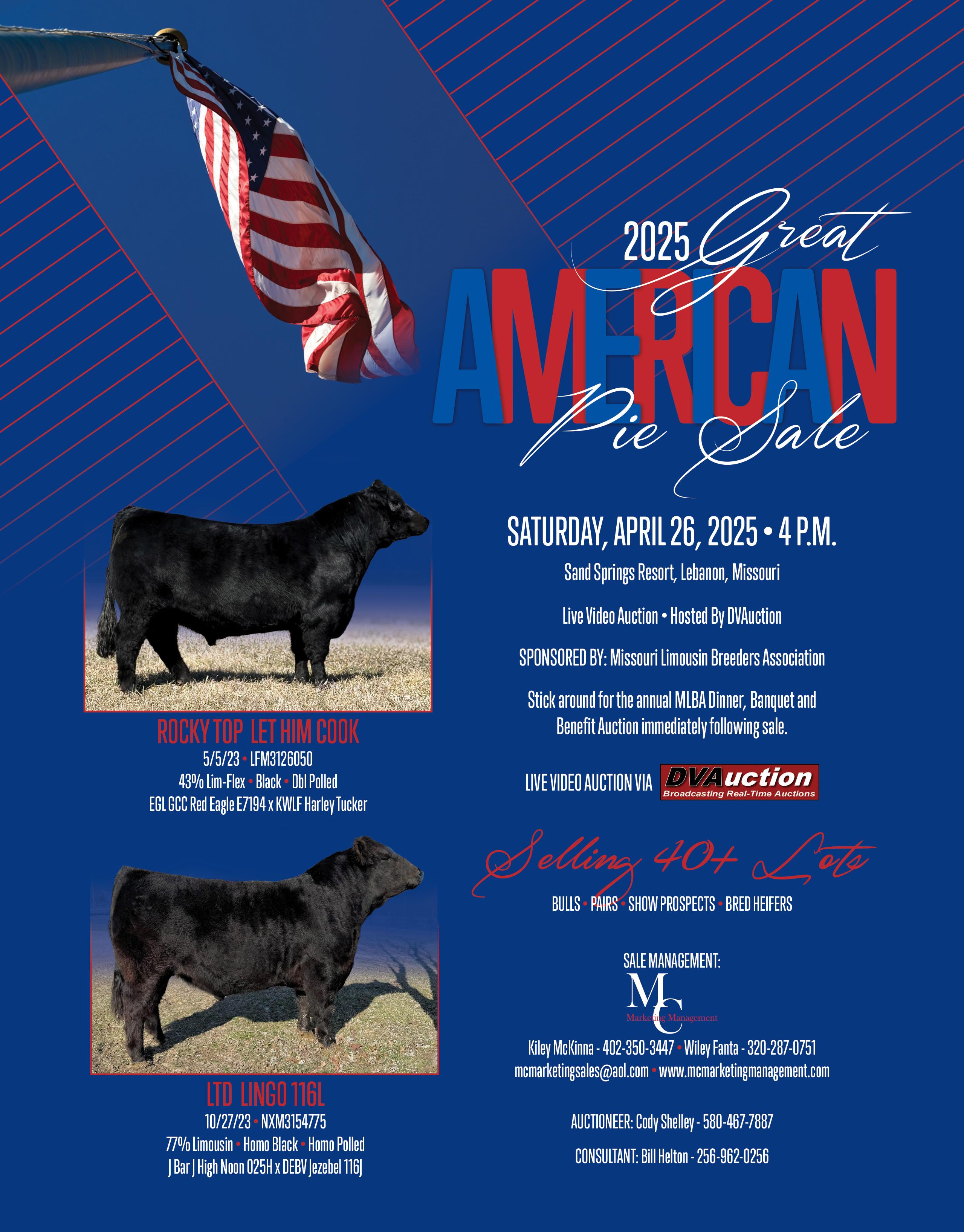
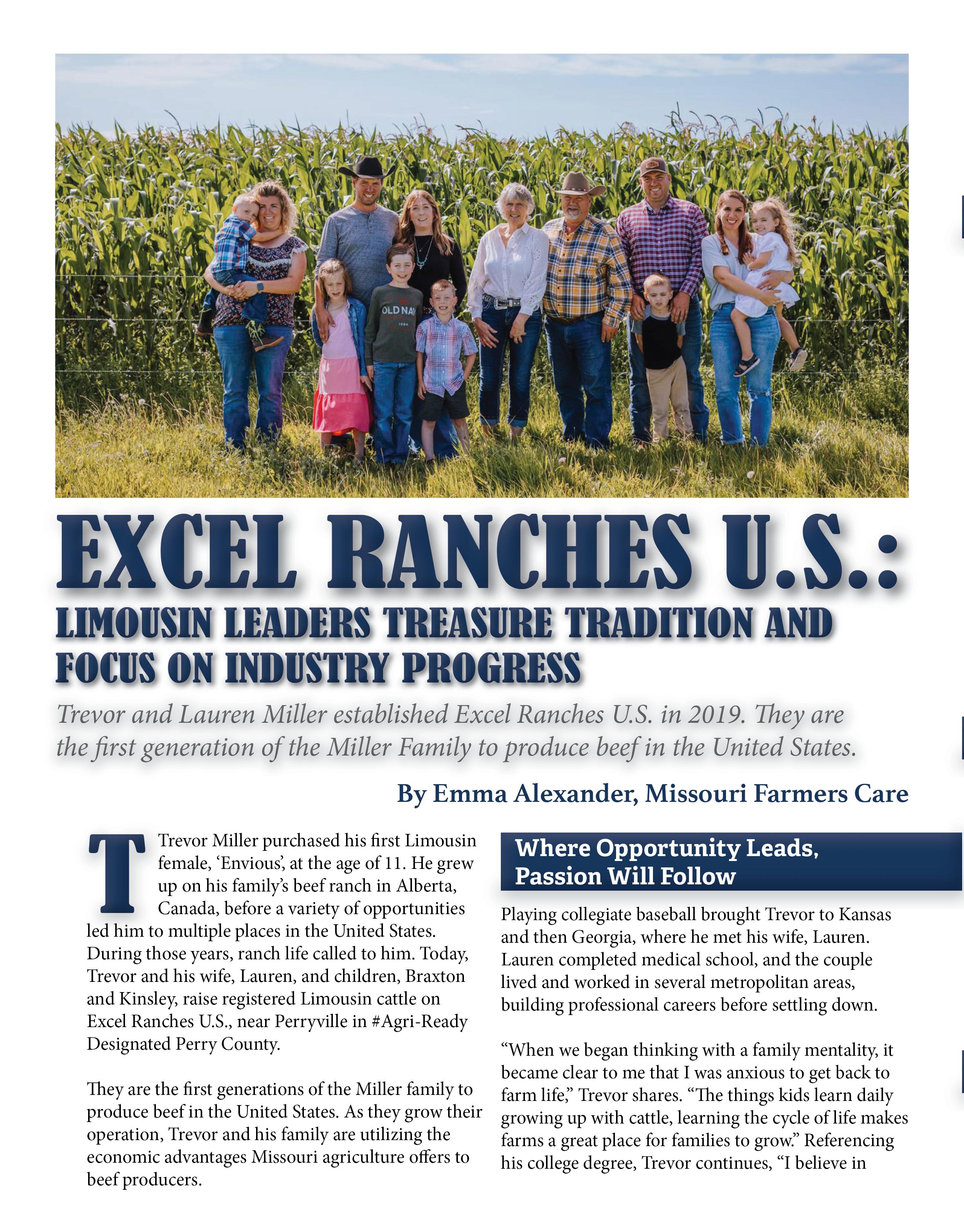
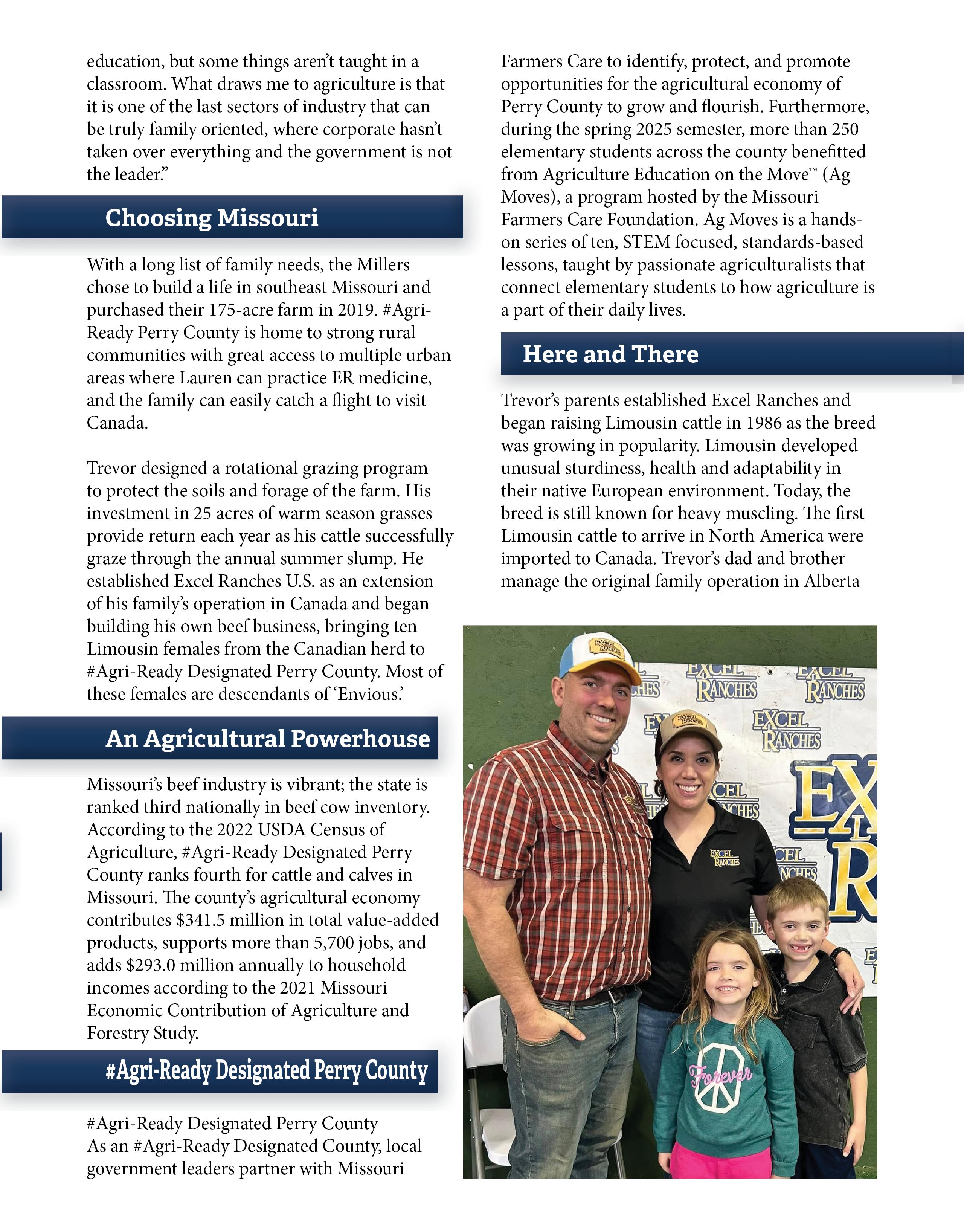

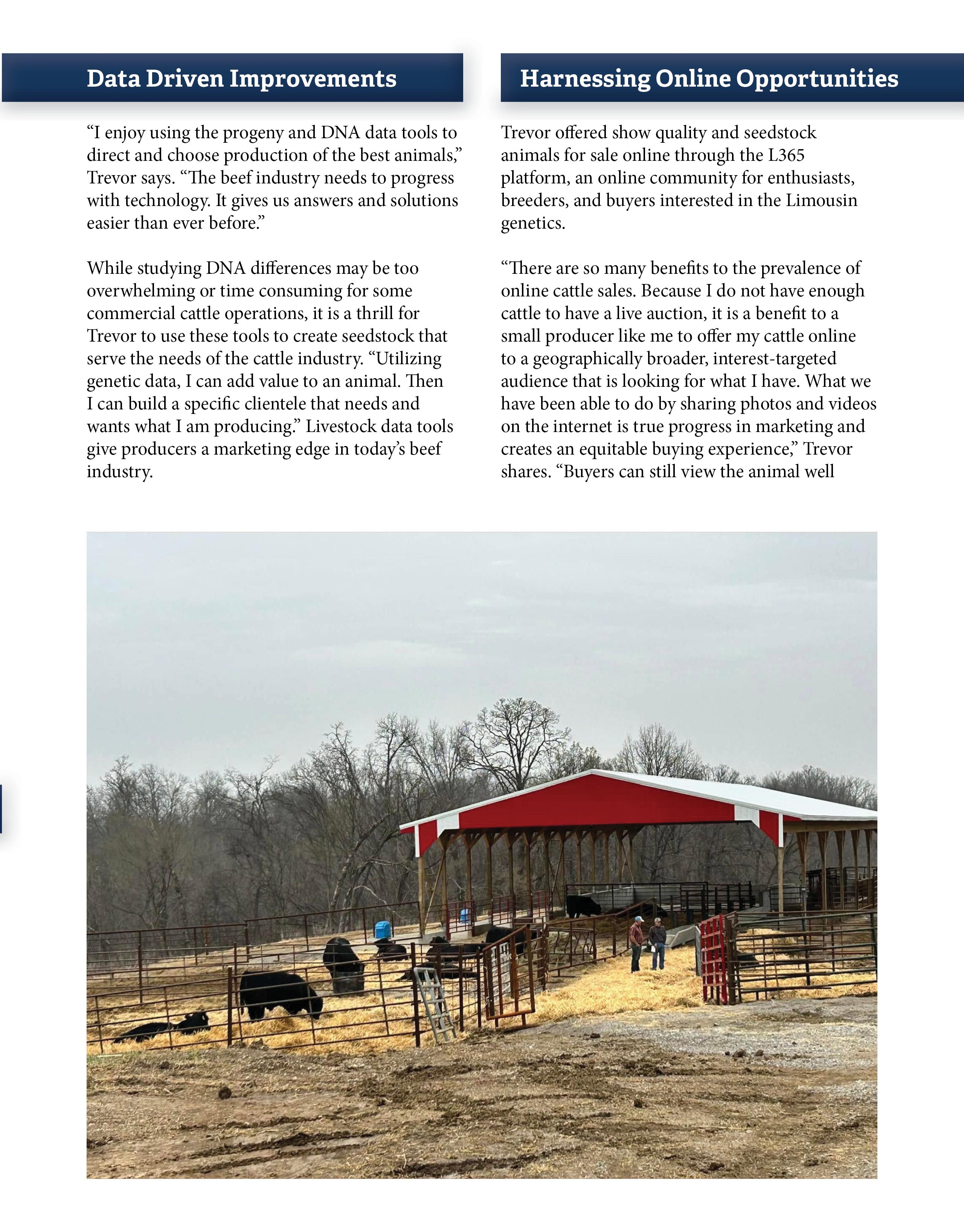

The North American Limousin Foundation is excited to introduce its new Director of Activities Tatum Swink, of Severance, Colorado! Tatum will lead the North American Junior Limousin Association and its 10-member board that serves all junior members of the historic NALJA association into the future.
Tatum comes from a strong cattle background growing up on a small ranch in Perkins, Oklahoma and showed cattle extensively throughout her youth and as a 4-H member. Tatum obtained her bachelor’s degree in communications and marketing from Oklahoma State University. While in college she worked for a seedstock operation in Oklahoma and interned at various shows including the Tulsa State Fair. Tatum has also attended and helped youth exhibit their cattle at various junior national and major national livestock shows around the country.
After graduation at OSU, Tatum moved to Colorado and took on the role of Marketing and Communications Manager for the Colorado Cattlemen’s Association for the last 2 years. Tatum produced magazines, weekly electronic news communications, along with social media output and ad design work. She worked directly with ranchers and commercial cattle producers in the state of Colorado at the CCA.
Tatum commented “I’m excited to work with the Junior board and youth membership at NALJA along with

NALF members of the storied Limousin breed. I’m also eager to bring my passion and experience to an already outstanding program and help it progress and grow into the future! I look forward to meeting everyone and assist members in any way possible!”
Mark Anderson, Executive Director at NALF, said, “We are extremely excited to have Tatum join the team and work with our junior membership who have gone on to successful careers paths or became breeders that still belong to the association today with successful Limousin cattle operations. She possesses a diverse and unique skill set with strong cattle background, communication and leadership skills that will benefit both NALF and NALJA members into the future.”

Source: A.J. Ebert, Plattsburg Hustlers Volunteer Leader
Plattsburg, MO (Mar 3, 2025) – The Clinton County Livestock Judging Team has earned the opportunity to attend the Royal Highland Show in Edinburgh, Scotland, in June.
Team members Payton Rogers, Paisley Nelson, Jorja Ebert, Beau Ann Graves, and Sam Jordan are all members of the Plattsburg Hustlers 4-H Club. They won the 2024 State Livestock Judging Contest, later traveling to the North American International Livestock Exposition in Louisville, KY, to compete in the National 4-H Livestock Judging Contest. The Clinton County Livestock Judging Team placed third in the nation competing against state all-star teams.
The Royal Highland Show is an annual agricultural showcase. Eligible 4-H and FFA teams from across the United States have the opportunity to compete in a judging contest at the farm show, as well as touring farms and historic sites to learn more about local agricultural practices and history.
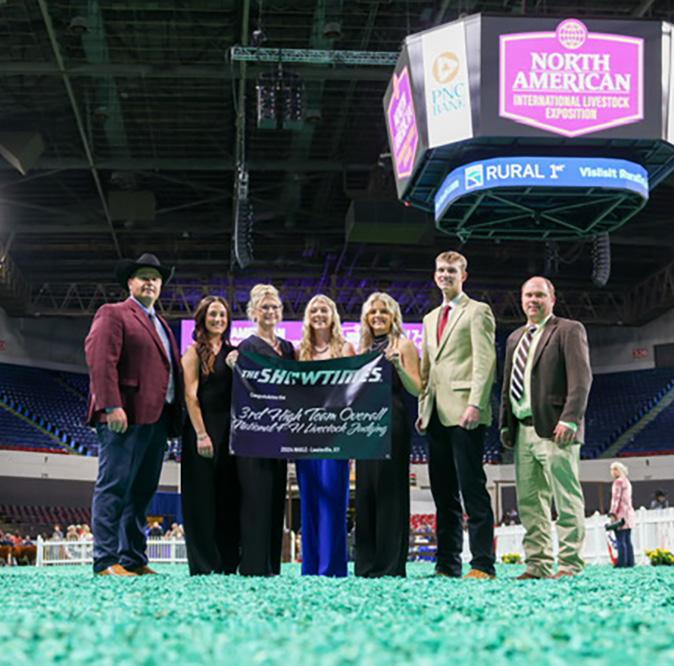

The Dallas County Cattlemen’s Association held its annual scholarship pie auction at the March 11 meeting at Prairie Grove school with 115 members and guests in attendance. Thank you to everyone who made the event a huge success again. The 27 pies and desserts generated $2,740 in revenue. Once again Molly McCorkill’s cherry pie topped the sale commanding $600. Since its inception in 2012, the scholarship program has generated nearly $30,000 with the money used to award outstanding students pursuing a higher education. Funds are also used to help FFA students attend leadership conferences and educational trips. DCCA has also sponsored young men from the Mennonite community to attend the Graham School, a five-day classroom and hands-on event held in Kansas that provides valuable education in breeding and herd management.
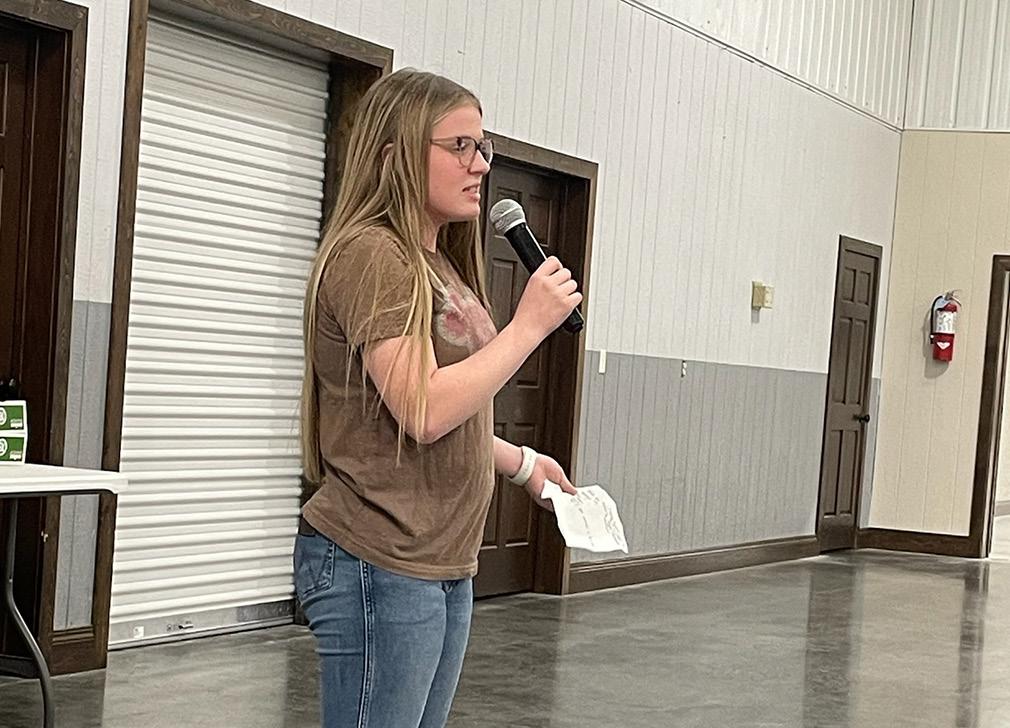
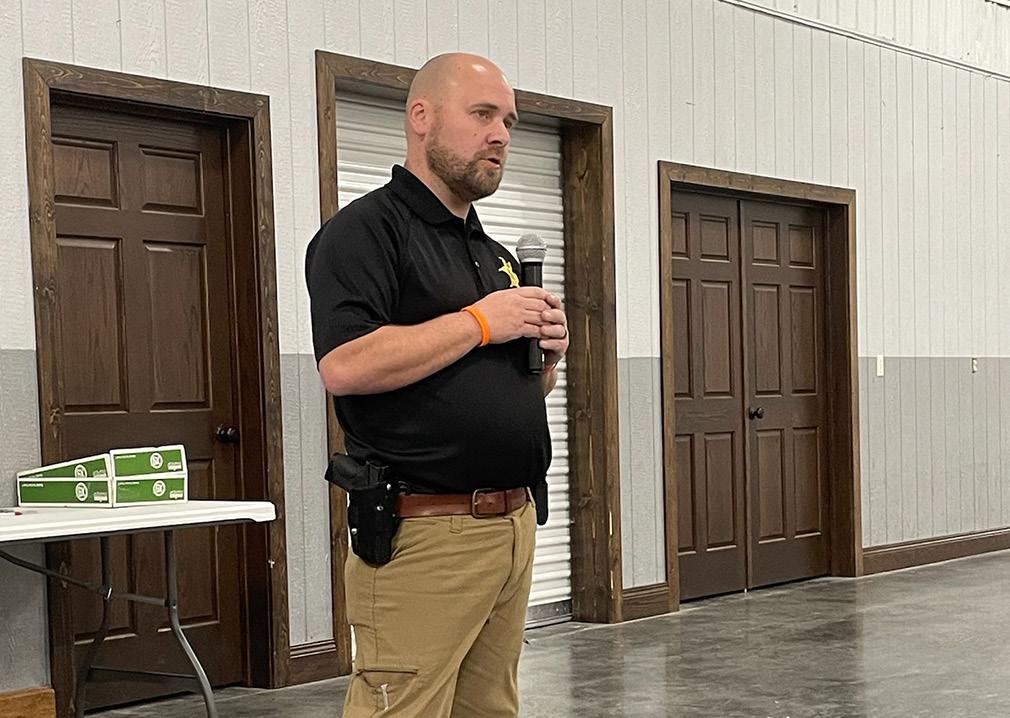
Darren Cheek speaking at DCCA meeting.
Special guests honored at the meeting were Dallas County Sheriff Darren Cheek and a number of his staff. Cheek thanked DCCA members for their help as we are the eyes of the community and know what is going on in our rural areas.
Our guest speaker was Missouri Cattlemen’s Association Executive Vice President Mike Deering. Deering mentioned a Dallas County meeting was the first county affiliate meeting he attended when he was first hired. We always enjoy his interesting stories. Mike updated us on MCA’s priorities in Jefferson City including the elimination of capital gains, water rights and eminent domain.
Buffalo FFA officer Ashtyn O’Malley also spoke to the group about all the chapter activities. Members are busy competing at contests and look forward to the state convention in April.
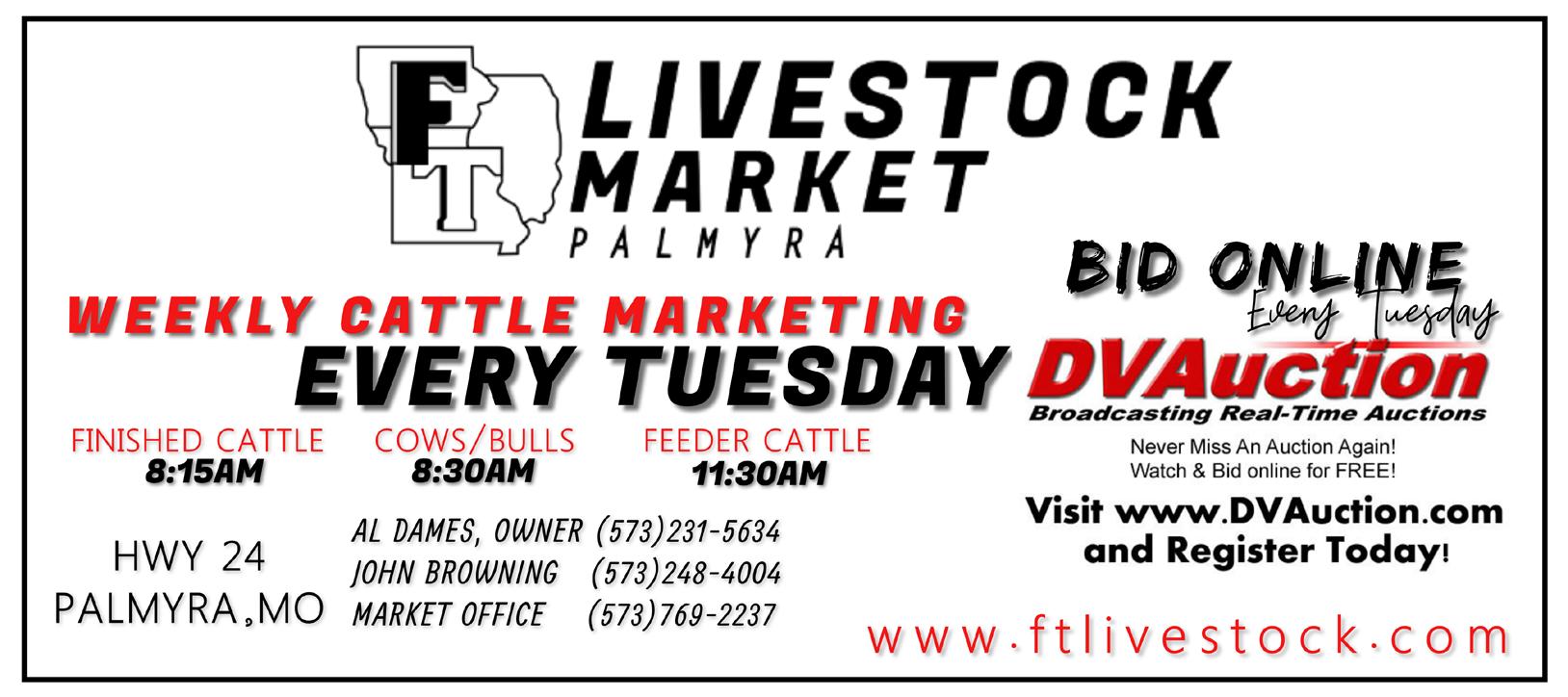
Earlier in the evening, members and guests enjoyed chili and other soups provided by the DCCA board. Thank you to the ladies of the community for the homemade rolls and to members who provided desserts.
The Hickory County Cattleman’s Association met Thursday, February 13, 2025, at the Wheatland Senior Center. The February meeting was sponsored by Gideon Ag Drones, and Brant Gideon was the guest speaker.
Brant gave a presentation on the various types of herbicide spraying that can be done with drones. Some of the benefits of using a drone for spraying is, there is no compaction of soil, less waste of chemical and no over spraying, it can maneuver thick brush wet and muddy ground, and rough, hilly terrain that a tractor and sprayer may not be able to reach, and it is more efficient. Droplet size can also be adjusted to soak through all the layers doing a better job of killing weeds. This new technology is very efficient and economical. Brant Gideon can be reached at 417-733-5443 for
further information.
Kevin Piper gave a report on the Cornerstone Heifer Applications, Scholarship Applications and the Work Force Applications. Please contact Kevin Piper at 417327-5807 for more information.
Upcoming events: 50/50 at Lucas Speedway on June 28 for the 2nd Annual High Limit Racing Diamond Classic, and State Fair Beef House on August 7.
Hickory County Cattleman’s caps are available for purchase.
The next Hickory County Cattleman’s meeting will be held on March 13, at 6:30 p.m., at Prairie Chapel, 20414 US Highway 65, Urbana, MO 65767.
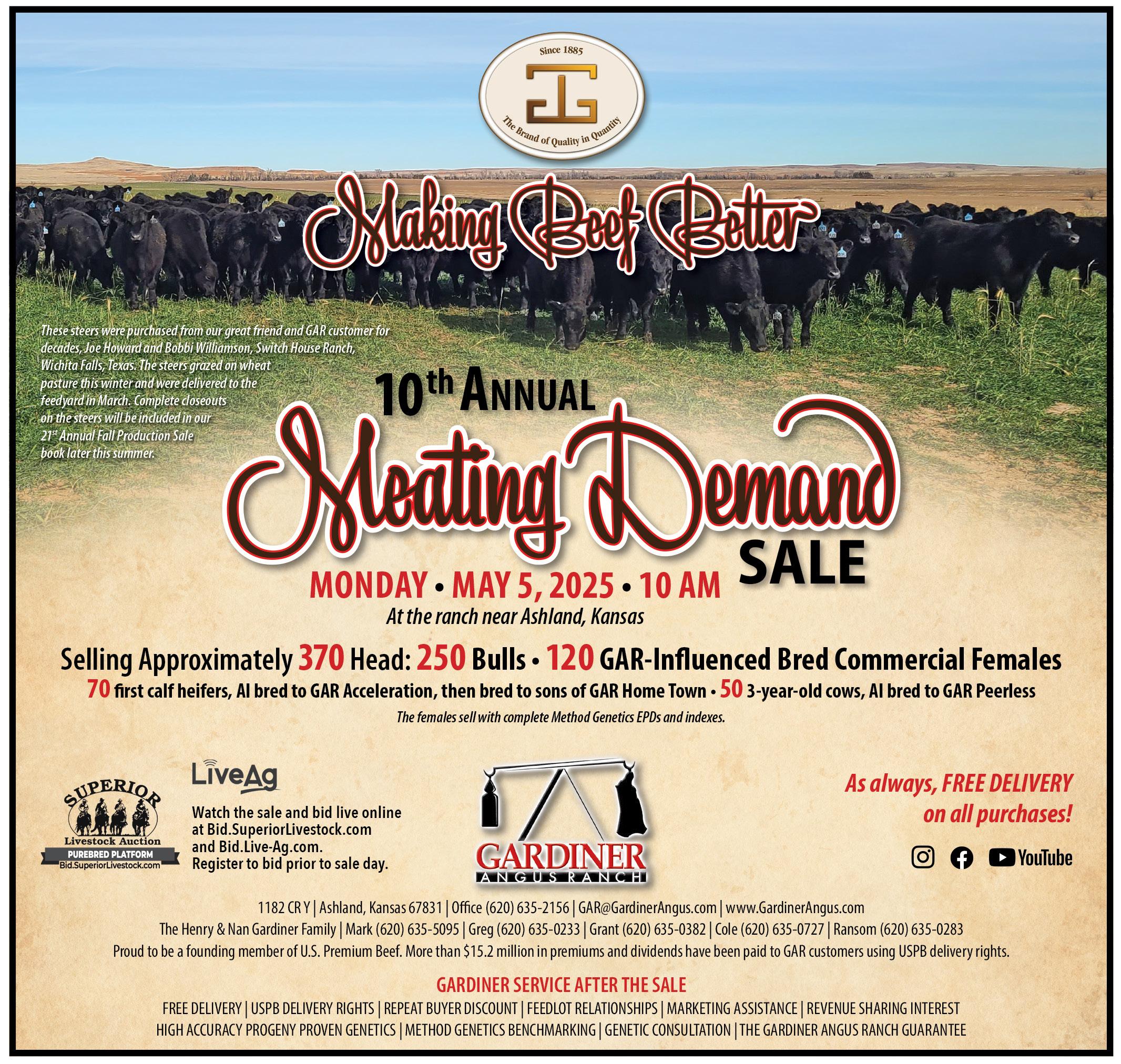




641-4522 www.marshallandfennerfarms.com
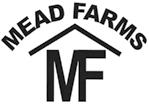
573-302-7011
Fax: 573-348-8325
meadangus@yahoo.com
www.meadfarms.com




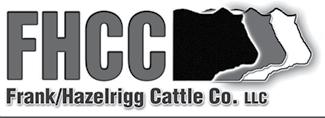




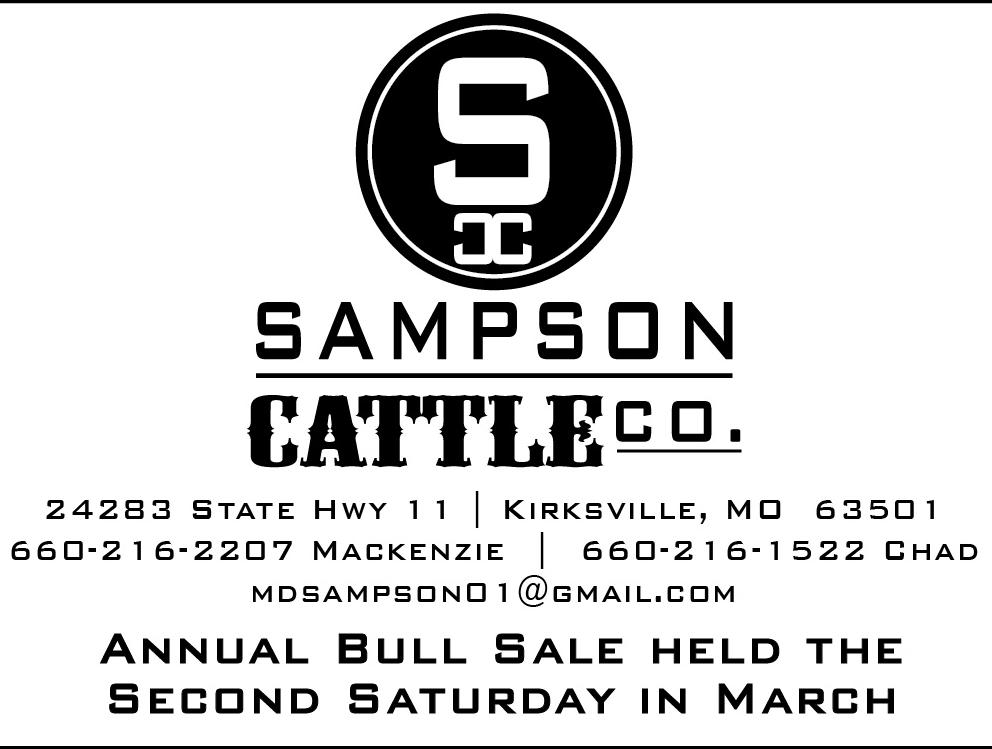
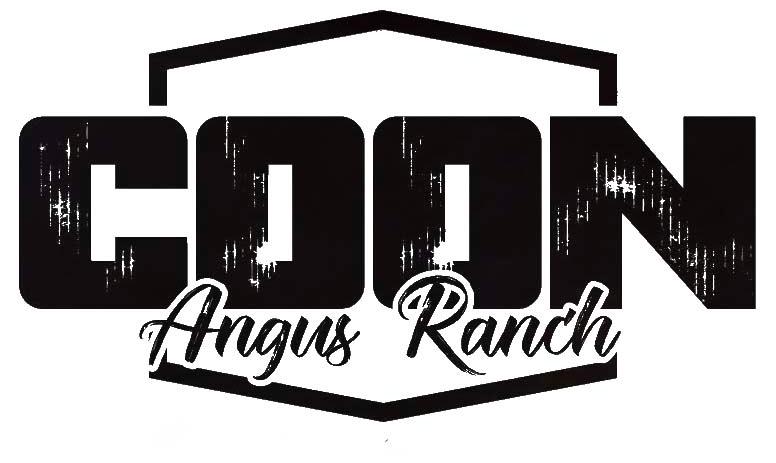
We’ve made it through another season, enduring periods of painfully cold and wet weather, yet we’re beginning to see the first signs of warmth and green-up. March and April mark a favorite time of year for many of us in the business of raising cattle. With prayers for moderate temperatures, plentiful rain, ample forage and a healthy new calf crop often answered. In Southwest Missouri, it also marks the kick-off for spring production sales; an opportunity to boost herd genetics for many, and for seedstock producers it’s the culmination of years of hard work for a single payday.
One event that SWMCA membership looks forward to every March is a visit by Josh Worthington. Josh is the Region 7 Missouri Cattlemen’s Association Vice President, but this month he was here to tell us about the cattle being offered at the Worthington Angus 10th Annual production sale in Dadeville. He was joined by Skylar Moore with the Joplin Regional Stockyards, who spoke about current market conditions and provided insight about marketing cattle in the coming year. Thank you to Worthington Angus and J.R.S. for sponsoring a delicious steak dinner, and to the SWMCA grill team for preparing it.
It’s always great to welcome pint-sized future members. This month we were joined by Luke, the grandson of Von and Linda Brottlund, and Maverick who is pictured with his dad, Skylar Moore. Maverick is already comfortable at the podium, telling his dad he wanted to make an announcement to the group.
Jay Chism, SW-REEC Director, presented a construction drawing for the new 3,600 square foot livestock building scheduled to break ground soon. There are already many features included in the plan to be excited about. There’s one on the wish list that has yet to be funded: an observation deck. A price tag hasn’t been determined yet, but several members expressed an interest in learning the amount, so hopefully we can help get that important feature added to the plan.
Our next meetings are scheduled for April 1 and May 6, followed by the three summer months of June-August without one. We hope you’ll join us for either or both, otherwise it will be quite a while before we see each other again!
Wishing you all a safe and blessed Spring, Danise Cummings Show-Me-Prime Angus Ranch LLC Secretary – Southwest Missouri Cattlemen’s Association
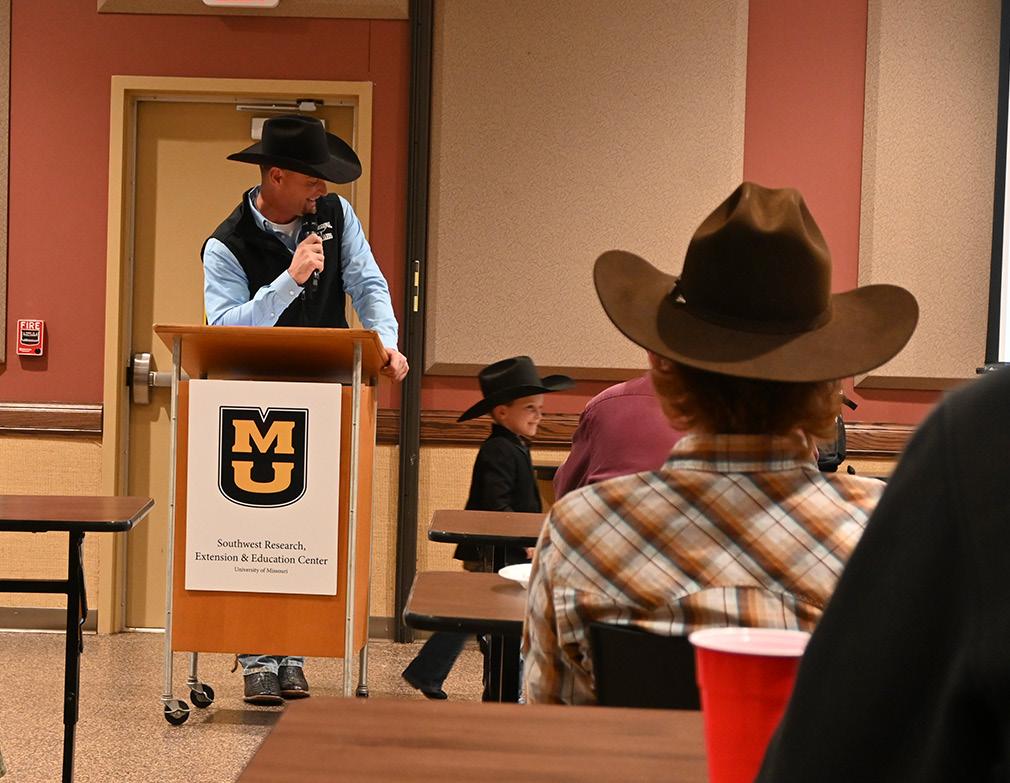
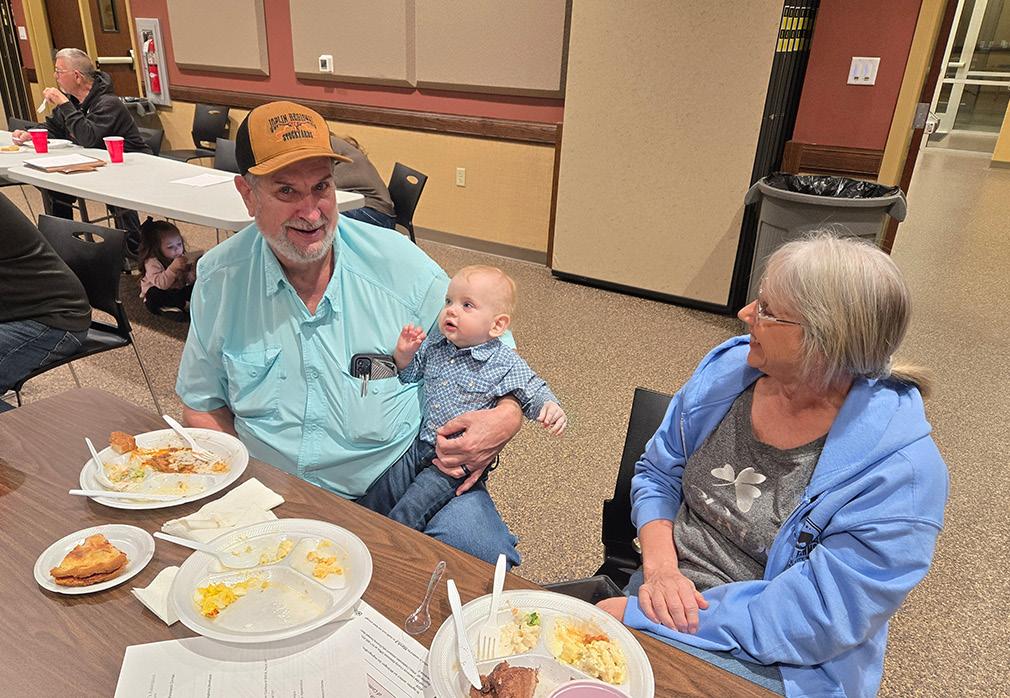
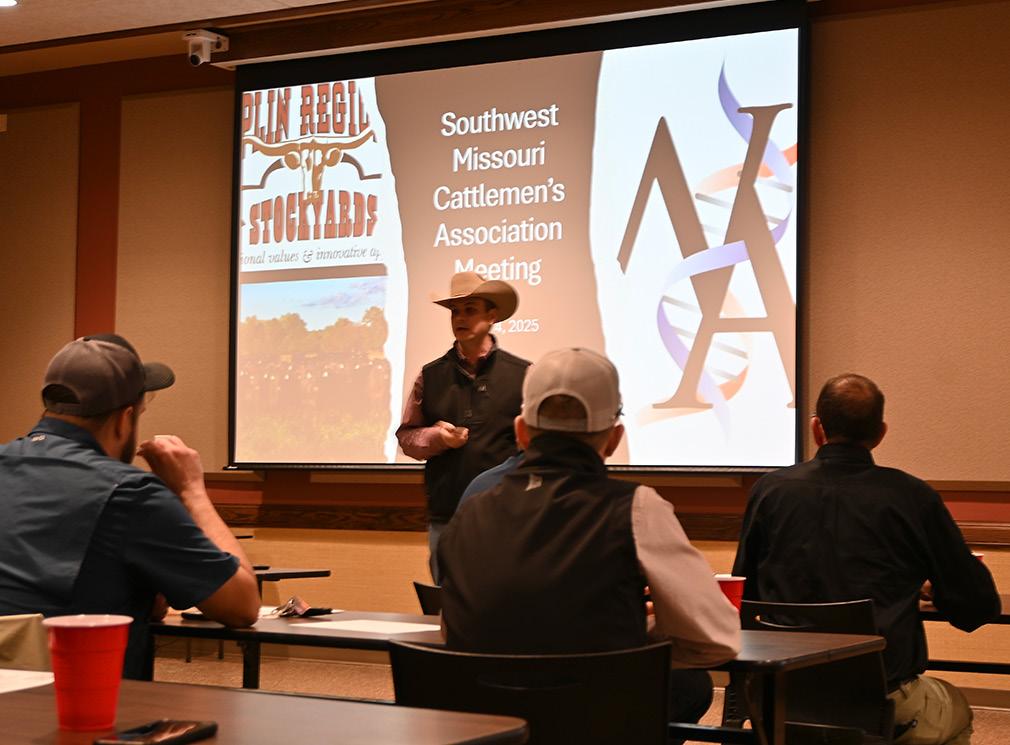
The Newton and McDonald County Cattlemen’s have been hot on the trail the past few months. They have made local and state environmental and community service achievements.
They recently earned the Top Recruiting Affilaiate for the Missouri Cattlemen’s Association as they have grown to be one of the largest affiliates in the state. Newton and McDonald County Cattlemen’s members are 20 people away from 200 paid producers. Currently have around 20 associate members looking to become producers.
NMCC officer Dr. Ronnie Rogers has also won the Top Hand award for the four years. With dedication from each member and officer, they have recruited the most members in 2024. Dr. Rogers also recived the Pioneer Award given to one cattleman member a year and is the highest honor of the Missouri Cattlemen’s Association.
On Wednesday, February 26, NMCC went to the capitol to express concerns affecting everyone in the livestock industry for our children and our grandchildren’s lives.
Members talked to numerous politicians, democrats, and republicans. They were made aware no matter what party we affiliate with, Missourians and Americans are dependent on meat, not fake meat, and a noncontaminated food chain in the name of free fertlizer.


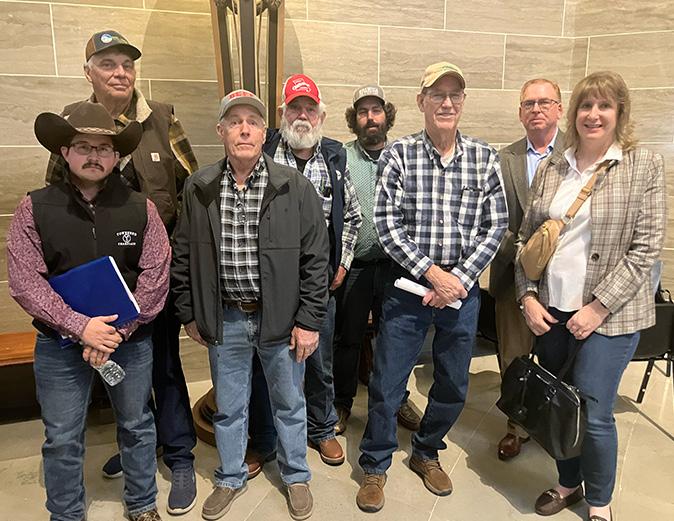
NMCC members were recognized as special guests and introduced on the Senate floor by Senator Jill Carter and Lt. Governor David Wasinger.
The dust trail ended with a meeting with Sen. Carter and DNR Chief Director Heather Peters. NMCC officers, members, seven business owners, and citizens explained how they are affected by industrial wastewater. The discussion was transparent, and bills were adjusted and crafted to become law in the next few months. The discussion lasted around four hours, but milestones have been reached toward a cleaner environment and a non-contaminated supply chain.
The Polk County Cattlemen’s Association is excited to announce the beginning of grilling season with a series of upcoming events centered around Missouri Beef Days. The festivities begin on April 18 with the Missouri Beef Days sponsor appreciation where the Polk County Cattlemen’s Association will be grilling and serving all-beef hotdogs for the event, showing appreciation to the sponsors who make Missouri Beef Days possible. The Polk County rural schools will also be a focal point of the Missouri Beef Days celebration where the association will grill hamburgers to serve the students, staff and faculty as part of the Missouri Beef Days celebration. This event is a wonderful way to connect with local schools and introduce the next generation to the importance of Missouri beef in their diets and the local economy.
The excitement continues as the Missouri Beef Days Rodeo and Cowboy Church events unfold. The Polk County Cattlemen’s Association will be selling ribeye steak sandwich meals and all-beef hotdog meals at both events. These delicious meals are not only a treat for the attendees but also serve as a testament to the quality and flavor of Missouri beef. Missouri Beef Days is held in Bolivar May 3-11, 2025, with other events added throughout the year. You can find the full schedule of events for Missouri Beef days at www.missouribeefdays. com.
The Polk County Cattlemen’s Association would like to thank Vitalix, Inc, for sponsoring the February monthly meeting. Vitalix is a leading name in the cattle nutrition industry and is renowned for its lick tubs, which are designed to promote year-round nutrition and ensure healthier, more productive cattle. This invaluable support from Vitalix highlights their commitment to the welfare of cattle producers and the success of the agricultural community. Travis Taylor, District Sales Manager for Vitalix, represented the company and provided insightful information to attendees about the benefits of their products. Joining him in the discussion were Dr. Zeb Gray of Diamond V and Adam Warren of Zinpro, both of whom contributed to the conversation with their expertise in animal health and nutrition. For more than three decades, Vitalix Inc. has been a trusted partner for cattle producers across the country. Their mission is grounded in trust and partnerships, centered around helping producers make informed nutritional decisions that directly impact the profitability of their operations.
The Polk County Cattlemen’s Association would also like to thank Endovac Animal Health for sponsoring the March monthly meeting. Courtney Collins,

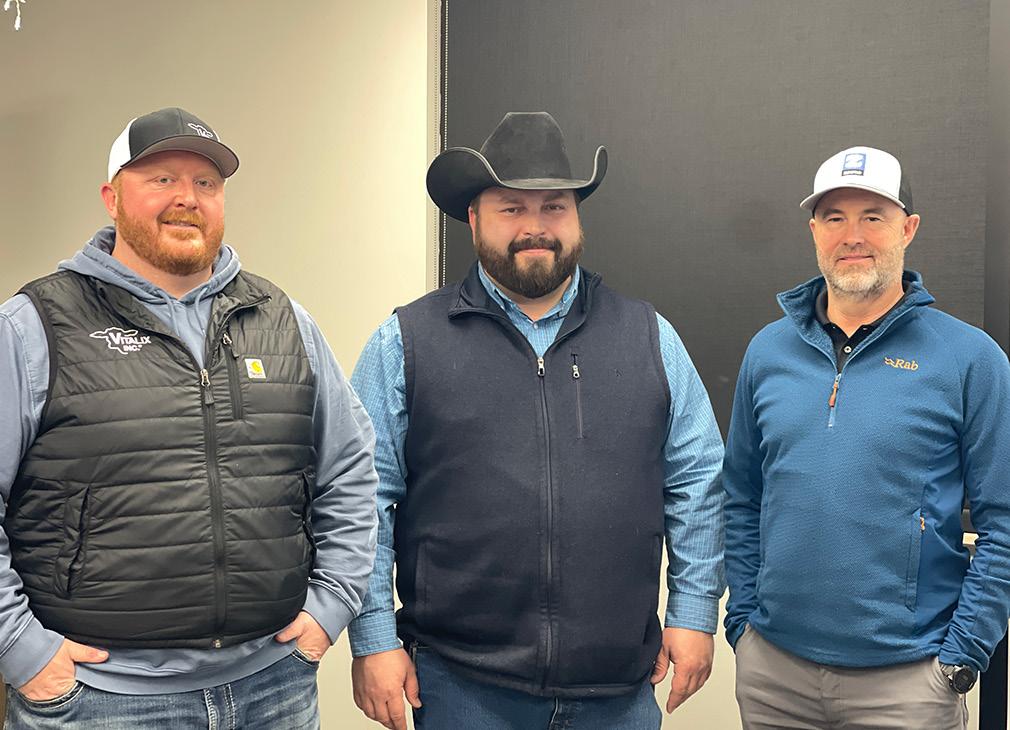
Key Account Manager for Missouri, Arkansas, and eastern Oklahoma, was the featured speaker. She provided attendees with valuable information about the benefits of the company’s products. Endovac, located in Columbia, Missouri, has been serving the animal health industry since 1983. Founded by the Sprouse family and currently owned by IMMVAC, Inc., Endovac is a proactive animal health company that focuses on premium science to improve cattle health. Their products help reduce the incidence of disease and improve overall herd wellness, ensuring that cattle producers can continue to operate successfully.
The Polk County Cattlemen’s Association is grateful for the ongoing support from companies like Vitalix and Endovac, whose contributions to the industry are helping to drive progress and success for cattle producers everywhere. With the ongoing challenges facing cattle producers, partnerships like these are vital for fostering growth, ensuring sustainability, and ultimately strengthening the agricultural community.
The South Central Cattlemen’s Association met on Tuesday, March 11, in West Plains at Howell Oregon Electric Cooperative. Our meal was catered by Colton’s Steakhouse and was sponsored by Vitalix and Howell Oregon Electric Cooperative.
After a brief business meeting, Travis Taylor, district manager for Vitalix, discussed the importance of supplement tubs for our operations. He further discussed three specific tubs.
The breed back tub is an excellent tub to use to help cows milk better and maintain a good body condition score which in turn increases the chances of the cow to conceive when the bulls are turned back out. The breed back tub also provides mannan oligosaccharide, or MOS a fancy word for prebiotics, to both the cow and the calf which helps prevent scours in calves.
As the name implies, the kickstart weaning tub is recommended during weaning. The tub helps support the rumen and digestive system; gives immune support; and helps improve the calves average daily gain.
The fescuelix tub is especially important in our area as the weather gets warmer and the fescue grazing cattle have an increased risk of fescue toxicity. The fescuelix
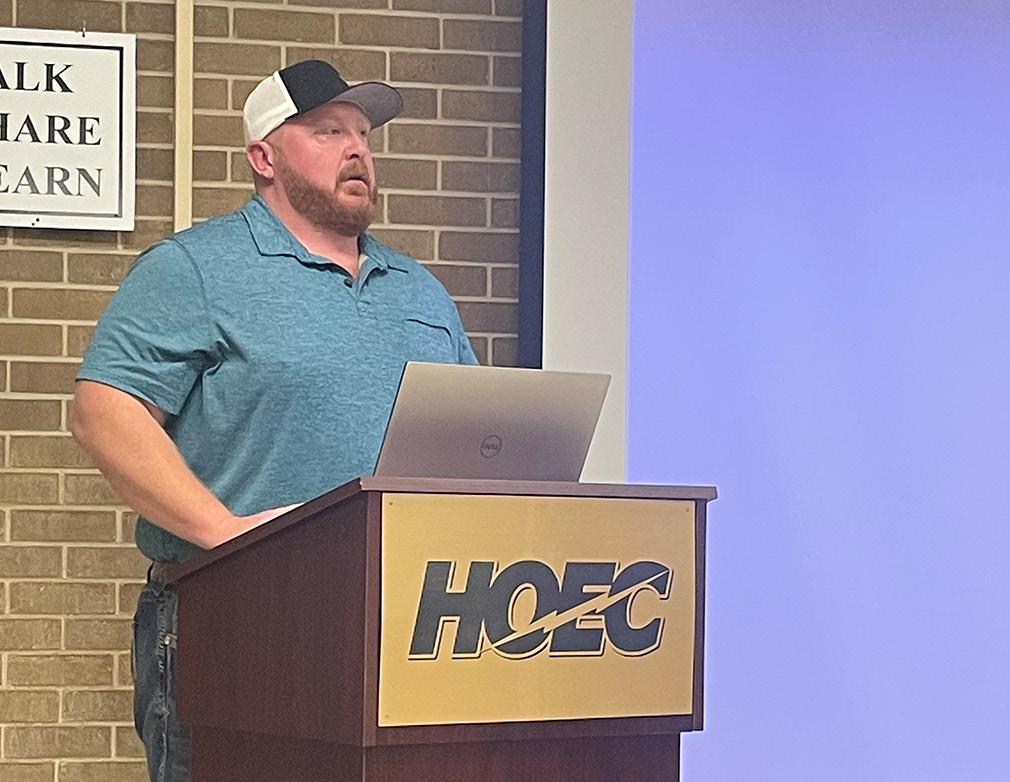
tub contains a quick absorbing chelated zinc which helps in vasodilation and keeping cattle cool during the summer months.
Travis then opened the meeting up to questions. The next meeting will be on April 17 at 6 p.m. Quail Forever members will be discussing warm season grasses. All are welcome to join us that evening.
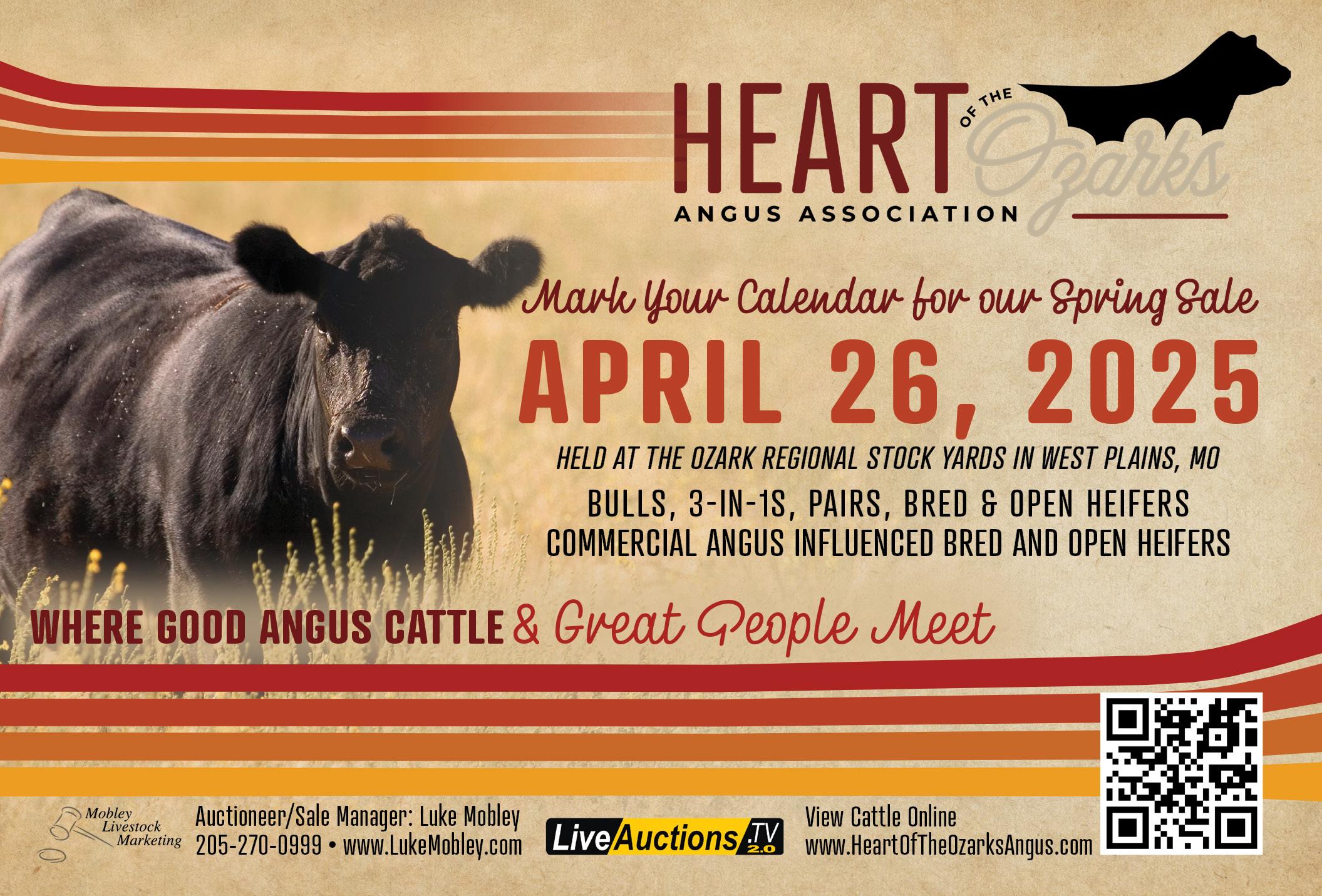
The Lafayette County Cattlemen have been busy. On February 25, members grilled 300 ribeyes steaks at the American Legion Hall in Higginsville for the MFA Open House. Thanks to Bratcher’s Market in Concordia for always providing top quality beef for our cookouts and events.
That same evening at the Mayview Community Building, the monthly educational meeting was presented by Hannah Copenhaver of Crop Insurance Solutions. Her program provided an update on the Livestock Risk Program and she compared results of last year’s market and insurance values compared to exactly one year later. She walked attendees through a worksheet to show costs and values for the term of insurance.
On March 1, LCCA kicked off Ag Month with their annual meeting held at the Mayview School Community Center. Social hour was sponsored by Eric Lockard of Assured Partners. The event also included music by Emmitt Rickey, sponsored by Thad Madsen with State Farm Insurance of Odessa. The dinner featured rib roast, smoked and sliced by Bates City BBQ, complimented with an array of sides and desserts furnished by members. Lafayette County has some great cooks!
President Darrell Neuner opened the meeting with a welcome and reminded people of the in-kind forms on the table for matching the MCA-NRCS grant. Secretary Kathy Harris had provided minutes of the previous
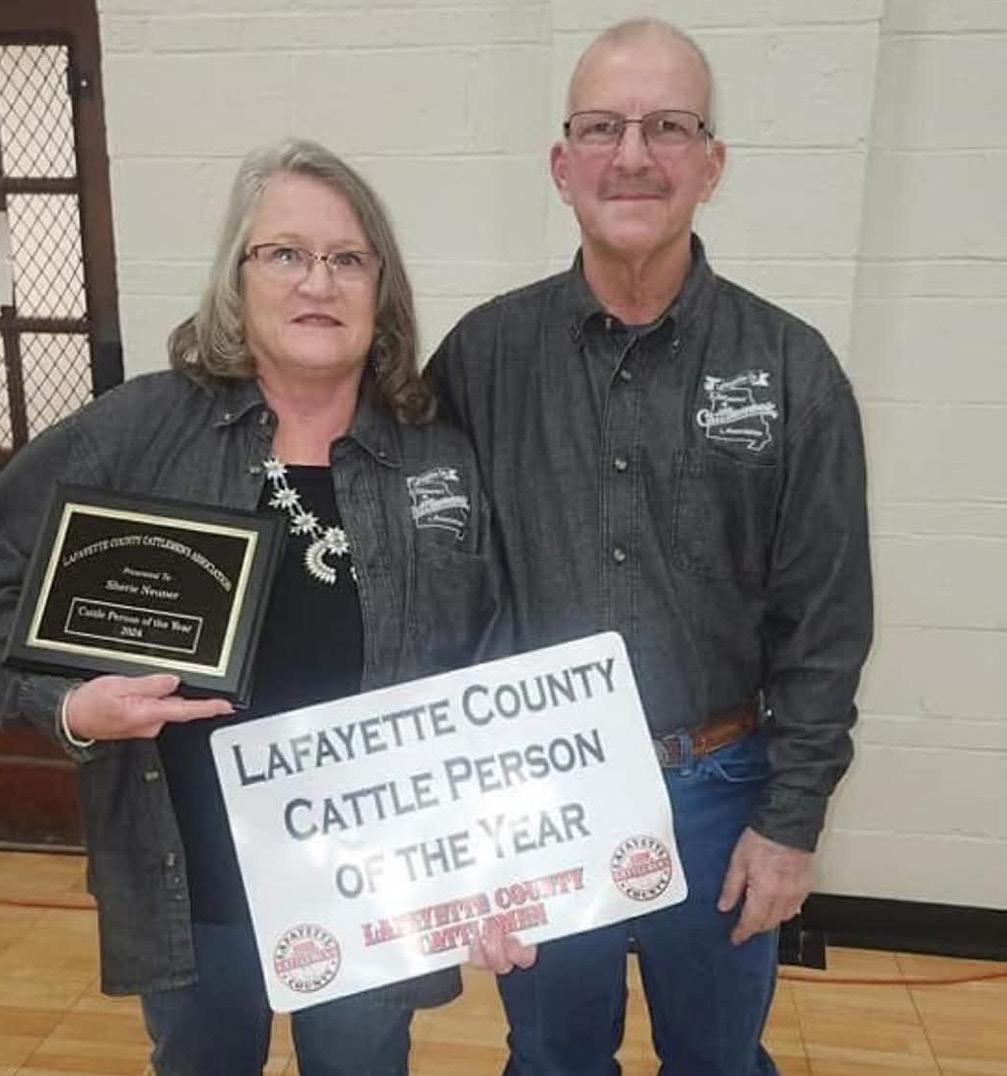
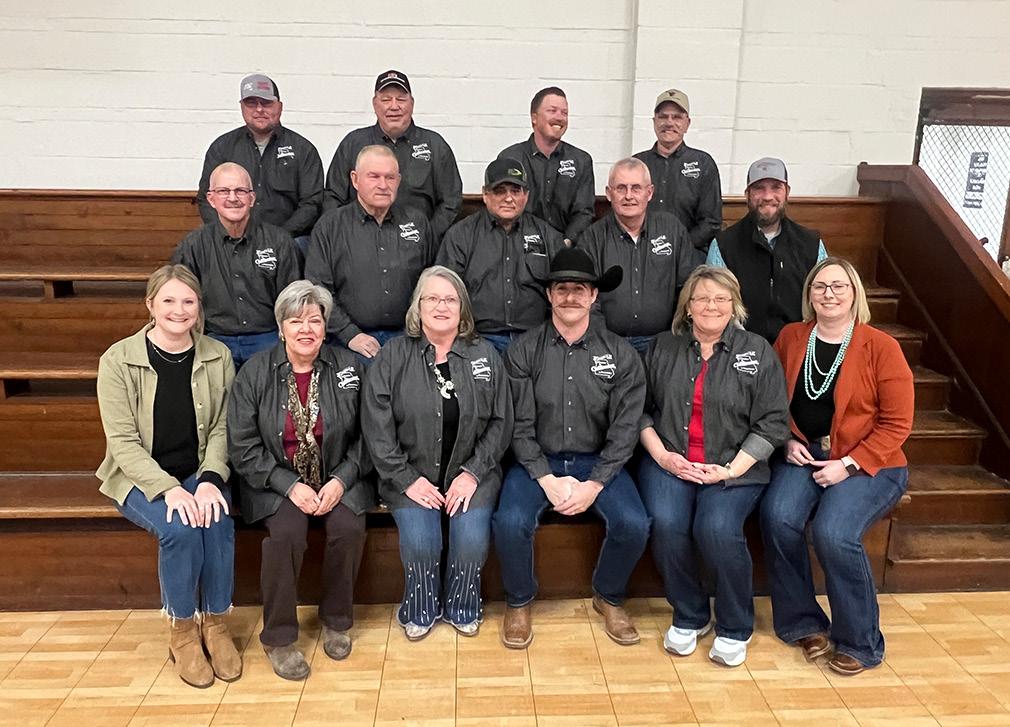
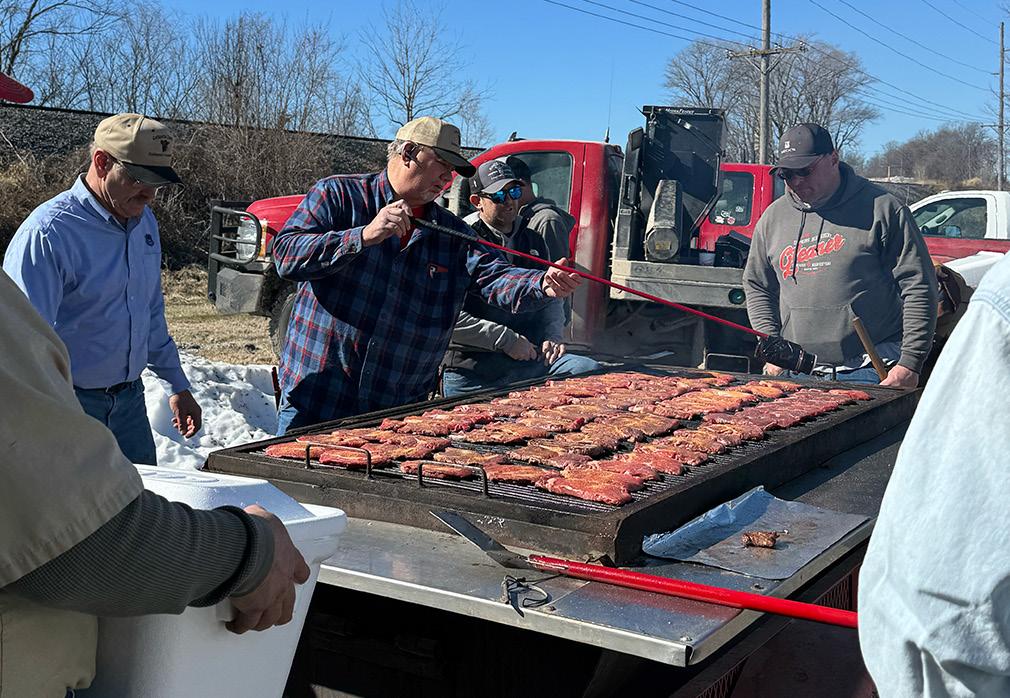
meeting and a take home schedule of upcoming events. Treasurer Sherie Neuner provided copies of the Treasurer’s Report on the tables.
The meeting began with Tracy Mershon and Barbara Copenhaver, President and Vice President respectively of the Missouri Beef Industry Council. They shared information on checkoff projects in Missouri and explained how the council elections work. Marsha Corbin reported on the Cattlemen’s Beef Board meeting held in San Antonio during CattleCon. She explained the distribution process of checkoff dollars at the national level. Patty Wood started the countdown for the Missouri State Fair Beef House and complimented Lafayette County for always showing up with a full crew, ready to work to serve beef!
Several members received recognition during the evening. Cattle Person of the Year was presented to Sherie Neuner and Darrell Neuner was thanked for his two years of service as President of LCCA.
(Meeting report continued in next month’s article. )
St. Clair County Cattlemen’s Association met on Tuesday, March 11, at Landmark Restaurant in Lowry City with 25 members and guests in attendance. Jordan Gottlieb with New York Life Insurance Company was one of the presenters for the evening. Jordan discussed how resilient farmers and ranchers are the backbone of our country. Gottliegb is originally from New York. He continued his passion in agriculture by getting a bachelor’s in agricultural economics from Kansas State University. He is a member of the Kansas Livestock Association, Missouri Cattlemen’s Association, and NCBA, and a proud supporter of agriculture. Jordan explained the importance of casting the family business to the next generation. Jordan also explained debt handling and how this topic may not be easy to discuss with your family. Equal does not mean fair and structuring is not always easy. When making the decision of how to divide the family farm between children and non-farm children, sometimes a buy-andsell agreement is a must to ensure the continuity of your farm/business. Jordan has visited and made house calls in 27 states. With over 17 years of experience, he found how much he enjoys getting to know his clients.
Kenneth Ball, MCA Region 3 Grazing Coordinator, was the second presenter for the evening. He spoke to the group on conservation service. Kenneth is from Dade County and has over 14 years of professional experience with his previous role at the Soil and Water Conservation District in Dade County. He is familiar with the grazing management field and works with farmers and ranchers to implement impactful grazing management strategies through the Natural Resource Conservation Service. If you have questions on conservation and grazing management, feel free to contact Kenneth.

Thank you to Jordan Gottlieb, with New York Life Insurance Company for sponsoring our meeting and Kenneth Ball from MCA for speaking. We also thank Landmark for preparing a wonderful meal.
St. Clair County Cattlemen’s Association attended the 57th Annual Missouri Cattle Industry Convention & trade show on January 17-18, 2025. St. Clair County Cattlemen’s members attended several meetings and the trade show. The St. Clair County Cattlemen’s Association was awarded the Outstanding Affiliate in Beef Promotion at the Association Honor’s Reception. Congratulations St. Clair County Cattlemen’s members.
St. Clair County Cattlemen’s Association
Memorial Scholarship in Memory of Paul Tom Firestone, Orval Johnson, David Barger, and Larry Moore Criteria
1. The applicant must be a resident of St. Clair County.
2. Applicant must be a high school senior or a full-time college student and have a GPA of 2.5/4.0 or better. The applicant must have been a full-time student (high school or college) the previous year.
3. The applicant must major in an agricultural-related field.
4. Scholarships will be presented at the Annual St. Clair County Cattlemen’s Meeting. To redeem scholarship, recipients must provide St. Clair County Cattlemen’s Association with proof of college enrollment.
5. Applicant must submit, with the application, the most recent available high school or college transcript to St. Clair County Cattlemen’s Association for proof of grade point average and enrollment.
6. Applicant must demonstrate leadership potential through extracurricular activities and work experience.
7. Preference may be given to those who have a need for financial assistance, but it is not necessarily the determining factor. Preference will also be given to students who plan to attend Missouri colleges and universities.
St. Clair County Cattlemen’s Association are holding a scholarship fundraiser for a Ruger American Predator Kryptek 308 WIN. Only 500 tickets are sold, and they are $5 each. The drawing will be held on Labor Day weekend.
Next meeting is scheduled for April 20 at Four Fillies Mercantile with Heiman, Inc as our sponsor. Hope to see you there!
Source: by Lane Giess, American Simmental Association Geneticist
ASA has officially released the $Gain economic subindex and Dry Matter Intake (DMI) as a part of the EPD suite on Herdbook.org. What is $Gain, and how can it be used responsibly?
The business of a seedstock producer is to provide genetic improvement for traits pertinent to economic success through all segments of the beef industry. An example of this are premiums for higher-quality carcasses. These premiums have led to drastic genetic selection for improved marbling in most breed populations. For this reason, seedstock producers play a pivotal role in shaping the genetic foundation of the beef industry. Traits that are associated with actual profitability are what we animal breeders call economically relevant traits (ERTs). Selection for ERTs ensures that commercial cattle producers have access to genetics that enhance profitability throughout the supply chain. Traditional selection for seedstock producers, however, has often over-emphasized growth traits such as weaning and yearling weight, and as such a more balanced approach is necessary to optimize biological and economic efficiency in our cow herds.
One of the more recent concerns in the business has been related to feed “efficiency” in feeder cattle. The reason for the quotes around “efficiency” is that in many cases, the tools we have developed to address feed conversion have been related to biological efficiency
rather than economic efficiency, which can sometimes be antagonistic to meaningful improvement. A solution to this is the $Gain economic subindex developed by International Genetic Solutions to more appropriately address selection for improved feedlot performance by optimizing the economic efficiency during the finishing phase. Unlike traditional single-trait selection for dry matter intake (DMI) or residual feed intake (RFI), $Gain balances both the economic component of average daily gain (ADG) and DMI, ensuring that the most profitable animals are identified. The result of $Gain is already factored into both $API and $TI, meaning we already factor the relationship of value of gain to the cost of intake in both indexes.
The $Gain prediction is expressed as the difference in daily profitability of animals in the feedlot based on their combination of DMI and ADG expected progeny differences (EPD). ADG is positively weighted by the value of a pound of gain, and DMI is negatively weighted by the cost of a pound of dry matter. For example:
Bull A = $0.10 $Gain EPD
Bull B = $0.00 $Gain EPD
You would expect progeny from Bull A to be $0.10 more profitable per day than progeny from Bull B due to a combination of feed requirements and growth potential. $Gain is fundamentally a ratio-based prediction that accounts for both intake and gain. Animals that consume large amounts of feed but exhibit superior growth rates are recognized as desirable, as are
Continued on page 60

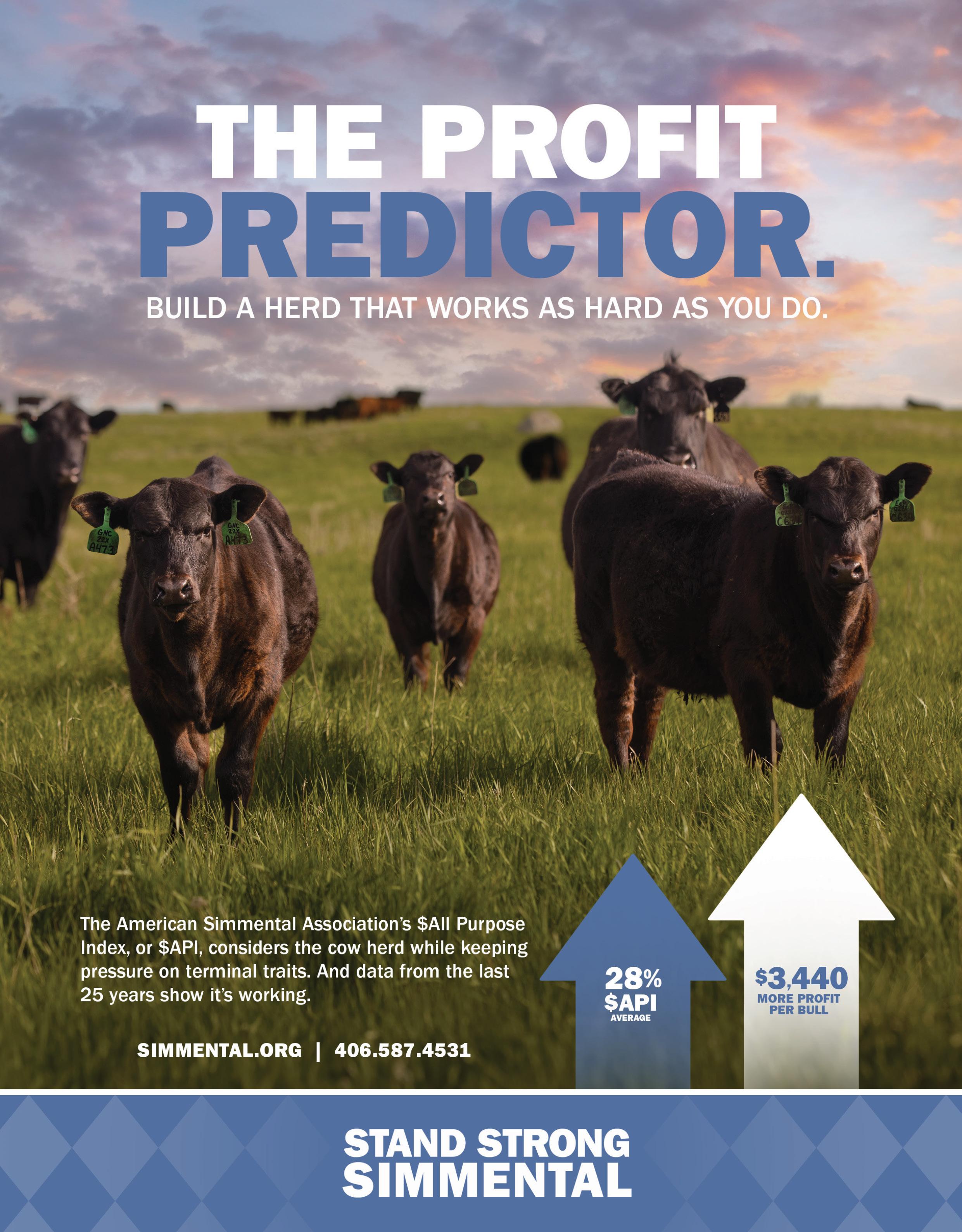
those that consume less but still maintain appropriate growth. Conversely, animals that eat excessively without proportional growth, or those that eat minimally but fail to grow, are penalized within the prediction. This balance ensures that selection decisions are aligned with true economic efficiency, rather than simply reducing intake without considering performance outcomes. Many studies have found a positive genetic correlation between DMI and growth traits (weaning weight, yearling weight, etc.) exists. For instance, studies have shown that DMI is positively correlated with ADG, meaning that selection for reduced DMI alone can inadvertently lead to slower-growing, smaller-framed cattle. This trade-off underscores the importance of an economically driven approach like $Gain rather than a narrow focus on intake reduction.
Many breeders might argue that a tool that addresses this problem already exists in the Residual Feed Intake (RFI) EPD. Residual feed intake (RFI) has been widely used as a measure of feed efficiency, but it presents inherent challenges. RFI is calculated as the difference between an animal’s actual feed intake and its predicted intake based on maintenance and growth requirements. However, RFI merely quantifies variation rather than reflecting true feed efficiency. The issue lies in its failure to account for differences in growth and output, which are crucial in determining profitability. For example, two animals with the same RFI may differ significantly in total pounds gained, affecting their overall economic
value in the feedlot.
Furthermore, biological efficiency — the concept underlying RFI — does not always align with economic efficiency. Different types of cattle can be profitable depending on the level of input received and their outputs. For example, cattle that consume more feed but achieve superior gains may be more valuable than those that consume less but grow at a suboptimal rate. While RFI may be related to profit in its attempt to identify more biologically efficient animals, it does not directly predict differences in profit. Because of this, there can be a large disparity between animals with the same RFI and actual profit. It is certainly possible for animals identified as being ideal for RFI to have a significantly poor ability to produce profit in the feedyard. A holistic approach that incorporates the economics of intake and growth is essential to optimizing profitability.
Producers should exercise caution when making genetic selections based solely on DMI reduction or RFI. While reducing feed intake may seem appealing, it can lead to unintended consequences such as smaller, slowergrowing cattle that do not maximize economic returns. The $Gain prediction offers a more comprehensive selection tool by incorporating both intake and gain into a single economic framework.
$Gain and DMI are now available in the suite of EPD on Herdbook.org.
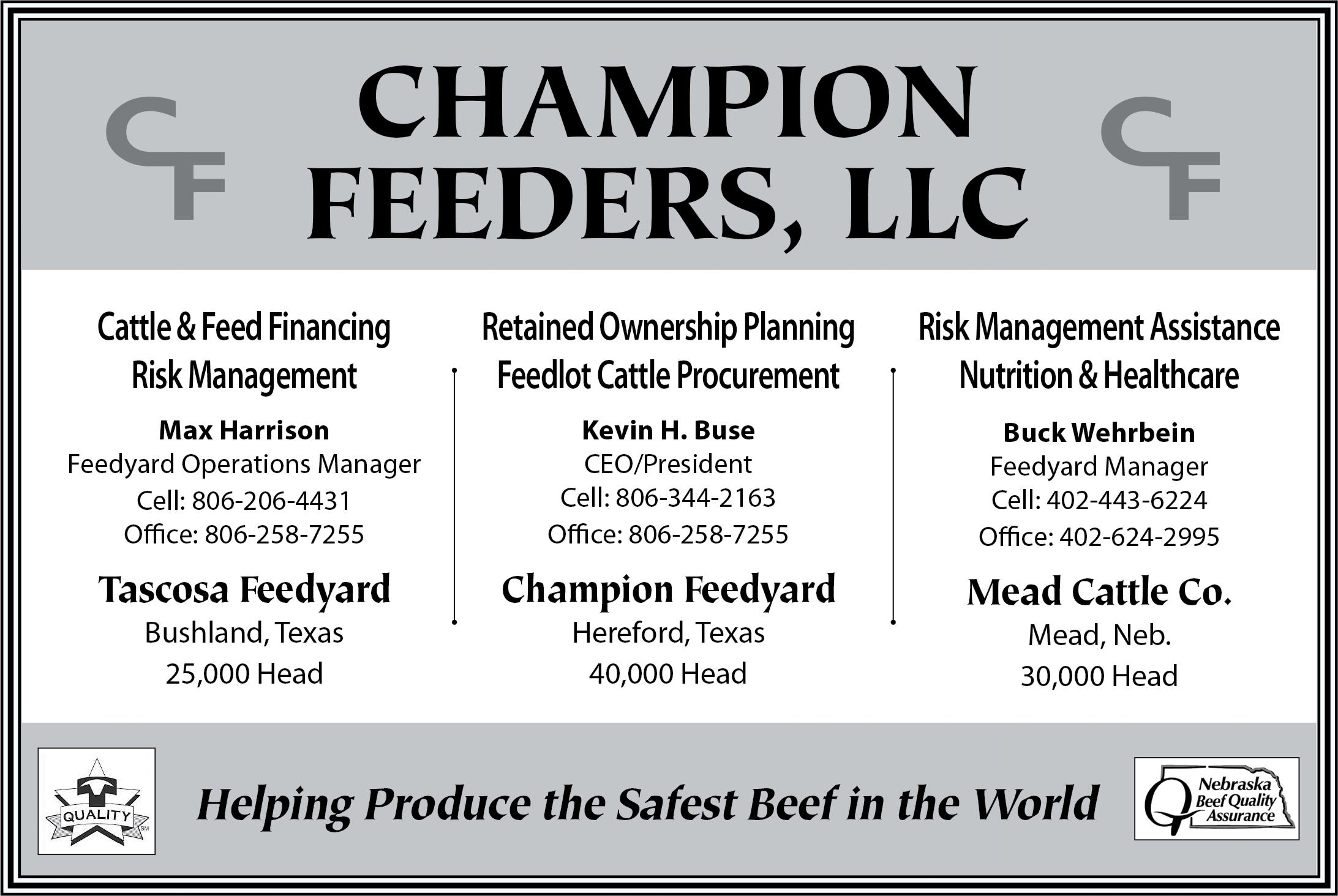

Source: by Jon DeClerck, PhD, American Simmental Association
The American Simmental Association (ASA) is excited to bring the 2025 Fall Focus to Columbia, Missouri, on August 22–23. Fall Focus is ASA’s premier educational and networking event, designed to bring together producers, industry experts, and researchers to discuss the most pressing issues facing the beef industry. Each year, the program delves into key industry segments, offering valuable insights and practical strategies to help cattle producers stay ahead of the curve.
Fall Focus isn’t just a conference; it’s a hands-on experience. This year, the Missouri Simmental Association will kick off the event on Friday, August 22, with a tour and educational program highlighting the state’s deep-rooted Simmental influence and its prominent role in the cow-calf industry. This will provide attendees an opportunity to see firsthand how Missouri producers are implementing innovative breeding and management strategies to enhance efficiency and profitability.
The Saturday, August 23 session, led by ASA, will take a deep dive into the cow-calf sector, focusing on the balance between genetic efficiency and industry demands. Research consistently shows the most costefficient cows — those weaning a high percentage of their body weight, breeding back early, and sticking around for the long haul — are moderate-framed and conservatively sized1. But here’s the rub: the U.S. cow herd is at its smallest since 19612 — with record-high retail beef demand3. Packers and feedlots, hungry for supply, are clamoring for bigger calves4, which tempts producers to retain larger-framed heifers that mature into bigger cows5. Science says moderate cattle win on efficiency; the market says go big. That’s the paradox Fall Focus aims to unpack.

This year’s theme builds on the foundation set at the 2024 Fall Focus in Amarillo, which examined feedlot and packing sector priorities. That discussion highlighted the growing demand for larger carcasses, while Columbia shifts the conversation to the cow-calf level, addressing the industry paradox of balancing cost-efficient maternal genetics with market-driven growth demands. By connecting these perspectives, ASA aims to align the entire beef supply chain. Attendees will gain valuable insights and practical tools to identify highly productive, cost-efficient cows while still producing calves that meet today’s feedlot and packer requirements.
Additionally, the IGS Science Team will take the stage to present updates on newly released EPD and provide a preview of upcoming genetic advancements in development. This session will give producers the latest science-backed tools to make more informed breeding and management decisions.
The 2025 Fall Focus is a chance to see theory meet practice in real time. Mark your calendars and join us in Columbia, Missouri, on August 22–23 to be part of this critical conversation shaping the future of the beef industry.
Footnotes
1. Beck, P., et al. (2017). “Matching forage systems with cow size and environment for sustainable cow-calf production in the southern region of the United States.” Ohio State University Beef Newsletter, July 2017. https://u.osu.edu/beef/2017/07/04/ cow-size/.
2. USDA National Agricultural Statistics Service (NASS). (2025). “Cattle Inventory Report, January 1, 2025.” https://www.nass. usda.gov/Publications/.
3. National Cattlemen’s Beef Association. (2025). “Beef Industry Review and Consumer Insights: February 2025 Edition.” BeefResearch.org.
4. Stewart, ShayLe. (2024). “Carcass Weights are Ginormous: 36 Pounds Heavier Than 3-Year Average.” DTN Progressive Farmer, November 11, 2024.
5. Olson, K. (2011). “Cow Size & Production.” *BEEF Magazine*. https://www.beefmagazine.com/cow-sizeproduction.
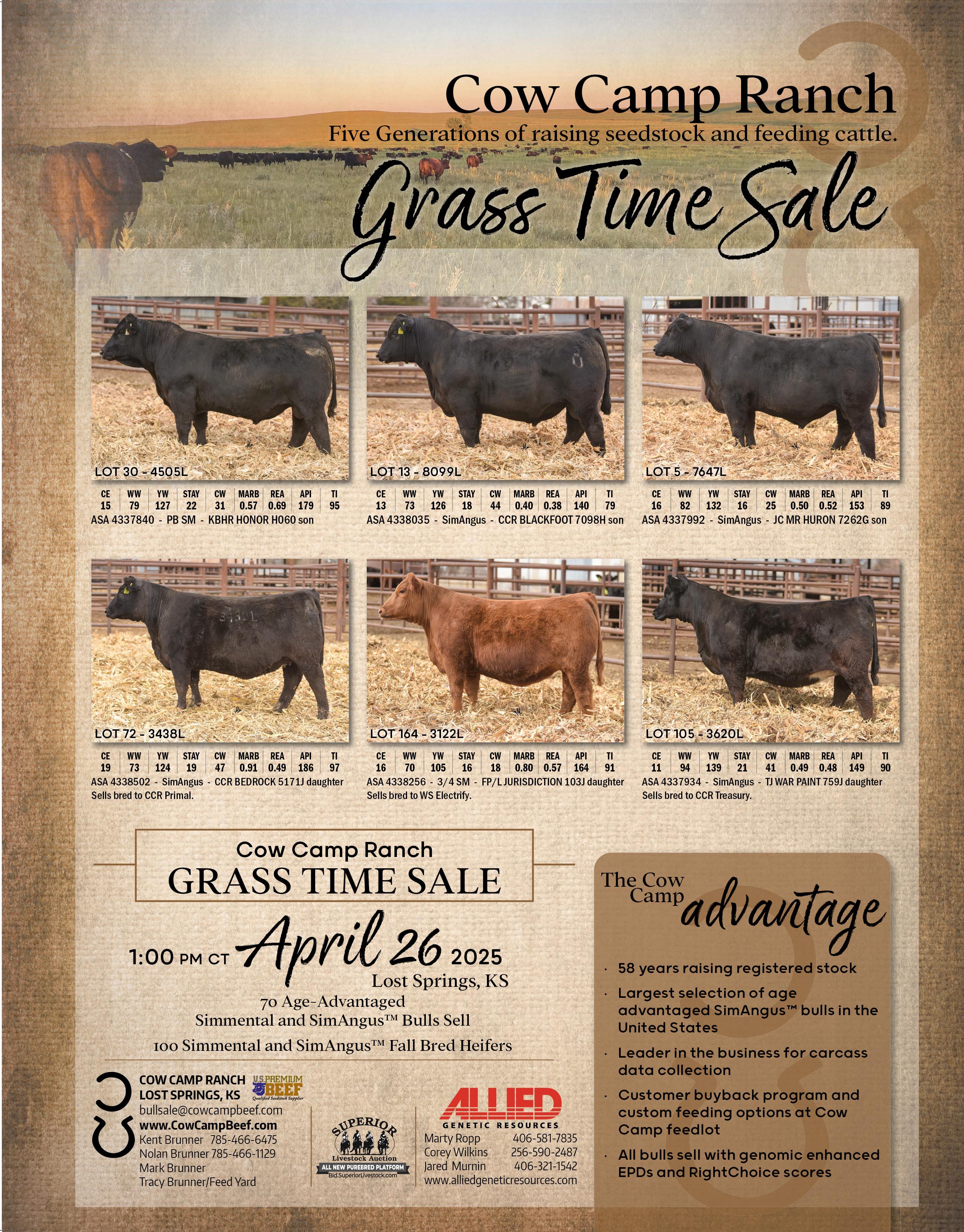
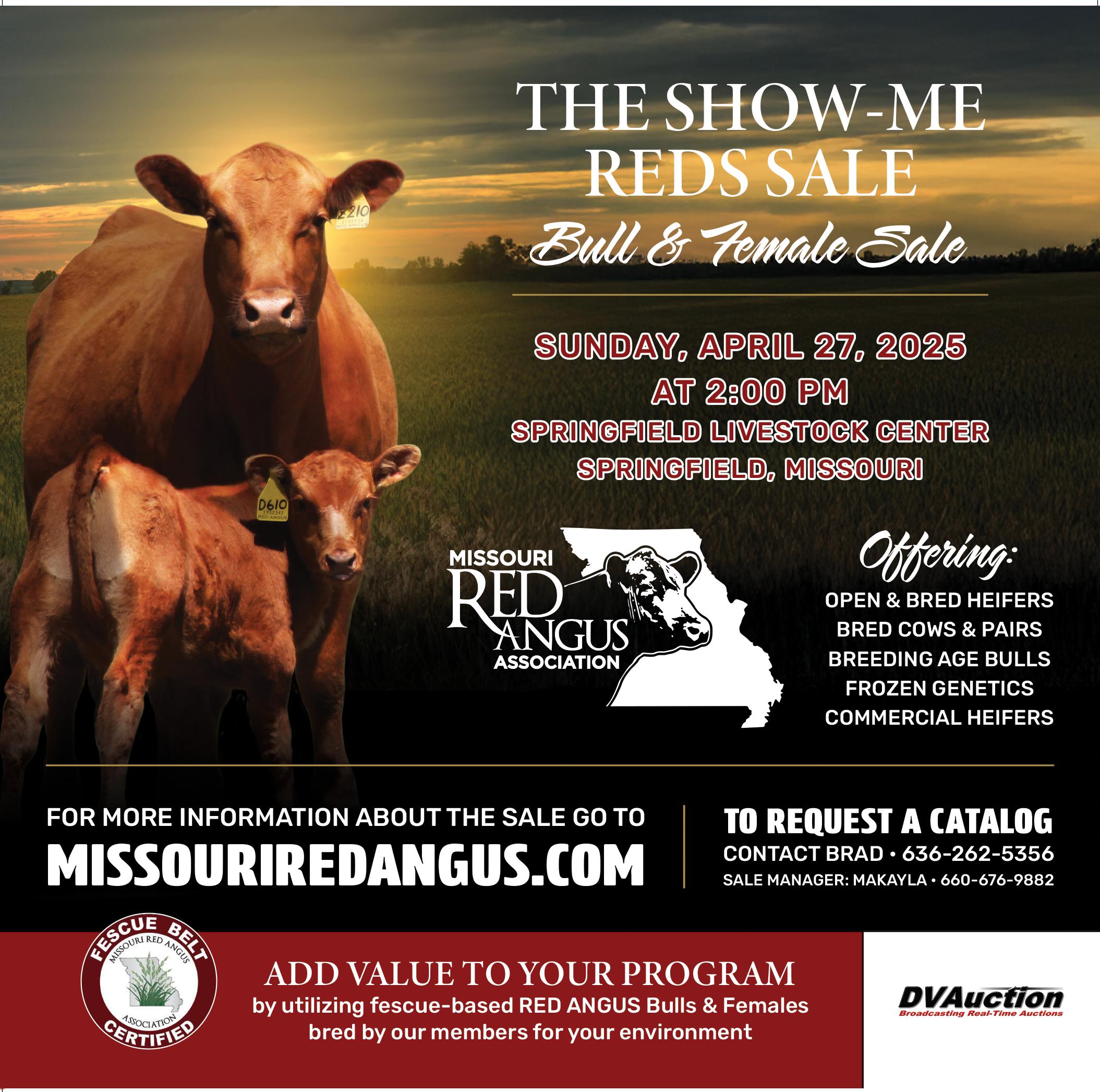

Save the date for the Inaugural Red Angus Youth Expo to be held June 8-13, 2025 in Springfield, Missouri.
The event, hosted by the Red Angus Association of America, will provide opportunities for youth and their families to engage in education, competitions and Junior Red Angus national heifer, steer and bull shows.
To volunteer to help with the expo or to donate for this prestigious youth event, contact Taylor Dorsey, junior coordinator, at youthexpo@redangus.org.
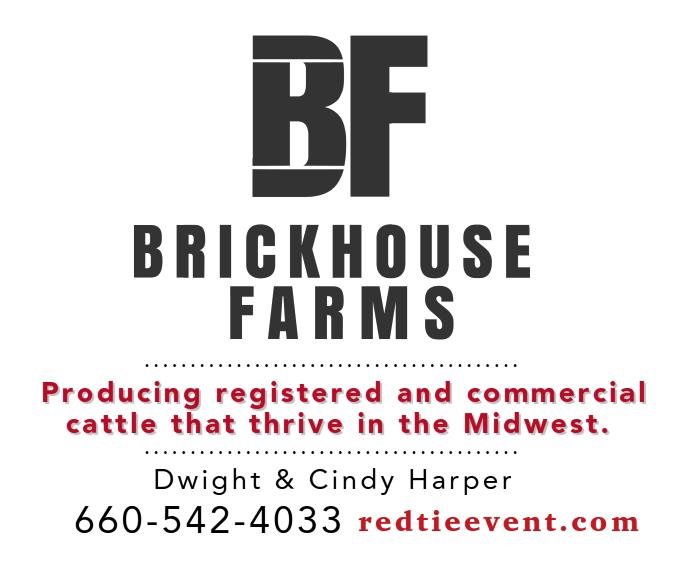



Ken & Brenda Keesaman
816-675-2503 • C: 816-390-4988
Kody Keesaman 816-724-1432
Kolten Keesaman 816-808-2846
3803 SW Rogers Rd. • Osborn, MO 64474
Ken@kkfarmsredangus.com www.kkfarmsredangus.com
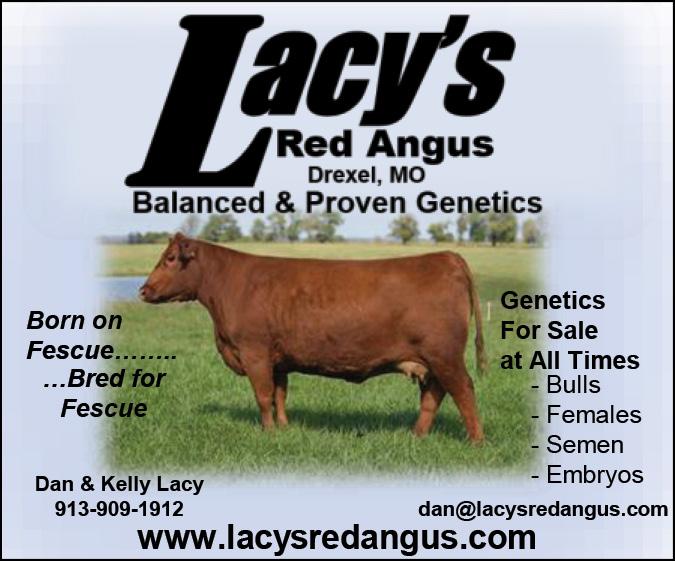
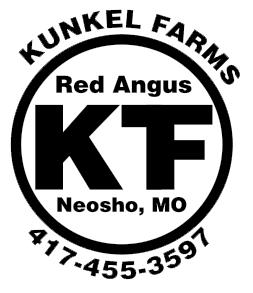


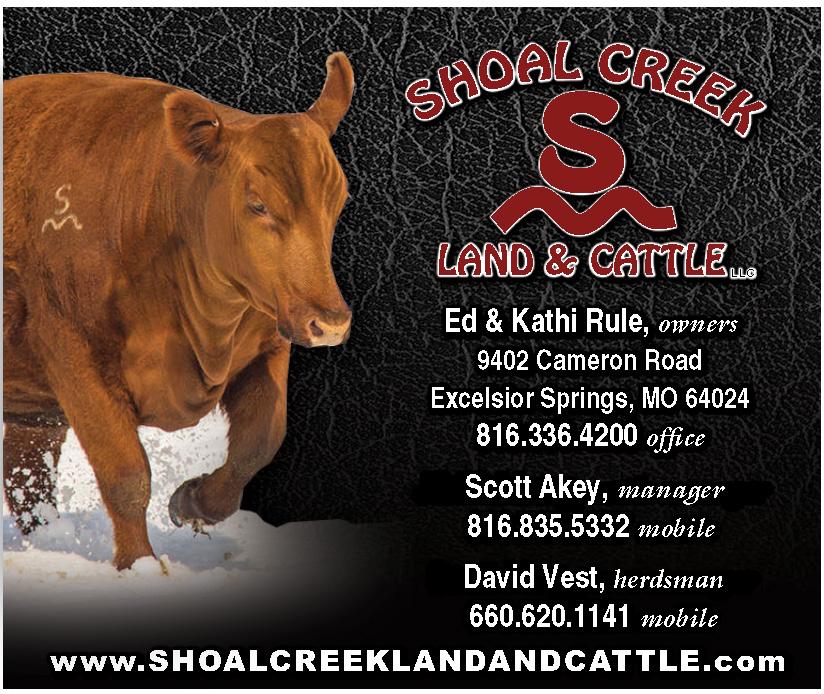



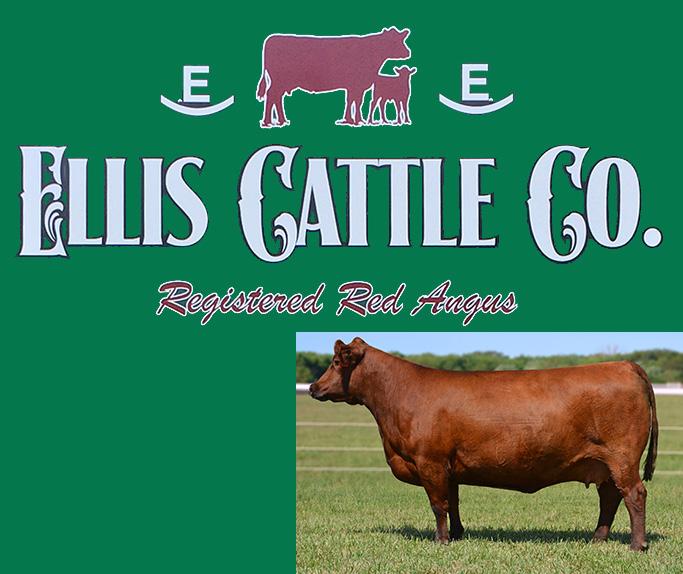
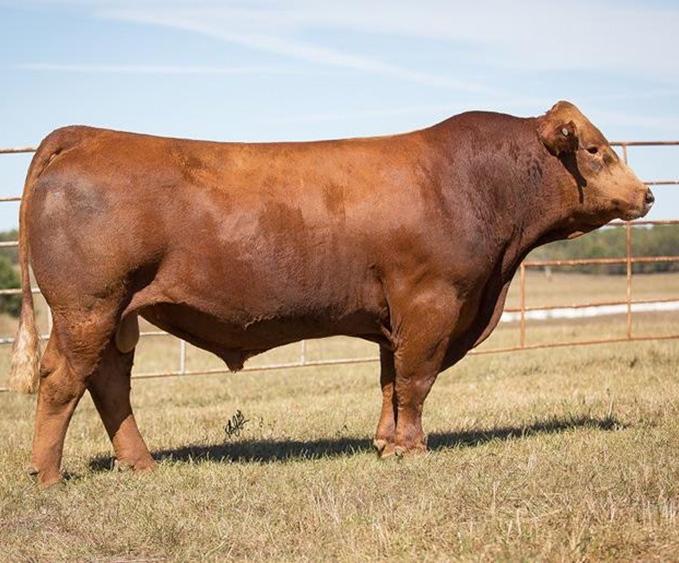
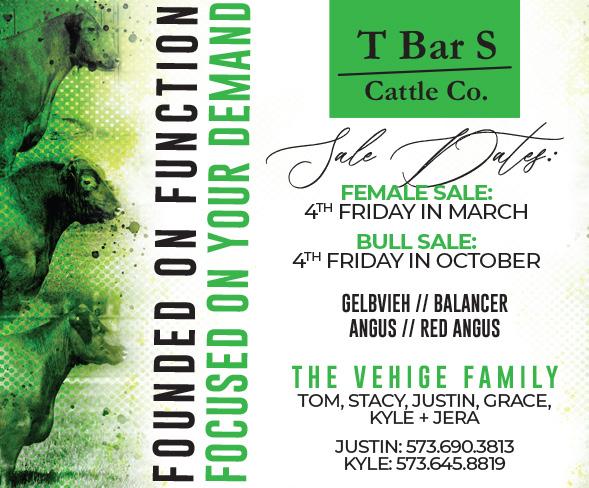


Source: Livestock Marketing Association
OVERLAND PARK, KANSAS —Livestock Marketing Association, applauds the reintroduction of the Amplifying Processing of Livestock in the United States, or A-PLUS, Act in the 119th Congress.
Brody Peak, chairman of the association’s government and industry affairs committee, said senate bill 782, house bill 1648 would remove an outdated restriction prohibiting livestock auction market owners from owning or investing in a small or regional packer or meat marketing business.
“Livestock auction market owners deserve the freedom to operate,” Peak said. “If they choose to supplement their marketing business by owning a local meat locker or investing in a regional packer, this should be encouraged, not banned.”
Lee Mora, an auction market owner from Fortuna, California, echoed Peak’s sentiment.
“Rural communities are losing agriculture infrastructure that is critical to the ability of ranchers to diversify with value added products,” Mora said. “Having local processing is vital to keeping these family operations thriving. In many cases, there is little to no outside investment that can be made to keep these plants open.”
“Allowing registered livestock market owners to invest in these smaller plants is essential to keeping local processing plants operating in these rural communities. It allows for competition at the livestock market which helps both entities thrive and ultimately benefits the local ranching community.”
LMA appreciates Rep. Mark Alford (R-MO), Rep. Jimmy Panetta (D-CA), Rep. Dusty Johnson (R-SD), Sen. Ben Ray Lujan (D-NM) and Sen. Joni Ernst (R-IA) for leading this effort.

Source: USMEF
Exports of U.S. beef trended higher than a year ago in January, according to data released by USDA and compiled by the U.S. Meat Export Federation. Pork exports were slightly below last January’s large totals, despite another outstanding performance in Mexico and Central America.
Demand for U.S. beef remains resilient in key markets
January beef exports reached 102,840 metric tons, up 3% year-over-year, while value increased 5% to $804.6 million. Growth was driven in part by larger exports to China and Canada, while exports to South Korea were steady in volume but higher in value. Strong value increases were also achieved in other key markets, including Taiwan, the Caribbean, Central America and the ASEAN. Exports of beef variety meat were the largest in nearly two years, led by larger shipments to Mexico, Egypt, Canada and China/Hong Kong.

“Demand for U.S. beef came on strong in the Asian markets late last year, and that momentum largely continued in January,” said USMEF President and CEO Dan Halstrom. “The performance in Korea is especially encouraging, given the country’s political turmoil and slumping currency. It is also gratifying to see exports trending higher to China, though we are concerned about access to the market moving forward, as many U.S. beef and pork plants are awaiting word on their eligibility beyond mid-March.”
Mexico and Central America shine again for pork exports, but shipments decline to Japan,
Pork exports totaled 243,965 mt in January, down 3% from a year ago, while value eased 2% to $668 million. Shipments soared to Central America and were the fourth largest on record to leading market Mexico. Exports also increased year-over-year to China/Hong Kong, the Philippines, Australia and New Zealand, but these results were offset by sharply lower shipments to Japan, Korea and Colombia.
“U.S. pork is coming off a record-breaking year in 2024 and we see opportunities for continued growth this year,” Halstrom said. “Our Western Hemisphere markets are obviously critical to this success, so the White House pausing tariffs on some goods imported from Mexico and Canada is certainly encouraging news. Duty-free access to Mexico, Canada and other free trade agreement partners has definitely underpinned global demand for U.S. red meat and delivered essential returns at every step of the supply chain. The majority of U.S. red meat exports are to countries with which we have trade agreements. Maintaining trust and access to these markets is critical to the continued success of the U.S. industry.”
Lamb exports fairly steady, with growth continuing in Mexico and Caribbean
January exports of U.S. lamb fell 7% from a year ago to 282 mt, while value was down 1% to $1.68 million. But muscle cut exports increased slightly in both volume of 255 mt and value of $1.46 million, led by robust growth in Mexico, Trinidad and Tobago and the Netherlands Antilles. These gains were partially offset by sharply lower shipments to Canada.
A detailed summary of the January export results for U.S. pork, beef and lamb, including market-specific highlights, is available from the USMEF website.

Source: USMEF
In the wake of a challenging year for U.S. corn and soybean producers, an updated study shows how exports of pork and beef provide support to their bottom lines. In 2024, U.S. pork and beef exports of $19.1 billion – an increase of $1 billion over 2023 and down just 2% from the 2022 record – had a significant impact on the corn and soybean industries, according to an independent study conducted by the Juday Group and released by the U.S. Meat Export Federation. The study quantified the returns that beef and pork exports brought to U.S. corn and soybean producers.
Nationally, U.S. pork and beef exports accounted for $2.24 billion in market value to corn, $525 million to distiller’s dried grains with solubles, and $1.12 billion to soybeans in 2024.
“Domestic feed usage is critical to our industries and the continued growth in red meat exports is encouraging. A significant share of the corn and soybeans we grow
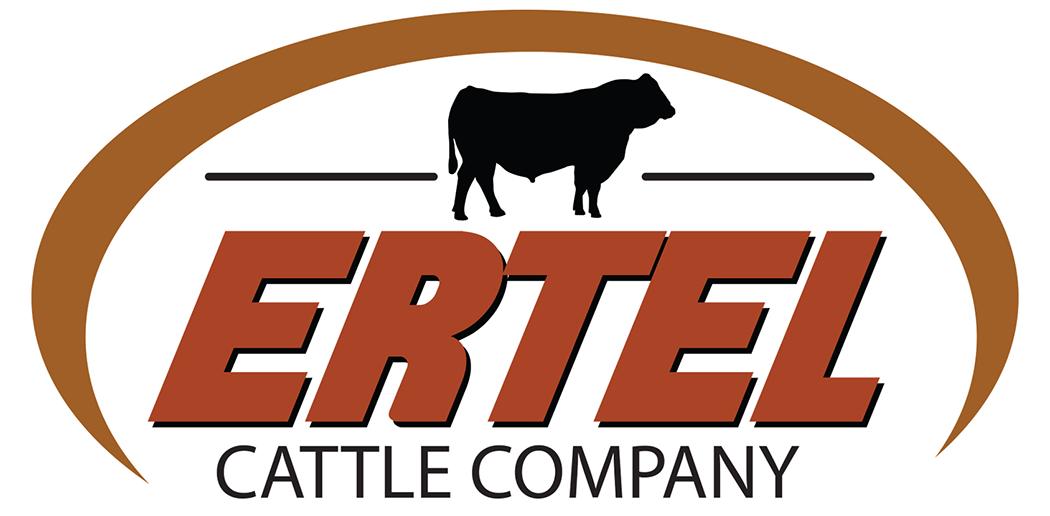
locally is ultimately exported through pork and beef,” says USMEF Vice Chair Dave Bruntz, who raises corn, soybeans and fed cattle in south-central Nebraska. “This study demonstrates how beef and pork exports drive value directly back to producers.”
Corn and soybean growers support the promotion of U.S. pork, beef and lamb by investing a portion of their checkoff dollars in market development efforts conducted by USMEF.
Key findings from the study, which utilized 2024 statistics provided by USDA’s National Agricultural Statistics Service and calculations by the Juday Group, include:
Exporting corn through U.S. beef and pork
• Beef and pork exports accounted for 525.1 million bushels of U.S. corn usage, which equated to a market value of $2.24 billion, at an average 2024 corn price of $4.27 per bushel.
• Beef and pork exports accounted for 3.04 million tons of DDGS usage, equating to $525 million, at an average 2024 price of $172.56 per ton.
• Beef and pork exports contributed an estimated total economic impact of 14%, or $0.59, of bushel value at an average price of $4.27 per bushel in 2024.
Exporting soybeans through U.S. pork
• Pork exports accounted for 100.7 million bushels of U.S. soybean usage, which equated to a market value of $1.12 billion, at an average 2024 soybean price of $11.11 per bushel.
• Pork exports contributed an estimated total economic impact of 13.2% of bushel value, or $1.46, at an average price of $11.11 per bushel in 2024.

Source: University of Missouri Extension
TUSCUMBIA, Mo. – Now is the time for forage growers to plan for drought, says Rudra Baral, University of Missouri Extension field specialist in agronomy.
Diversifying your forage base with warm-season grasses and legumes can provide a buffer against weatherrelated forage shortages, says Baral in a new MU Extension publication, “Maximizing Summer Grazing: A Guide to Warm-Season Forage Management in Missouri,” at https://extension.missouri.edu/ publications/g4167.
Baral’s publication comes on the heels of three consecutive droughts in Missouri and the secondwarmest year in the state’s history, says MU Extension state climatologist Zachary Leasor.
Warm-season grasses provide high-quality forage during hot summer months when cool-season grasses fade, Baral says. They are a cost-effective option that reduces soil erosion and provides wildlife habitat.
The right choice of forages can help reduce fertilizer costs, weed pressure and reliance on costly commercial feed like soybean meal. In the new publication, Baral lays out how warm-season grasses can help livestock producers maintain productive pastures in the summer.
Some of the Highlights Include:
A soil test will help farmers make decisions about crop selection, planting, fertilization, irrigation and weed and pest management. Other factors such as soil texture can affect pasture growth due to water retention, infiltration and nutrient availability.
Missouri’s climate is right for several warm-season grasses to survive, and Baral lists those in the publication. He gives the tentative planting time and characteristics of the grasses to match the local climate, soil type and grazing goal.
Adding legumes such as white and red clovers or alfalfa to warm-season pastures can boost productivity and lower fertilizer needs. Legumes can replace 50-80 pounds of nitrogen per acre. They fix atmospheric nitrogen, improve soil fertility over time and offer substantial soil health benefits that make pastures more resilient.
Legumes grow when warm-season grasses may be less productive, providing a consistent forage supply throughout the growing season.
Baral says that a mix of 15%-20% legumes mixed into pastures can ensure a balance that provides nutrition and resilience and avoids bloat in cattle.
Adding legumes can increase crude protein levels by 3 to 5 percentage points and relative feed value by 20 to 40 points, which in turn increases livestock body weight gains, says Baral.
Baral says it is important to consider other practices, including fertilizer management, grazing management, harvesting, cultural practices and mechanical and biological controls.
For more information, see the MU Extension publication “Warm-Season Annual Forage Crops” at https://extension.missouri.edu/publications/g4661.
On I-70, 4 miles east of Kingdom City, MO on outer road 573-642-7486
Every Monday: Slaughter Cattle 12:00 p.m.
Selling All Classes of Cattle 12:30 p.m. 1st Thursday Nite of Each Month: 6:00 p.m. Bred Cows and Breeding Bull Sale
Jack Harrison 573-999-7197 (owner)
John P Harrison ............... 573-220-1482
Claude Niemeyer 573-470-1017
Roger Temmen 573-680-4538
Justin Oberling .................. 217-440-7724
Glenn Stegman 573-619-8495
Source: University of Missouri Extension
COLUMBIA, Mo. – If you’ve ever seen a cow suddenly collapse in early spring, seemingly out of nowhere, you might have witnessed a case of grass tetany, says University of Missouri Extension state beef nutritionist Eric Bailey.
This metabolic disorder, historically linked to magnesium deficiency, can be a problem for cattle grazing lush cool-season grasses. Understanding the causes, symptoms and prevention strategies for grass tetany can help cattle producers avoid costly losses, says MU Extension state forage specialist Harley Naumann.
Grass tetany, also known as grass staggers, is caused by low levels of magnesium in the blood. It is most commonly observed in lactating cows grazing early spring growth of cool-season grasses like tall fescue. These pastures, while high in energy and protein, often have low magnesium levels and excessive amounts of potassium, which can interfere with magnesium absorption.
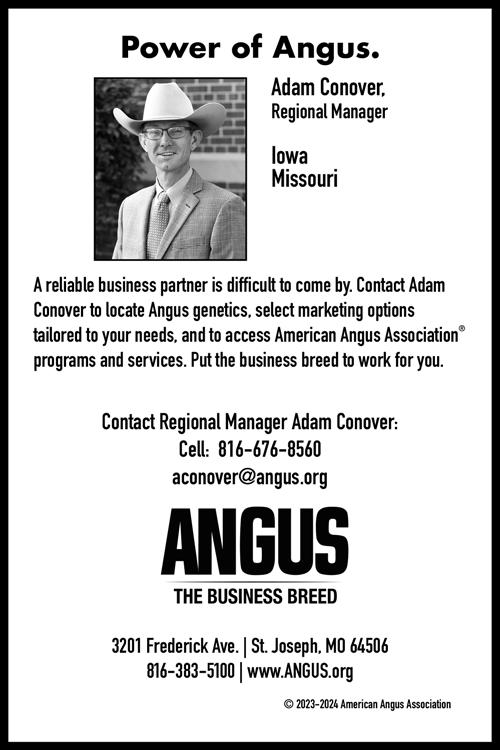
Environmental stressors such as frost and drought further alter the mineral composition of forages. Springcalving cows are especially vulnerable due to the high magnesium demands of lactation, which can quickly deplete their reserves.
Grass tetany doesn’t always announce itself with clear warning signs, but knowing what to look for can make the difference between saving and losing an animal, says Bailey. Early symptoms include:
Increased excitability. Teeth grinding. Excessive salivation. Muscle spasms. Loss of body control. Collapse and death in severe cases. Without immediate intervention, death can occur within hours.
For years, the standard recommendation was to supplement cattle diets with additional magnesium. Magnesium oxide is commonly added to mineral mixes or mixed into feed to increase intake. However, magnesium supplements are often unpalatable, leading to inconsistent intake among cattle, Bailey says. Additionally, despite supplementation, some cases of grass tetany still occur, indicating other factors are at play.
In acute cases, intravenous magnesium and calcium solutions administered by a veterinarian can treat the condition. However, prevention remains the best
approach since once symptoms become severe, survival rates decline significantly.
Research suggests potassium and sodium play a crucial role in magnesium absorption, and their balance in forages may be as important as magnesium itself.
While potassium is essential for plant growth, high levels in pastures can exacerbate magnesium deficiency. Potassium competes with magnesium for absorption sites in the rumen, so even when magnesium levels in forage are adequate, excessive potassium can block magnesium from leaving the rumen, increasing the risk of grass tetany.
Fertilization practices can further contribute to the problem. Heavy potassium fertilization, especially in early spring, may increase the risk of grass tetany by skewing the mineral balance in pastures, says Naumann.
Sodium’s overlooked role
Sodium plays a less obvious but equally important role in magnesium absorption. Sodium helps transport magnesium across the rumen wall, improving its availability to the animal. However, freeze-damaged grasses often lose significant amounts of sodium, potentially reducing magnesium uptake even further.
Low sodium intake in cattle diets can compound the issue. Providing free-choice salt or increasing the amount of salt in your free-choice mineral can support magnesium absorption and be a costeffective strategy for reducing the risk of grass tetany, says Bailey.
Soil phosphorus may play a critical role in preventing grass tetany in ruminants. MU research indicates that fertilizing tall fescue pastures to reach adequate soil phosphorus levels enhances the availability of magnesium in the forage.
This improvement in magnesium availability helps ruminants maintain proper magnesium levels in their diets, which is crucial for preventing grass tetany.
Managing grass tetany requires a multifaceted approach. Bailey and Naumann offer some key strategies:
Provide high-magnesium supplements: Make sure cows receive sufficient magnesium, especially during high-risk periods in early spring. Most “hi-mag” minerals have 6%-10% magnesium.
Increase salt consumption: Most mineral supplements contain 15%-30% salt. Choose a mineral that is closer to 30% salt, if possible. If not, consider mixing a bag of salt and a bag of mineral for cows in March and April.
Limit excessive potassium fertilization: Be mindful of pasture fertilization practices. Avoid heavy applications of potassium in early spring, which can suppress magnesium absorption in cattle.
Graze mixed pastures: Introducing legumes such as clover into pastures can help balance mineral content, as they generally contain higher levels of magnesium than grasses alone.
“Grass tetany remains a significant challenge for cattle producers, but with careful management and strategic supplementation, its impact can be minimized,” says Bailey. “Understanding the interplay between magnesium, potassium and sodium in forage systems is key to developing effective prevention strategies.”
For more information, contact your local MU Extension agronomy or livestock specialist.

Source: University of Missouri Extension
COLUMBIA, Mo.—Social media has changed how consumers connect with brands, but small business owners may find it a challenge to use social media to grow their business, says TaylorAnn Washburn of University of Missouri Extension.
Two new MU Extension publications, which are available for free download, help business owners take on social media with a focused approach, Washburn said.
“Simply being online isn’t enough in today’s digitalfirst world,” she said. “Having a clear strategy and an actively engaged audience is key for small business online presence, whether that’s generating sales, building an email list or increasing on-site visitors. These guides can offer a roadmap to help business owners build a strong online following and craft content that leads to action.”
Washburn noted that several participants in a recent marketing workshop hosted by MU Extension indicated they lacked the expertise to engage in concerted marketing efforts online,
“I’ll admit, I’m not too social media savvy,” said one workshop participant. “But I learned my target customer uses Facebook regularly, and I want to build better content on the platform to reach them.” Another participant noted their target audience appears to be moving away from Facebook and wants to reassess ways to find and engage customers.
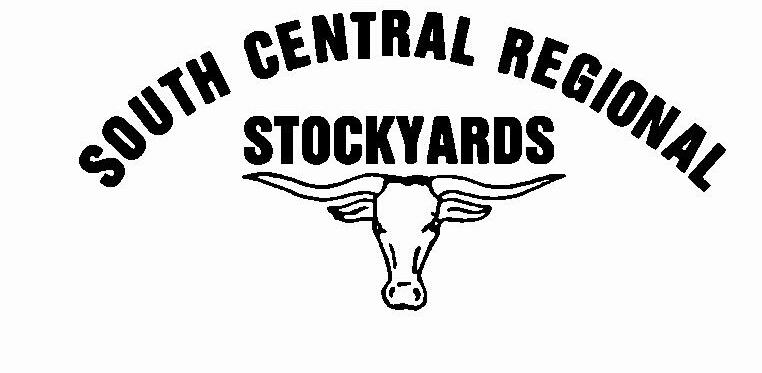
Evolving customer preferences, geographic differences and business capacity are important considerations for today’s farm and food businesses, Washburn said. The new publications were created to help businesses address those considerations.
“Post, Engage, Grow: A Social Media Primer” is for businesses that want to build a strong social media base. This guide helps readers choose the right platforms, identify their target customer, create a professional online presence and grow an engaged audience base.
“Harnessing Social Media To Drive Sales” takes businesses a step further, according to Mallory Rahe, MU Extension assistant professor. The guide helps readers move from simply “being online” to leveraging their social media as a tool to generate results. Business owners learn how to set goals, develop a content plan, craft effective social media content and evaluate performance.
“Many business owners attempt to post on social media but don’t see results,” said Rahe. “By following the considerations in the ‘Harnessing Social Media To Drive Sales’ guide, they can put a plan in place to maximize their time and effort on social media and see returns in their sales, web traffic or other conversion points.”
Washburn noted that whether businesses are just getting started or looking to refine their approach, these resources offer strategies to help them connect with customers and drive results.
Both publications are available for free download:
“Post, Engage, Grow: A Social Media Primer,” https://extension.missouri.edu/publications/g6225 “Harnessing Social Media To Drive Sales,” https://extension.missouri.edu/publications/g6229

Source: University of Missouri Extension
As the 2025 growing season approaches, many growers will consider using drones to spray their fields.
A new University of Missouri Extension publication, “Economics of Drone Ownership for Agricultural Spray Applications,” introduces cost-estimating tools for farmers and custom operators interested in investing in drones for spray applications.
“These tools enable producers to calculate their own drone application costs based on their specific circumstances, helping them make informed decisions about whether drone ownership or contracting out spray services is more cost-effective,” said Adauto Rocha, Jr., assistant extension professor in MU’s Division of Applied Social Sciences.
The publication provides a detailed analysis of the costs associated with owning and operating drones for agricultural spray applications, with a focus on the Agras T40 model. The study evaluates both ownership and operating costs per acre for farmers and custom operators, considering factors like depreciation, interest, maintenance, labor and battery costs.
The findings suggest that for farmers spraying 1,000 acres a year, the total cost per acre for drone applications is about $12.27. This contrasts with custom hire rates, which are typically around $16 per acre. Based on these calculations, owning a drone could be cost-effective for farms spraying at least 980 acres annually. However, for custom operators spraying 4,000 acres annually, the cost per acre is around $7.39.
Battery replacement contributes significantly to the overall expense of drone operations. The study emphasizes that ownership costs such as depreciation, interest and battery replacement constitute the largest


part of the total cost per acre. This highlights that the feasibility of drone ownership largely depends on the scale of operations and the number of acres sprayed annually.
Overall, the study offers insights into how drones can offer significant savings for large-scale farming operations, but it also underscores the importance of considering all associated costs when evaluating this technology.
The publication was developed by MU Agricultural Business and Policy Extension in collaboration with the MU Lee Greenley Jr. Memorial Research Farm in Novelty.
“Economics of Drone Ownership for Agricultural Spray Applications” is available for free download at https://extension.missouri.edu/publications/g1274.

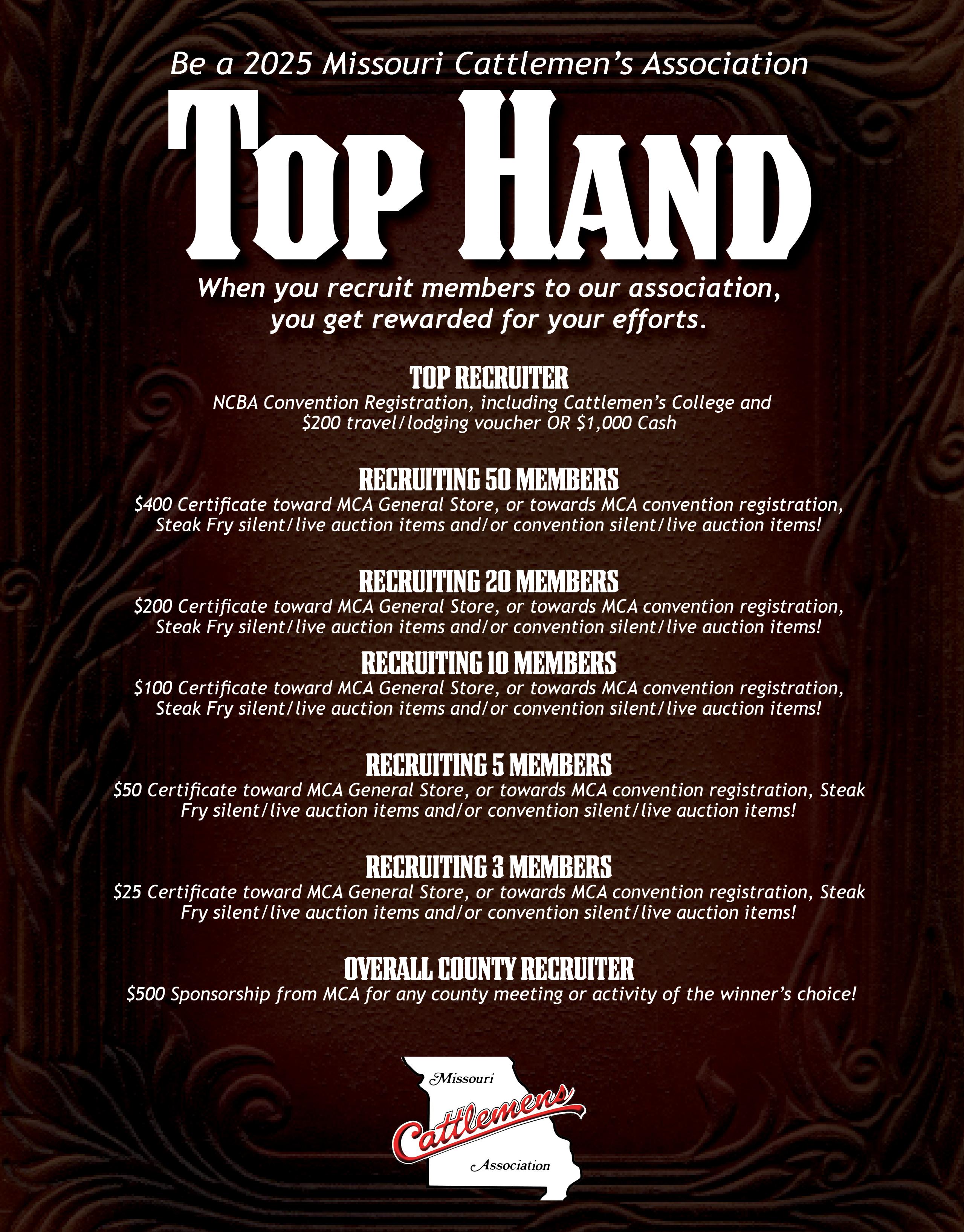
We’ve hit the midpoint of the legislative session, and it’s safe to say that 2025 has been a productive year for Missouri agriculture. While there’s still plenty of work ahead, there’s also a lot to feel good about. Critical issues like water exportation, agricultural tax credits, and appropriate taxation for solar farms are all making steady progress. As we push toward the finish line, we’re optimistic that this session will deliver meaningful wins for Missouri’s cattlemen and the broader ag industry.
One of the hottest topics this session has been water exportation. We all know how vital water is to our farms, ranches and rural communities. Ensuring Missouri’s water stays where it’s needed—supporting our livestock, crops, and families—has been a priority. Legislators are working through proposals that balance the needs of landowners and agricultural producers with responsible management of this critical resource. The conversations have been productive, and we’re hopeful that a fair, common-sense policy will emerge to protect Missouri’s water while respecting property rights.
Maintaining and expanding agricultural tax credits is important to our industry. These incentives help Missouri’s producers invest in their operations, adopt new technologies, and keep our farms viable for the next generation. This session, we’ve seen strong bipartisan support for renewing and enhancing key ag tax credits, ensuring they remain stable and predictable for years to come. There’s momentum behind the effort, and we’re confident that legislators recognize just how vital these credits are for Missouri’s rural economy.
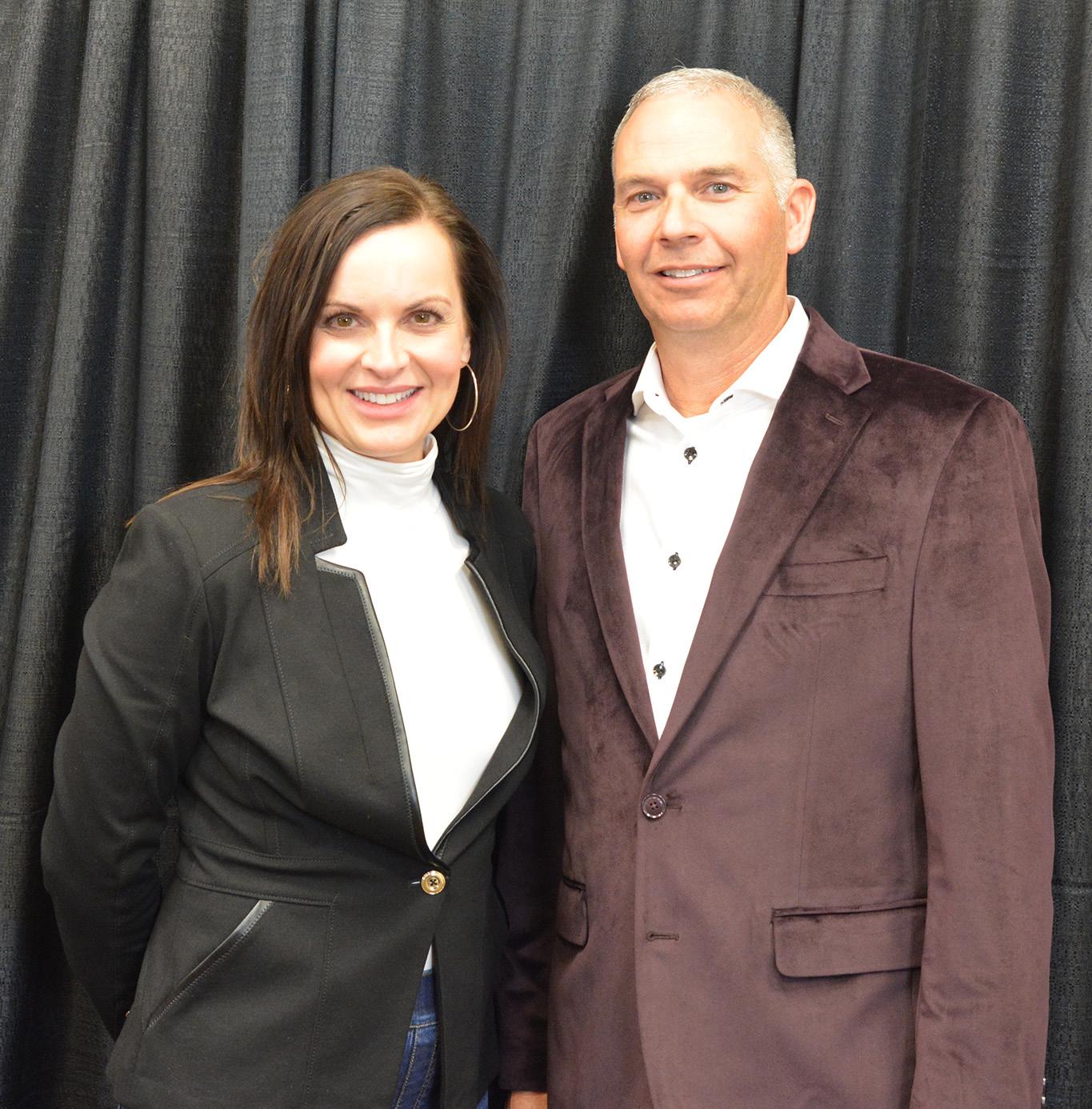
Renewable energy is an evolving issue in Missouri, and the growth of solar farms has brought new conversations about taxation and land use. We know that some landowners see solar leases as an opportunity, while others are concerned about long-term land preservation and the impact on local tax revenues. The good news? Lawmakers are working on a framework that ensures solar developments contribute fairly to local tax bases without placing an undue burden on agriculture. It’s a work in progress, but we’re encouraged by the willingness of all sides to find a balanced approach that respects landowners and rural communities alike.
If there’s one thing we’ve learned, it’s that nothing is guaranteed in the legislative process. Even the best ideas take time, compromise, and a lot of hard work to get across the finish line. That’s why MCA’s advocacy efforts remain as strong as ever. We’re having productive discussions with lawmakers, keeping Missouri’s cattlemen at the forefront of every debate, and ensuring rural voices are heard loud and clear.
As we enter the second half of the session, there’s every reason to be hopeful. Anchored by Cattlemen in the Capitol, we’ve built momentum, secured important allies, and kept the focus on policies that will strengthen Missouri agriculture for years to come. With continued engagement from our members and a strong finish at the Capitol, 2025 is shaping up to be a successful year for Missouri cattlemen.
Stay tuned, stay involved, and let’s bring it home!
Nancy and Cooper
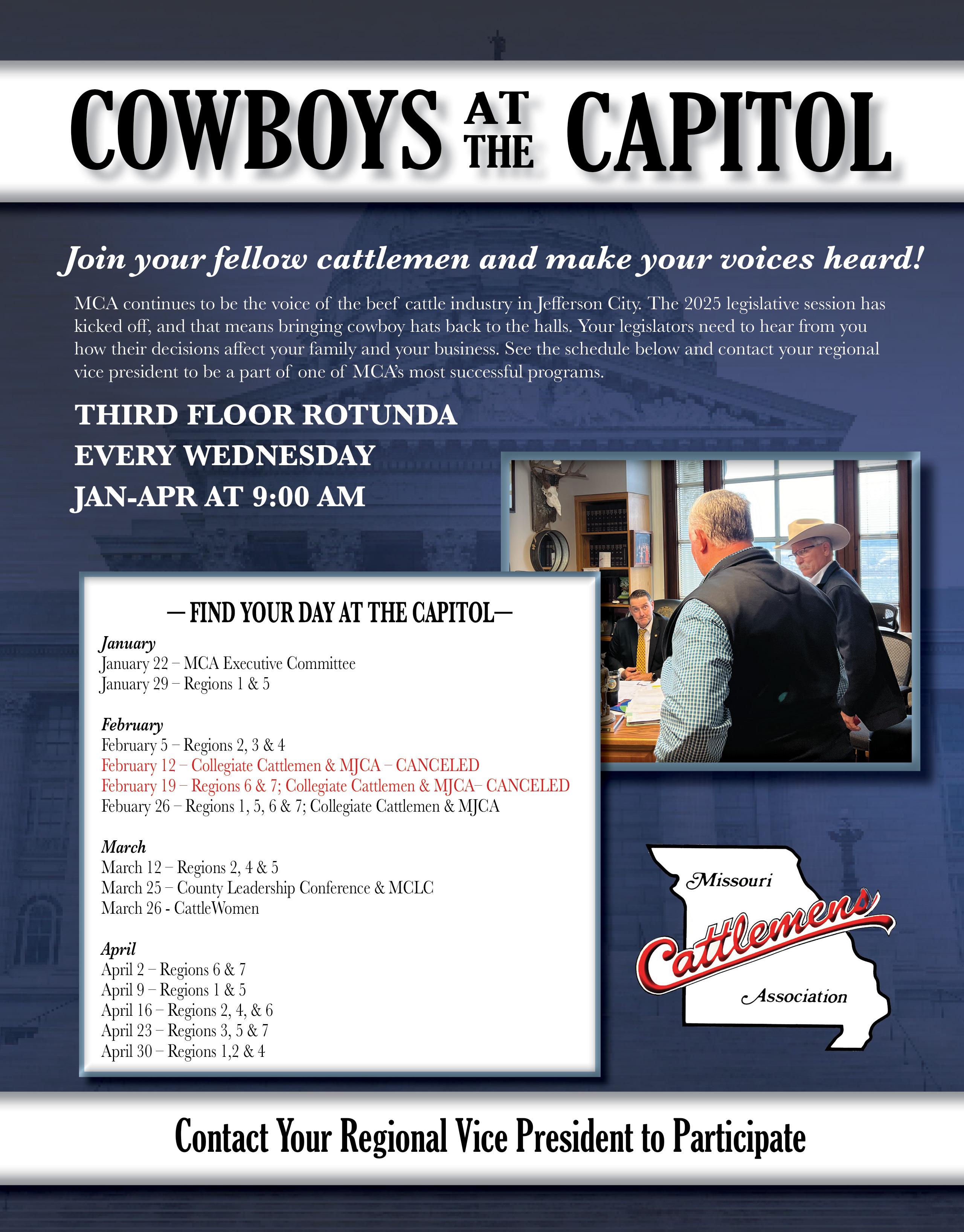

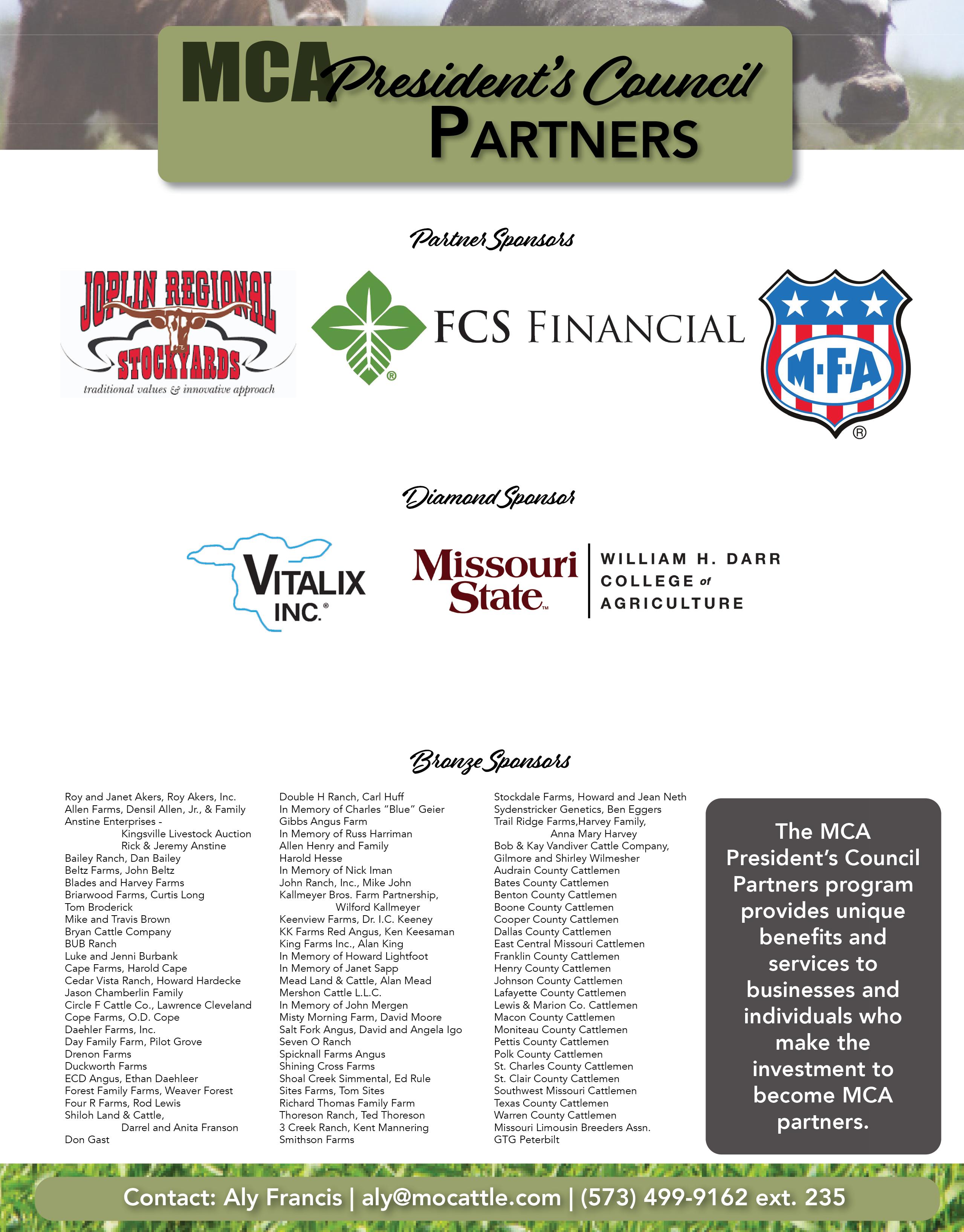

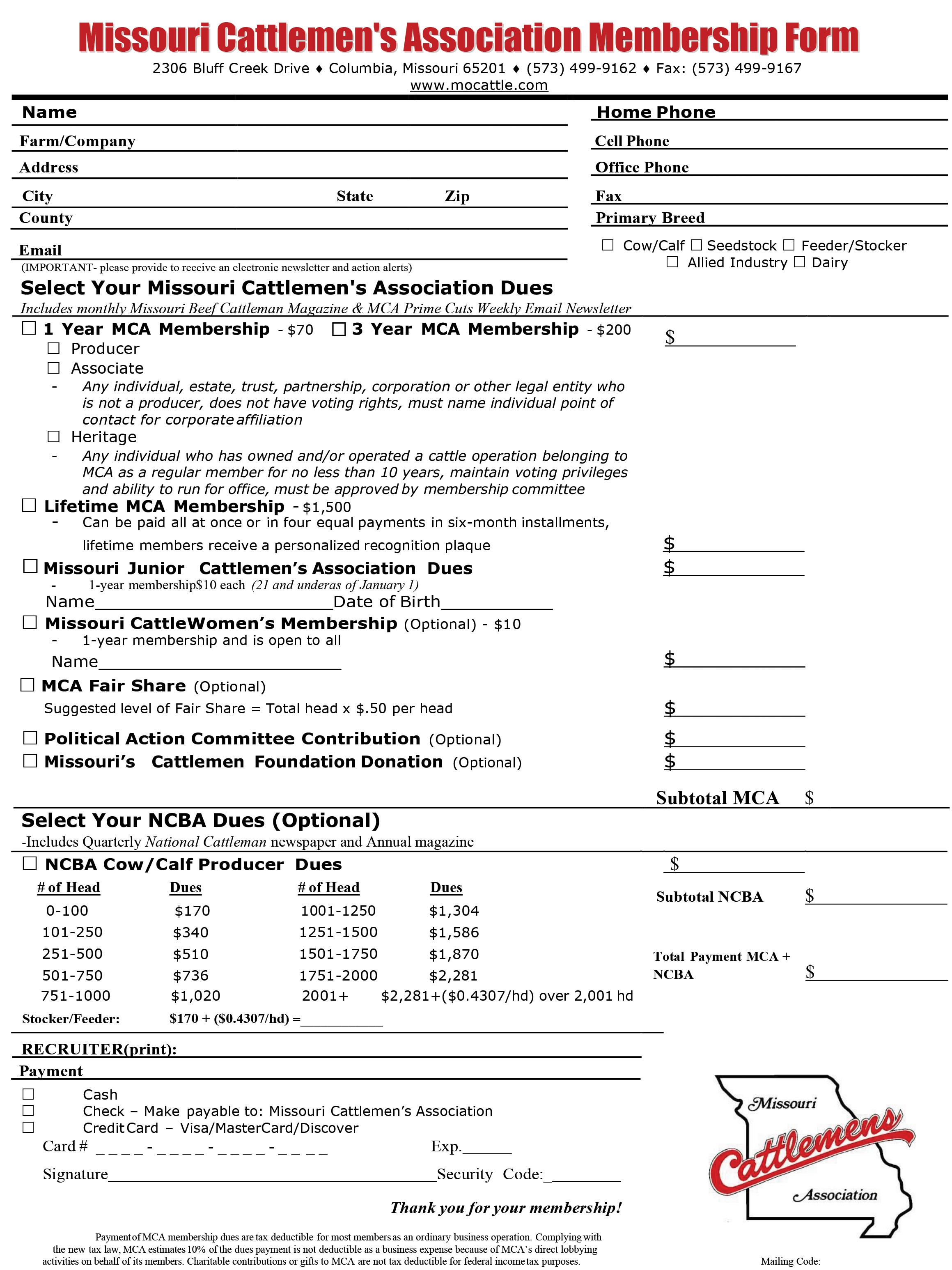



Missouri Angus Breeders’ Futurity
2.22.2025 • Columbia, MO
3 Total Registered Bulls Avg. $5,333
37 Total Registered Females Avg. $5,282
111 Embryos (no.) Avg. $687
40 Reported Sale Total Avg. $5,286
Post Rock Cattle Co. Annual Production Sale
2.22.2025 • Barnard, KS
Gelbvieh, Balancer & Angus Bulls ................ Avg. $6,478
Gelbvieh & Balancer Females ....................... Avg. $4,867
Jamison and Friends Hereford Bull Sale
2.28.2025 • Quinter, KS
108 Bulls Avg. $6,826
2S Angus
2.28.2025 • Seneca, MO
34 Older Bulls ............................................... Avg. $9,441
34 Total Registered Bulls............................... Avg. $9,441
5 Total Registered Females.......................... Avg. $12,050
1 Flush ......................................................... Avg. $30,000
39 Reported Sale Total Avg. $9,775
Mead Farms
3.1.2025 • Versailles, MO
145 Yrlg.Bulls Avg. $7,488
145 Total Registered Bulls Avg. $7,488
145 Reported Sale Total ............................... Avg. $7,488
Bredemeier Angus Farms
3.5.2025 • Stella, NE
43 Yrlg.Bulls
43 Total Registered Bulls
39 Total Registered Females
$5,895
$5,895
$5,057
5 Commercial Open Heifers (head) Avg. $3,300
5 Commercial Bred Cows (head) Avg. $4,000
92 Reported Sale Total Avg. $5,382
Express Ranches Spring Bull Sale
3.7.2025 • Yukon, OK
139 Older Bulls ........................................... Avg. $12,453
167 Yrlg. Bulls ............................................. Avg. $11,134
Wright Charolais 18th Annual Bull Sale
3.8.2025 • Kearney,
Galaxy
NE Arkansas Spring Sale
Hinkle’s Prime Cut Angus 3.17.2025 • Nevada, MO
Sandhill Farms Spring Production Sale 3.22.2025 • Haviland, KS 127 Hereford Bulls .......................................
April 1 T Bar S Online Female Sale
April 3
Hunter Angus Show Heifer Sale, Fair Grove, MO
April 4 Meyer Cattle Co. Sale Bowling Green, MO
April 5 Andras Red Angus Bull Sale, Manchester, IL
April 5 Four State Angus Association Sale Springfield, MO
April 5 Gardiner Angus Ranch Spring Production Sale, Ashland, KS
April 5 Peterson Farms Bull Sale, Mountain Grove, MO
April 5 Gilbert Cattle Co Sale, Oldfield, MO
April 5 The Gathering at Shoal Creek Sale, Excelsior Springs, MO
April 5 Red Doc Farm Bull Sale, Bosque, NM
April 7 Brockmere Sale, New Cambria, MO
April 12 Ozark & Heart of America Beefmaster Sale, Springfield, MO
April 12 Fink Beef Genetics Sale, Randolph, KS
April 12 Kranjec Valley Angus Private Treaty Spring Sale, Marquand, MO
April 12 Lucas Cattle Co. Spring Bull Sale, Cross Timbers, MO
April 15 Sydenstricker Influence Sale, New Cambria, MO
April 17-18 NextGen Cattle Co. Flint Hills Spring Classic Sale, Paxico, KS
April 19 New Day Genetics Sale, Salem, MO
April 26 Great American Pie Limousin Sale, Lebannon, MO
April 26 Heart of the Ozarks Angus Sale, West Plains, MO
April 26 Cow Camp Ranch Turn Out Sale, Lost Springs, KS
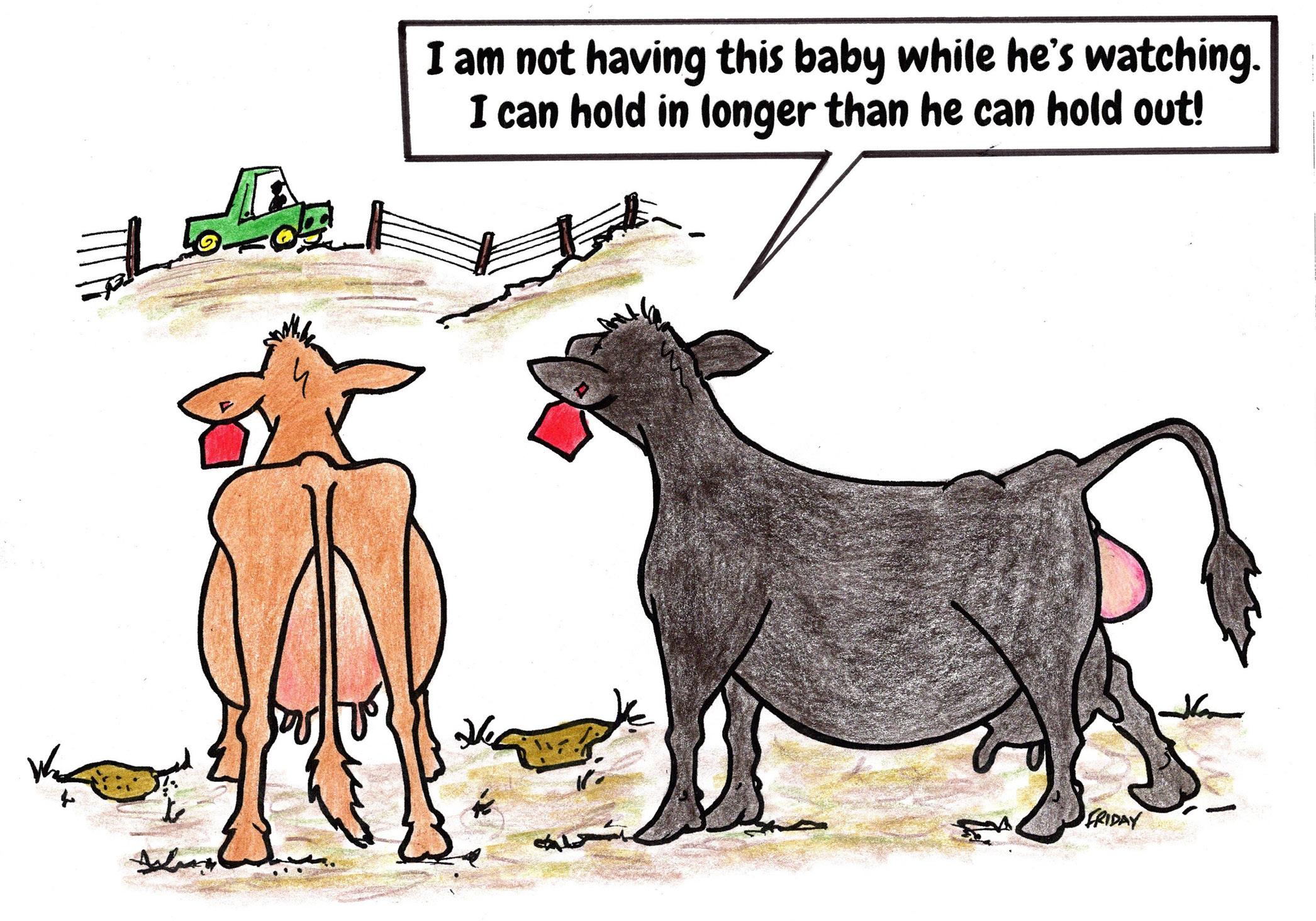
April 27
April 30
Show-Me Reds Bull & Female Sale, Springfield, MO
HeartBrand Cattle Family Matters
Online Sales Event Vol. II on LiveAg
May 2 SEMO SMS Sale, Fruitland, MO
May 3-10 Missouri Beef Days, Bolivar, MO
May 3 Passion for Prime Wagyu Sale, Hale, MO
May 5
Gardiner Angus Ranch Meating Demand Sale, Ashland, KS
May 9 SMS Sale, Farmington, MO
May 10 Mead Farms Female & Bull Production Sale, Versailles, MO
May 15 Southwest Missouri SMS Sale, Carthage, MO
May 17 South Central Missouri SMS Sale, Vienna, MO
June 7 Eastern Missouri SMS Sale, Palmyra, MO
June 8-13 Red Angus Youth Expo, Springfield, MO
June 14 Replacement Heifer Sale @ the Missouri Cattlemens Youth Expo, Sedalia, MO
June 14 MCA 22nd Annual Cattlemen’s Steak Fry PAC Auction, Sedalia, MO
June 19
Value-Added Sale at JRS, Carthage, MO
Sept. 4-6 Stockmanship & Stewardship, Springfield, MO
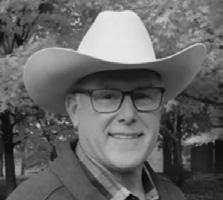
Mike Williams Higginsville, MO
816-797-5450
mwauctions@ctcis.net

The MBC Classified column appears monthly. Classified advertising is only 50¢ per word. Send your check with your ad to Missouri Beef Cattleman, P.O. Box 480977, Kansas City, MO 64148. Deadline 15th of month before an issue.
“REESE” DISC MOWERS, CADDY V-RAKES, “REESE” TUBE-LINE BALE WRAPPER, AITCHISON DRILLS, SELF-UNLOADING HAY TRAILERS, HEAVY DUTY BALE AND MINERAL FEEDERS, FEED BUNKS, BALE SPIKES, CONTINUOUS FENCING, COMPLETE CORRAL SYSTEMS, INSTALLATION AVAILABLE: Tigerco Distributing Co. 660-645-2212, 800-432-4020 or www.tigercoinc.com.
BLACK SIMMENTAL BULLS SINCE 1993: Calving Ease, Attractive, Athletic, Sound Footed and Docile. We Deliver. Mike Williams, Higginsville, 816-797-5450
SYCAMORE CREEK SIMANGUS BULLS & BRED HEIFERS FOR SALE. Great EPDs. Wayne and Anita Vanderwert -15 minutes from Columbia. 573-808-3000 or 303-506-3508
HORNED HEREFORD BULLS. Large frame, add weaning weight and good disposition. 10 miles south of Warrensburg. ET Herefords. David Bernt 660-238-2395. Tim Bernt 816-517-4102.
